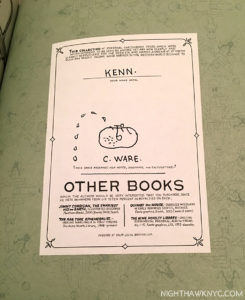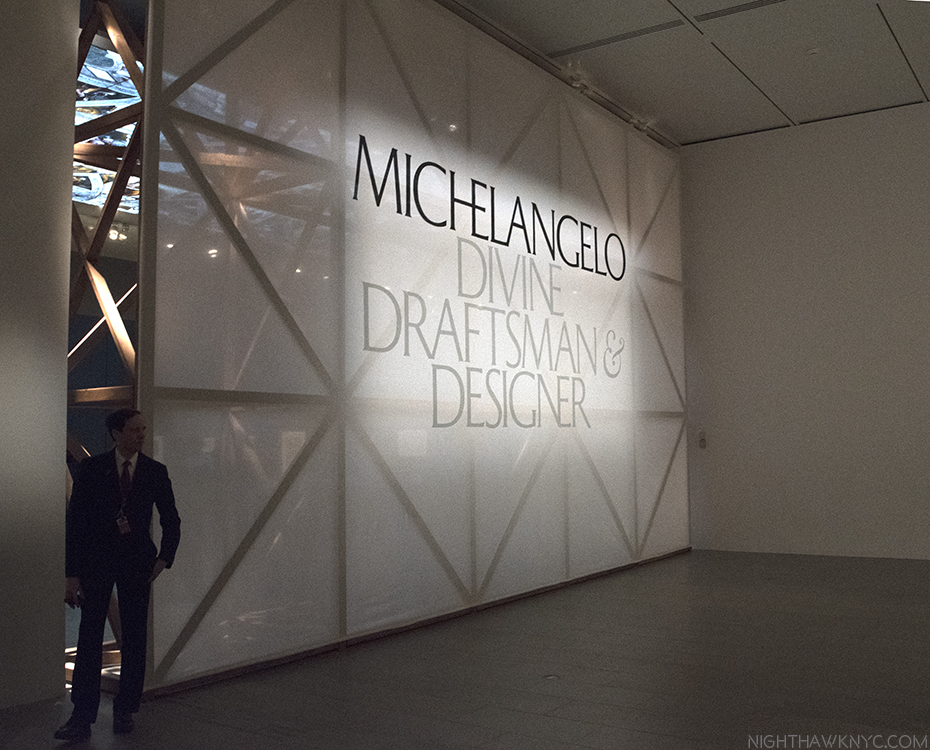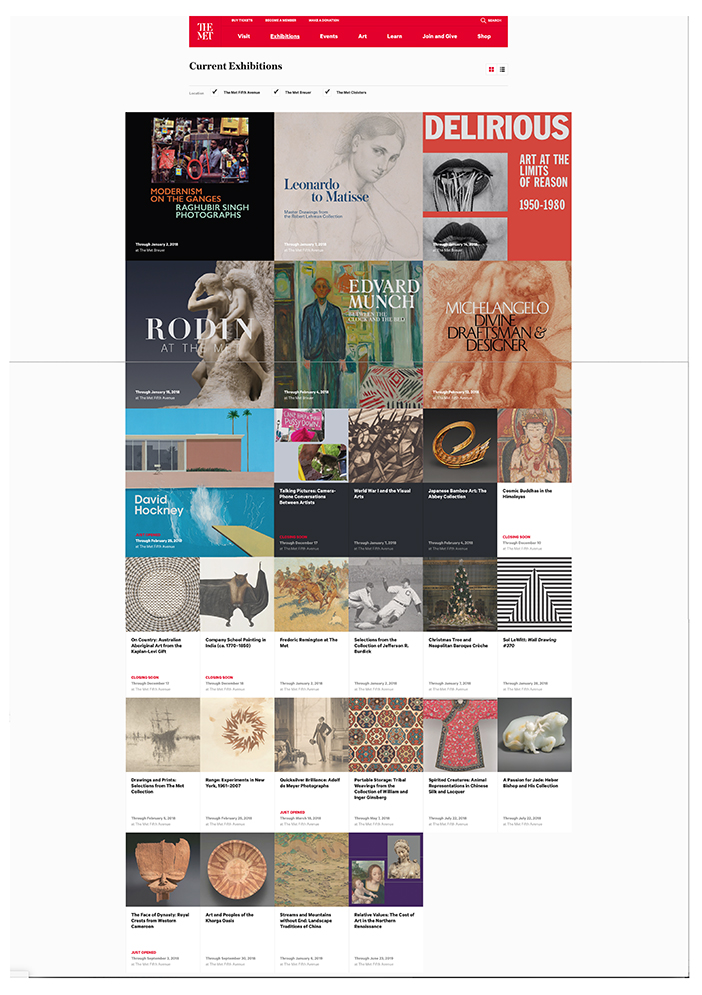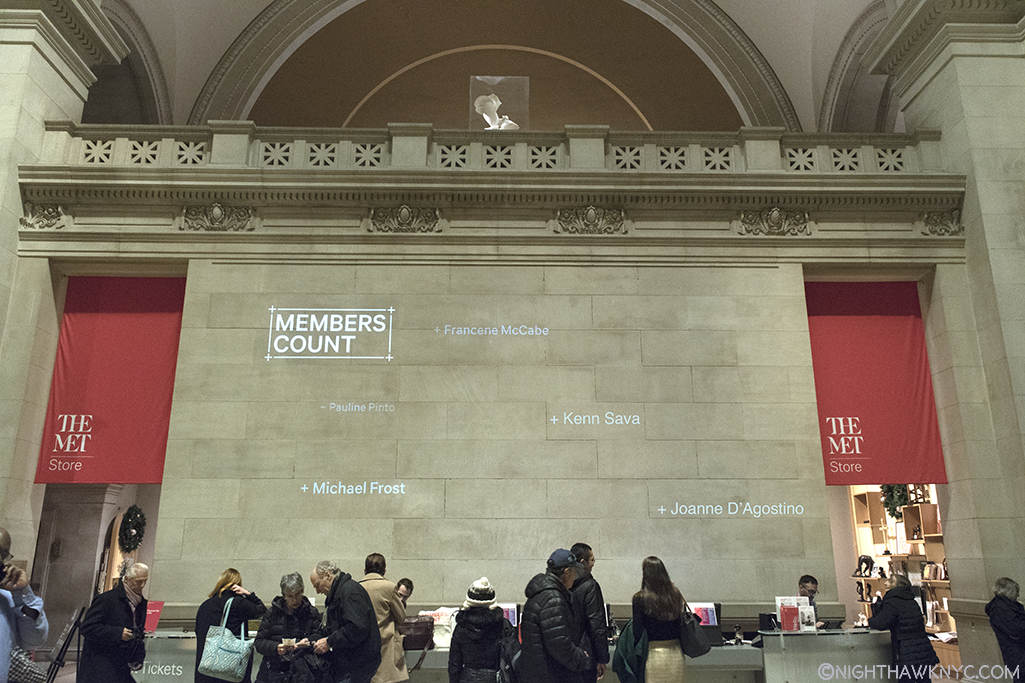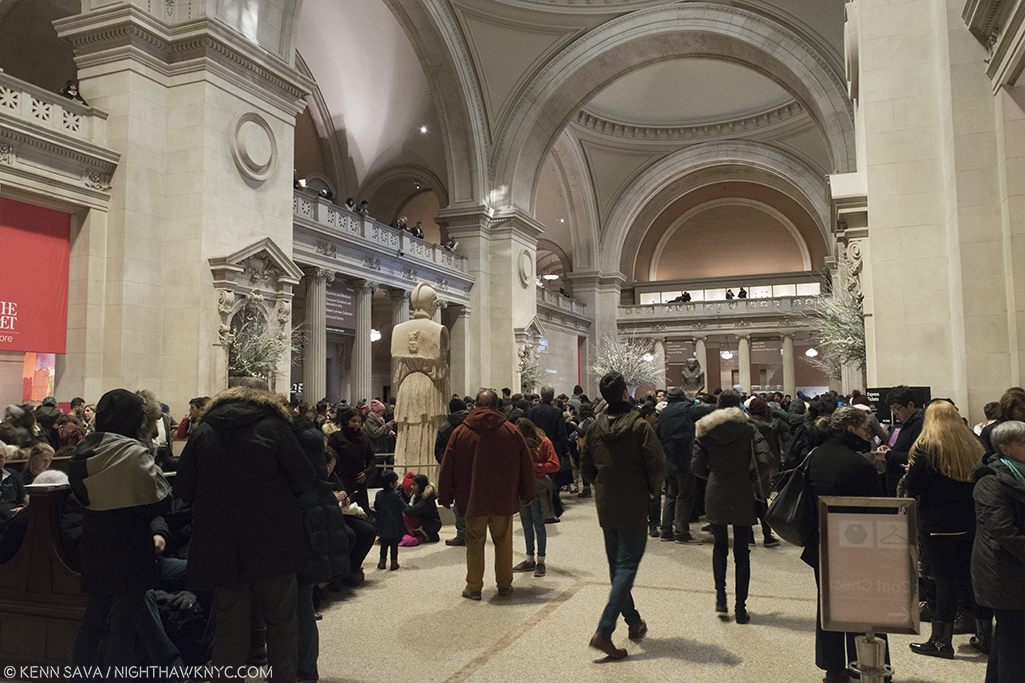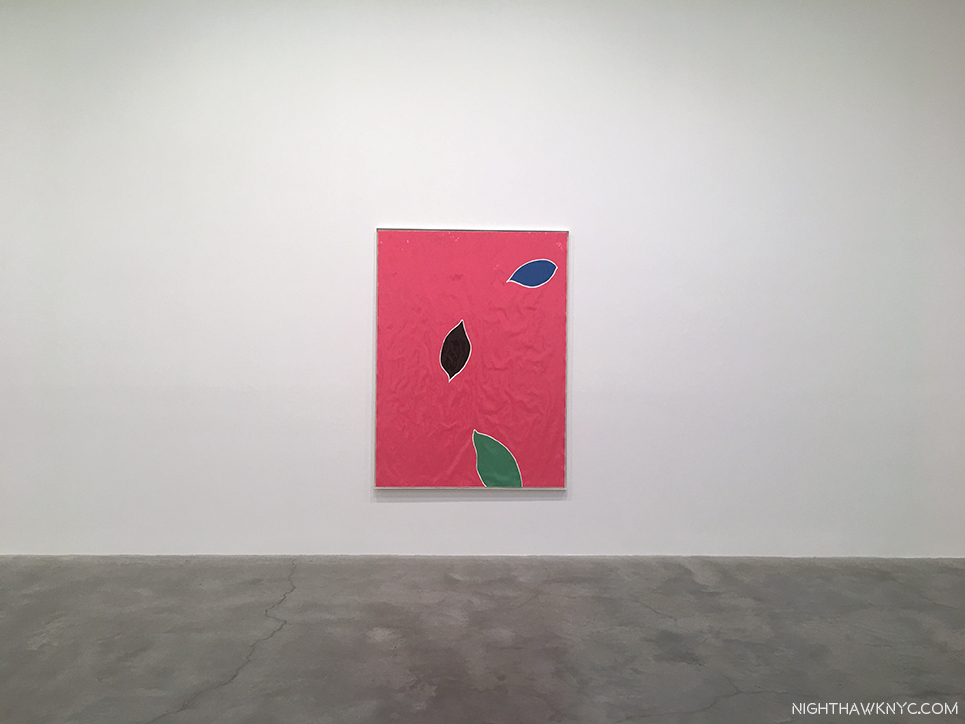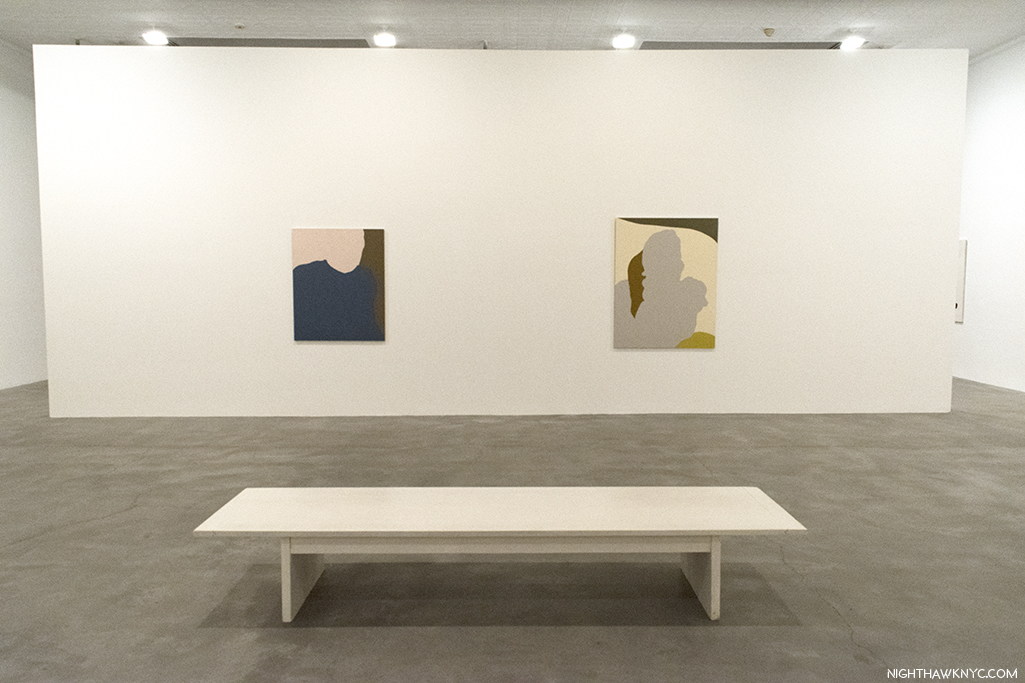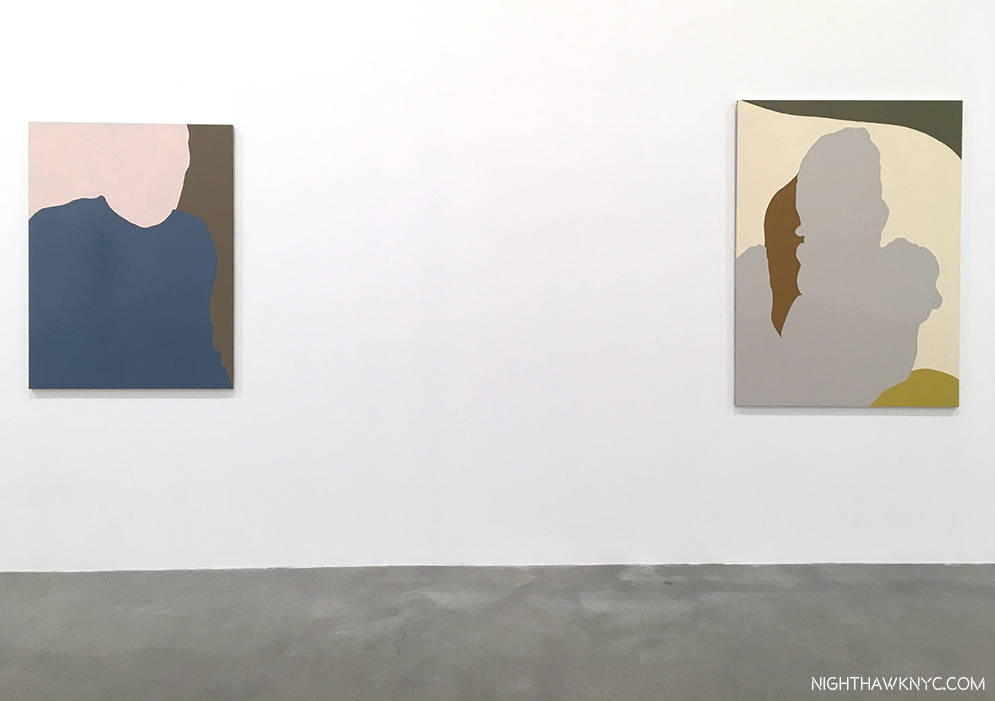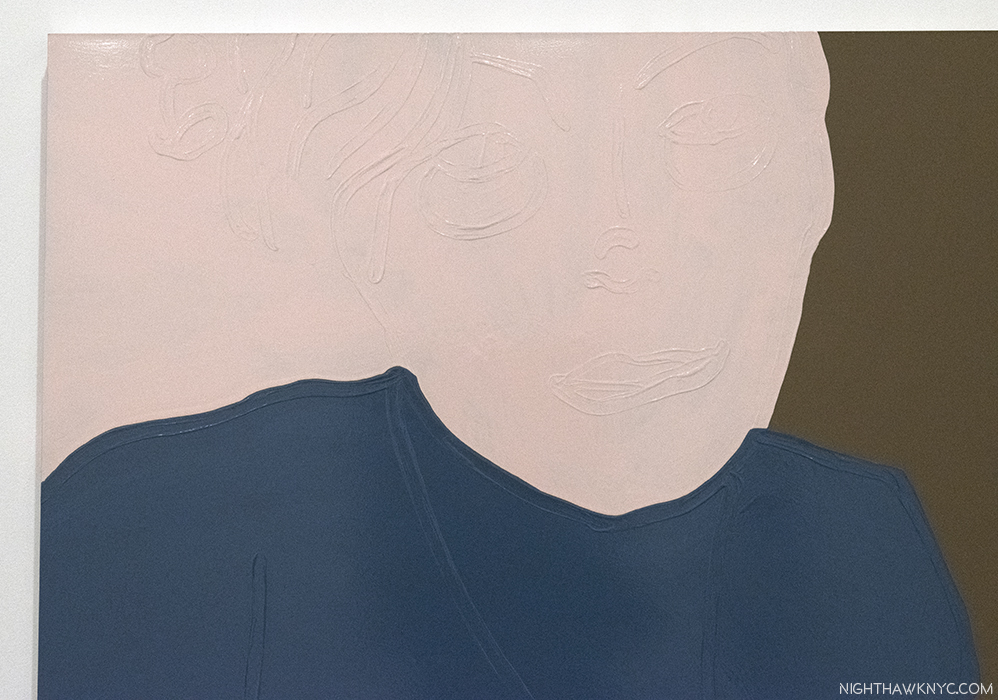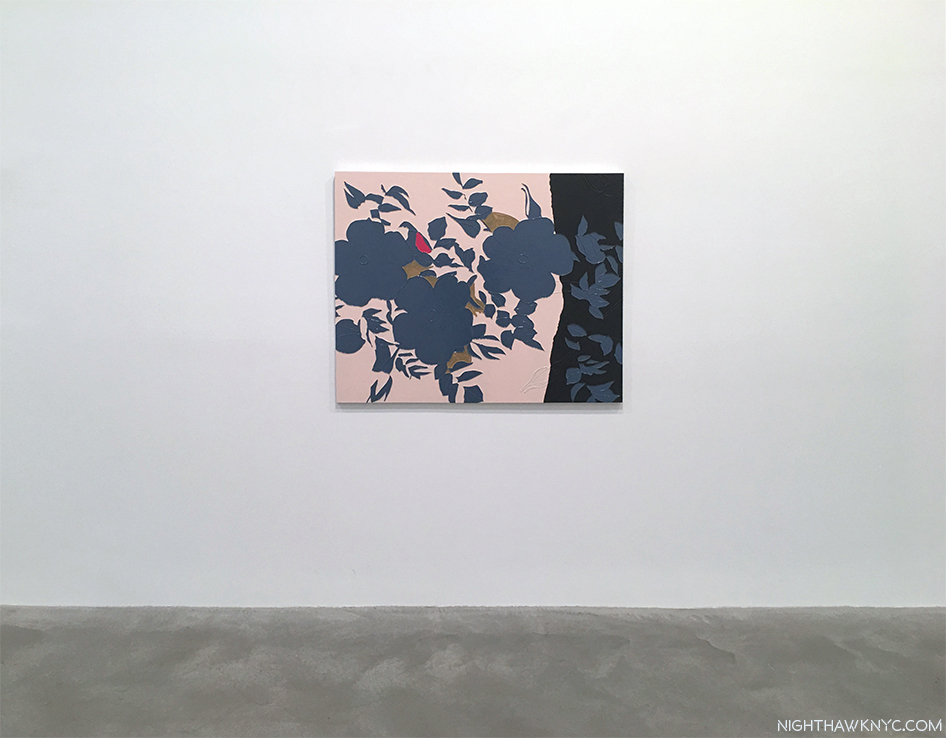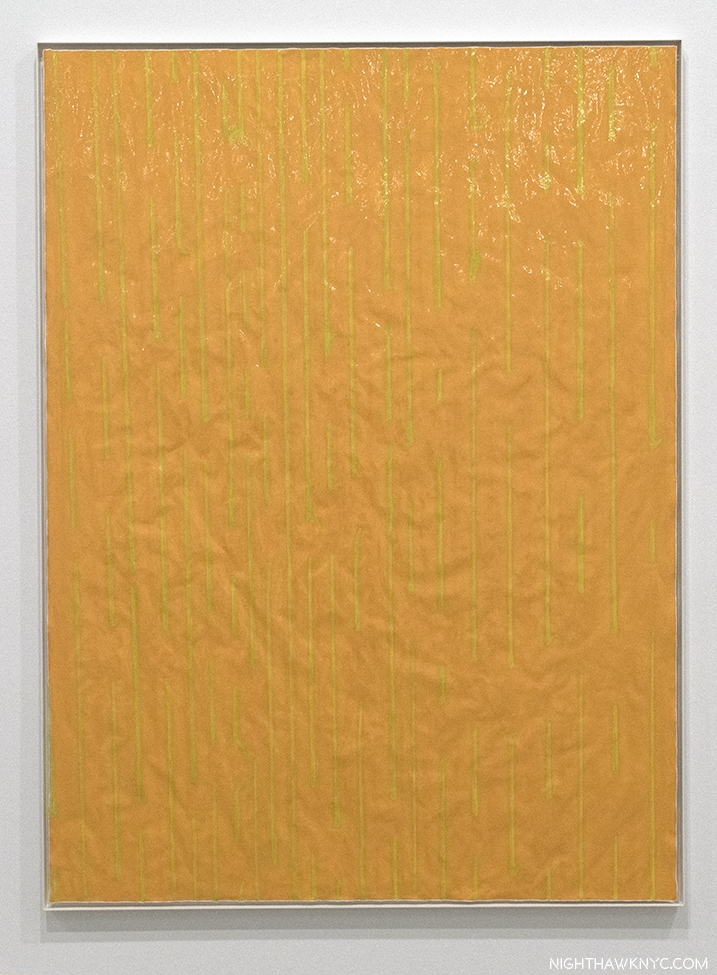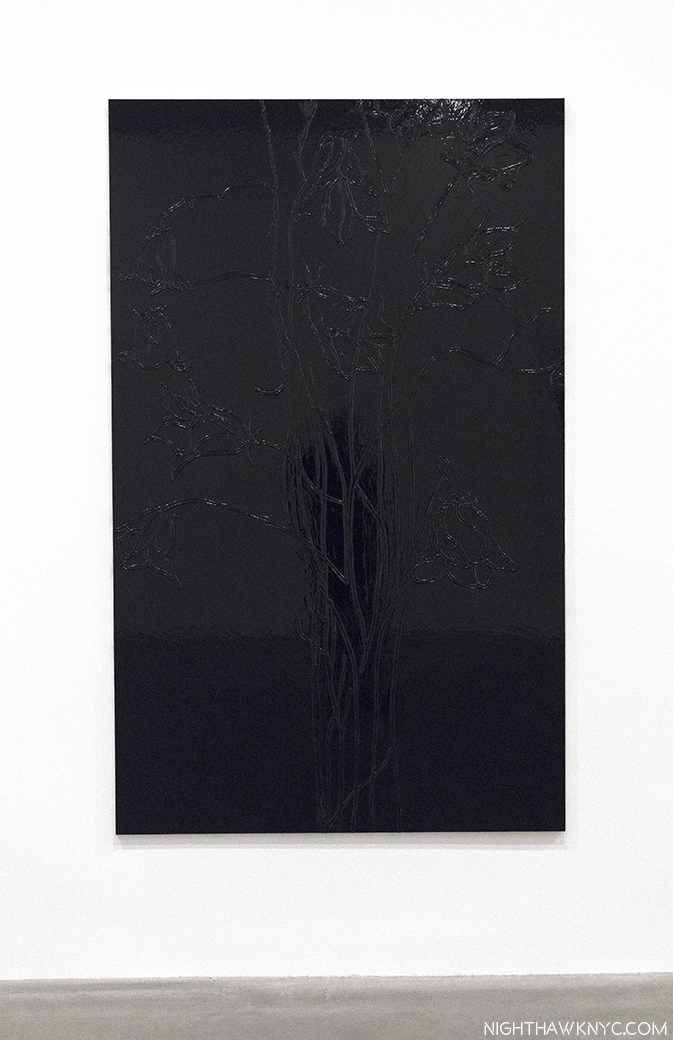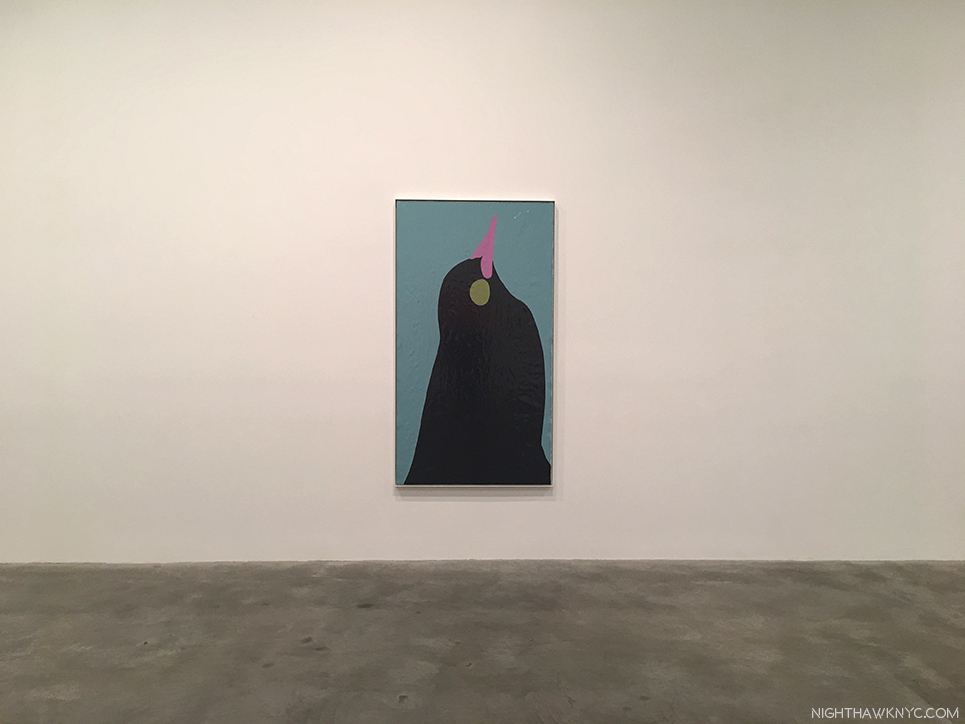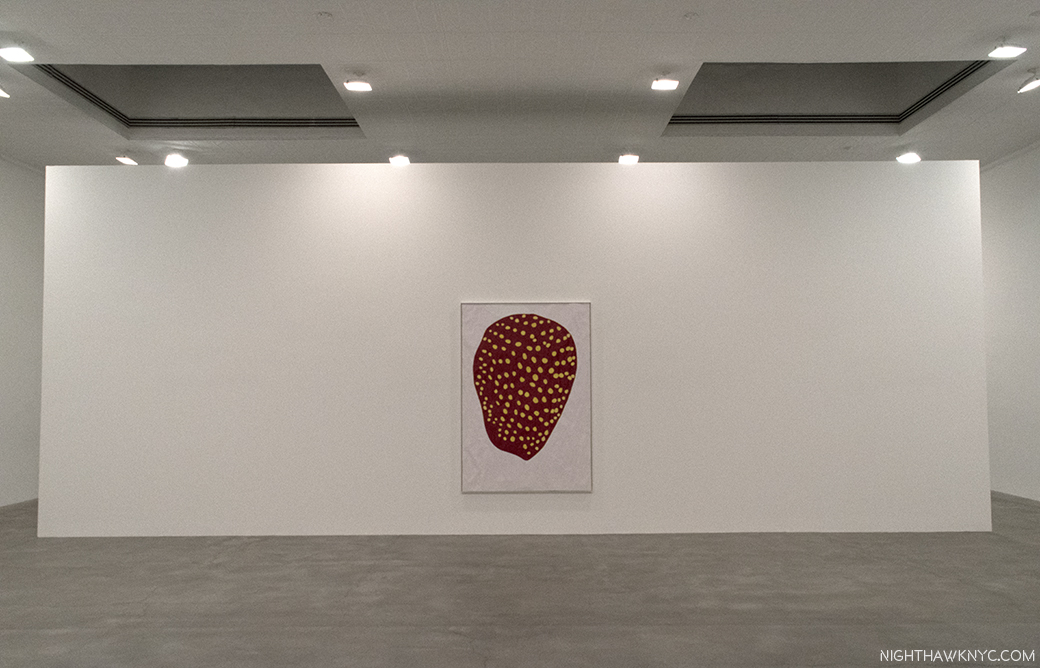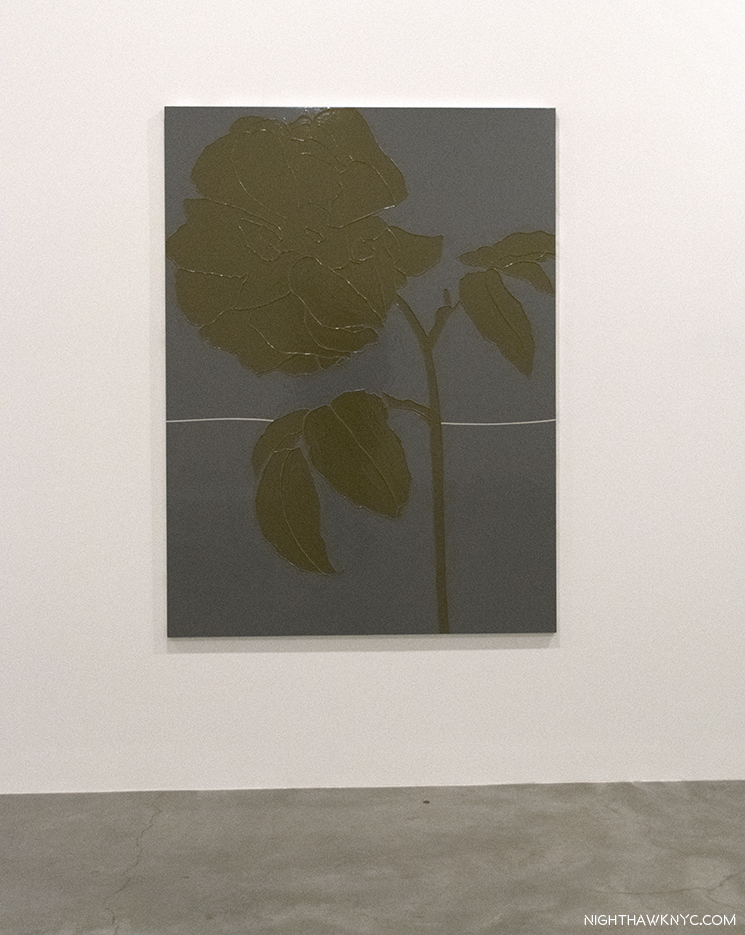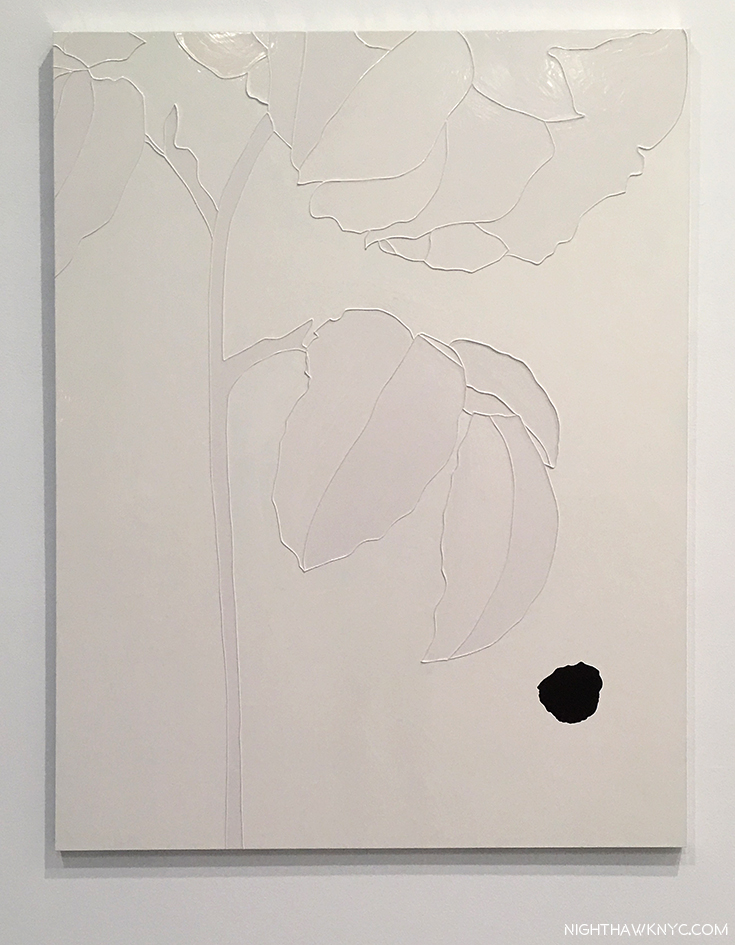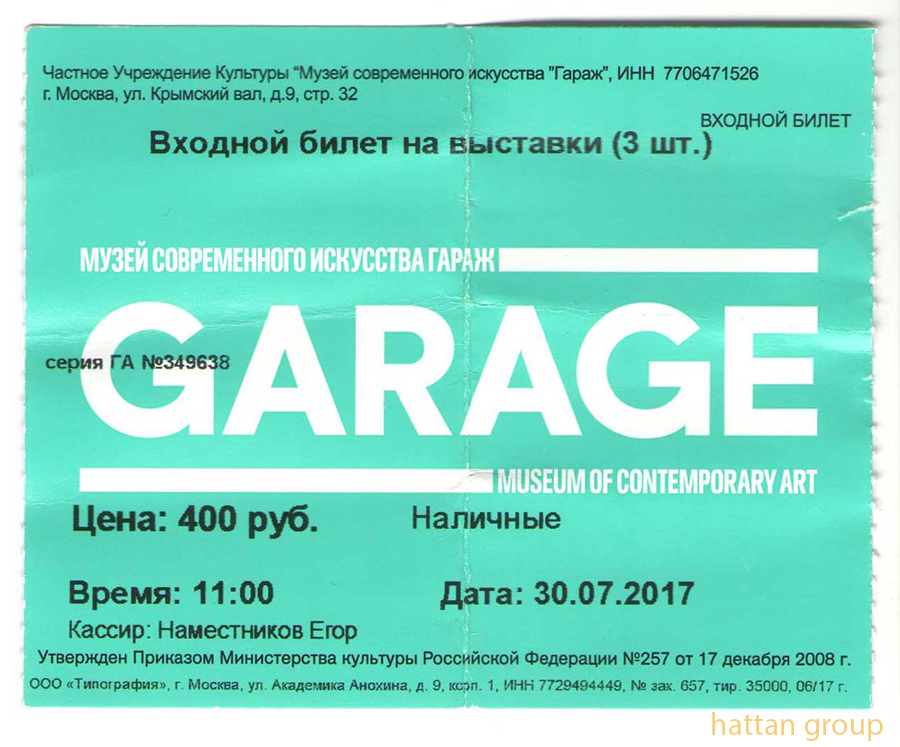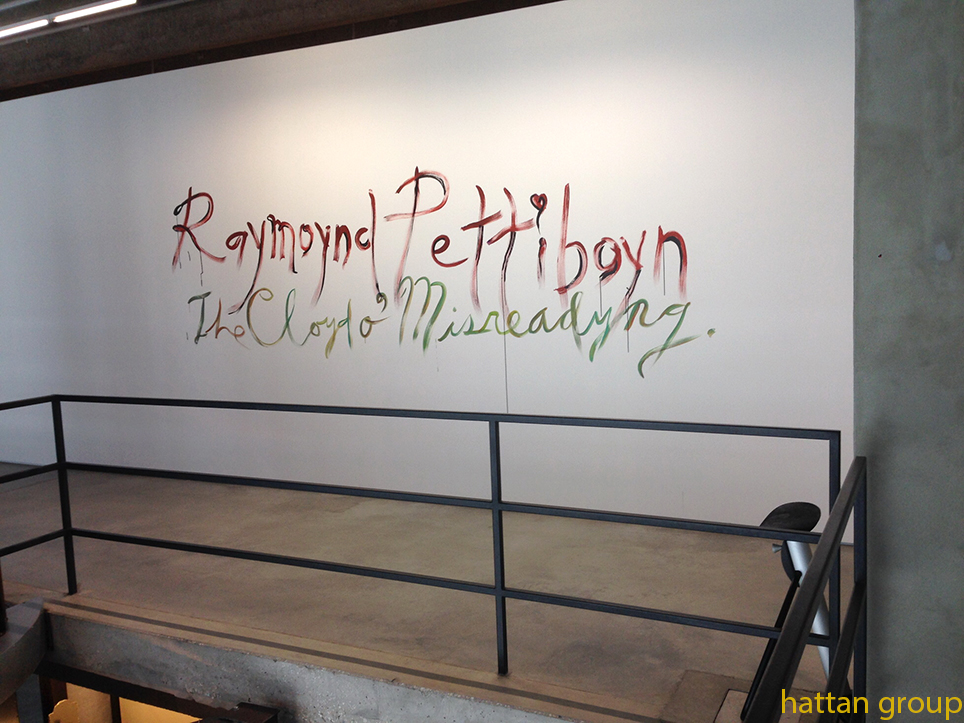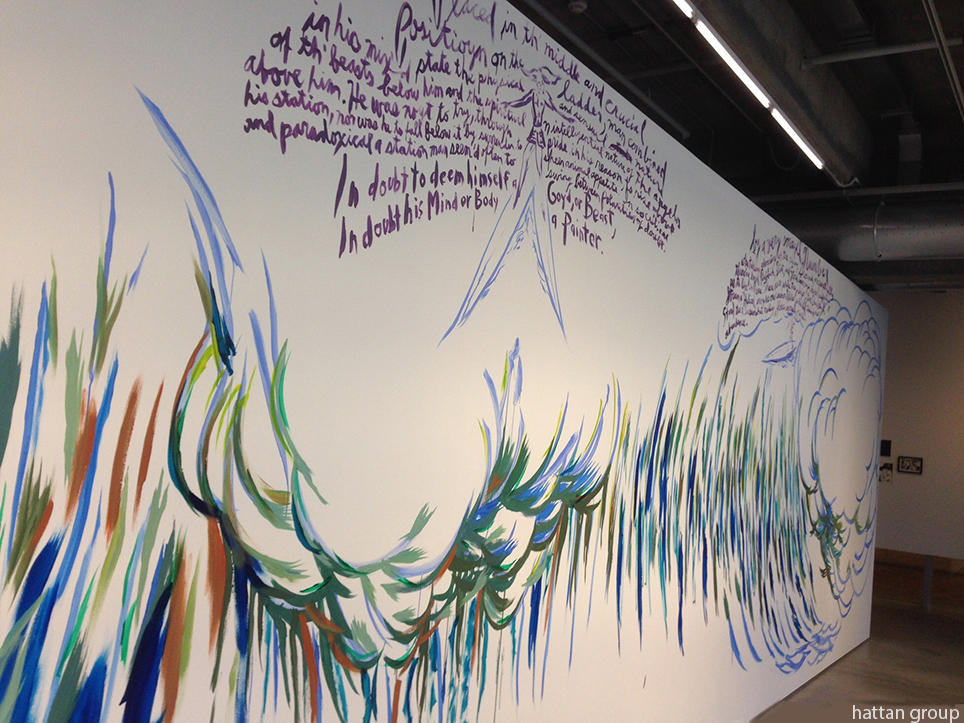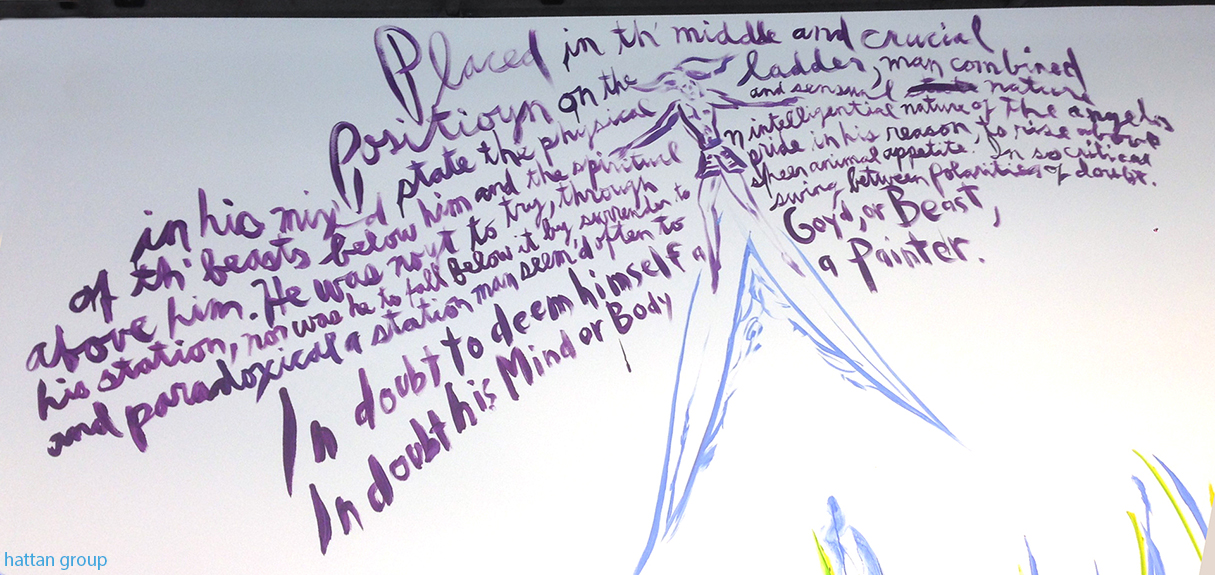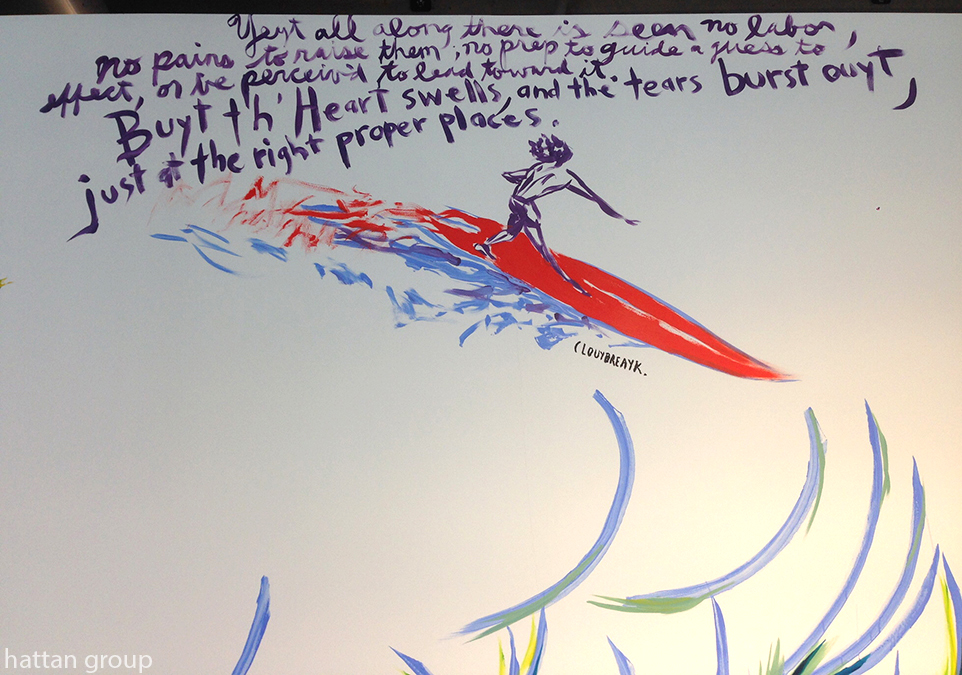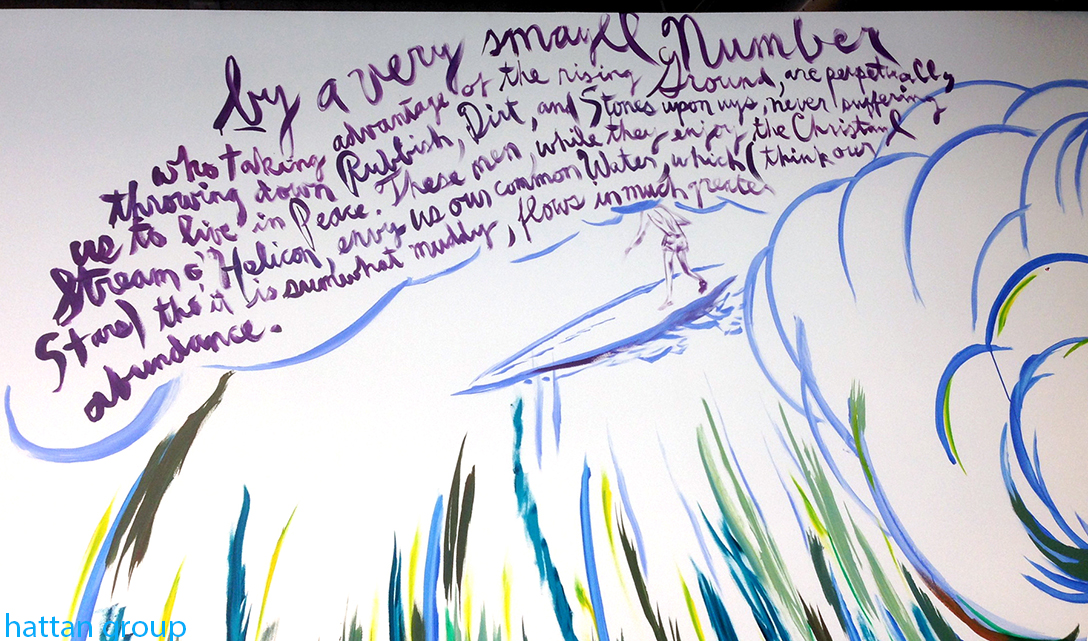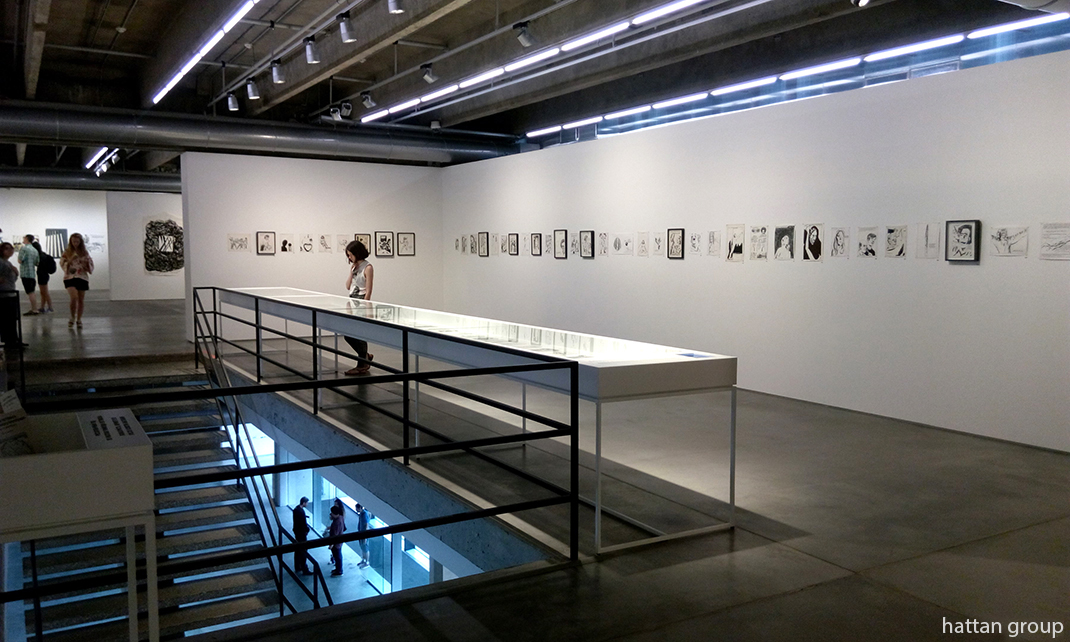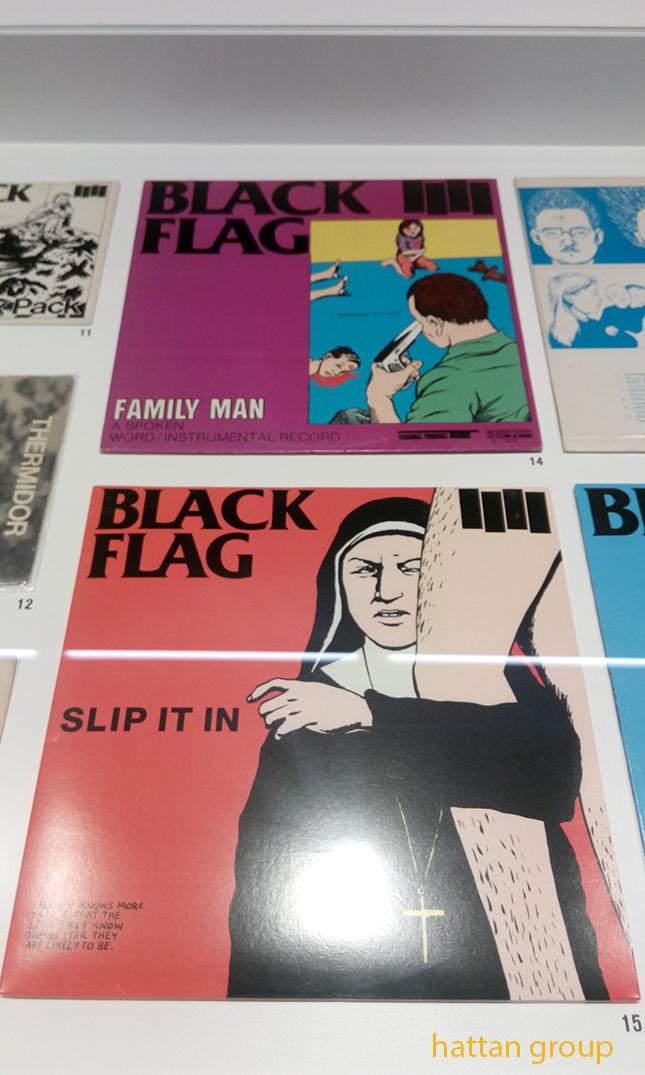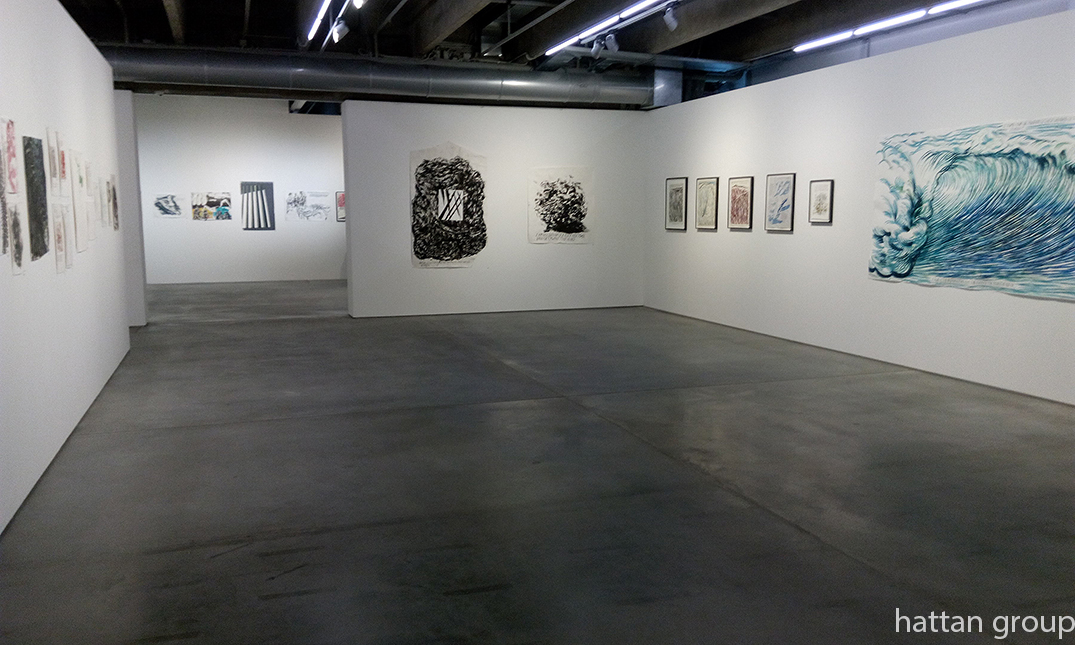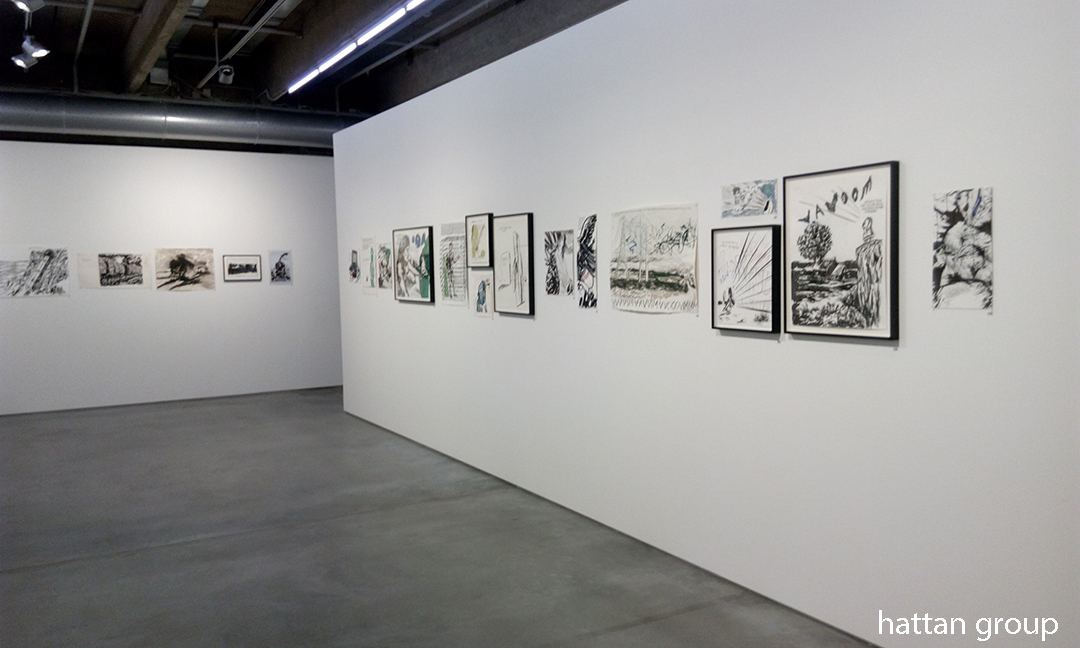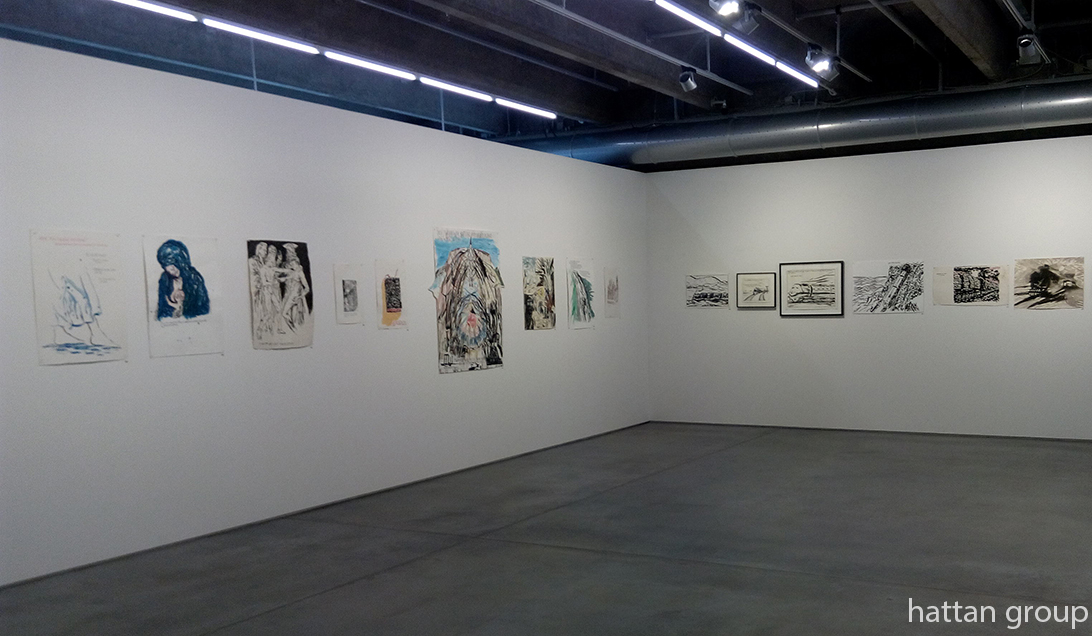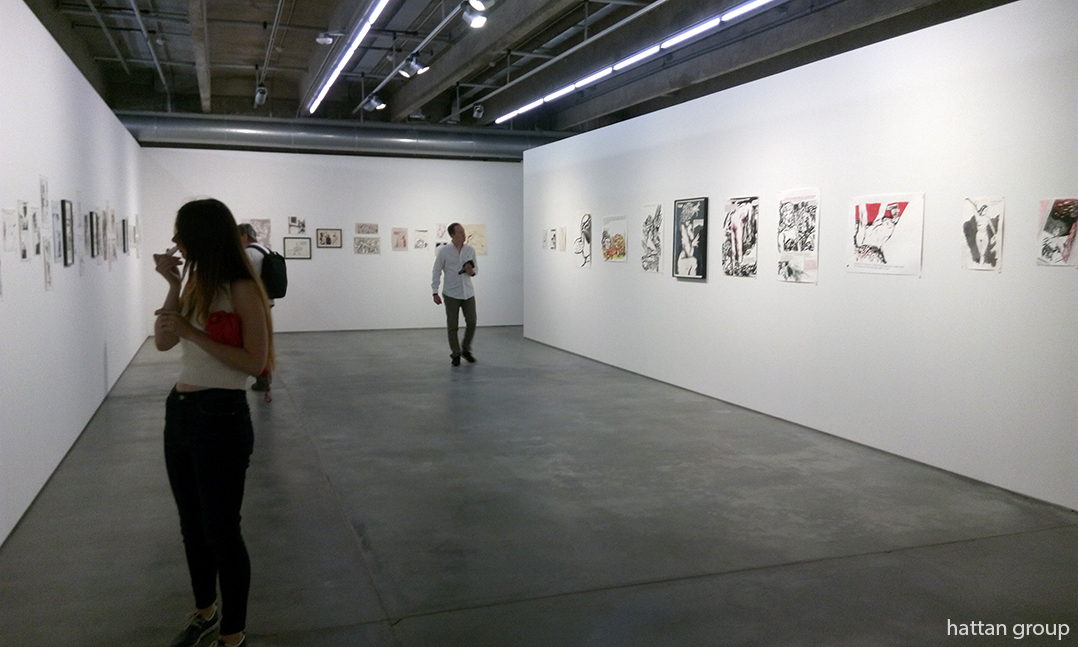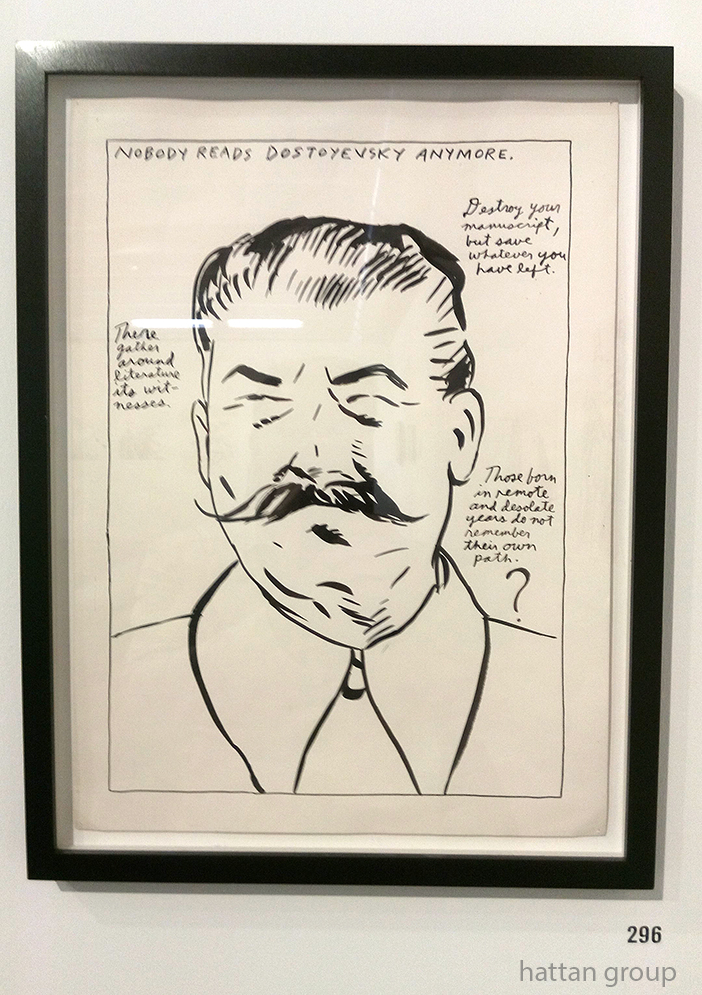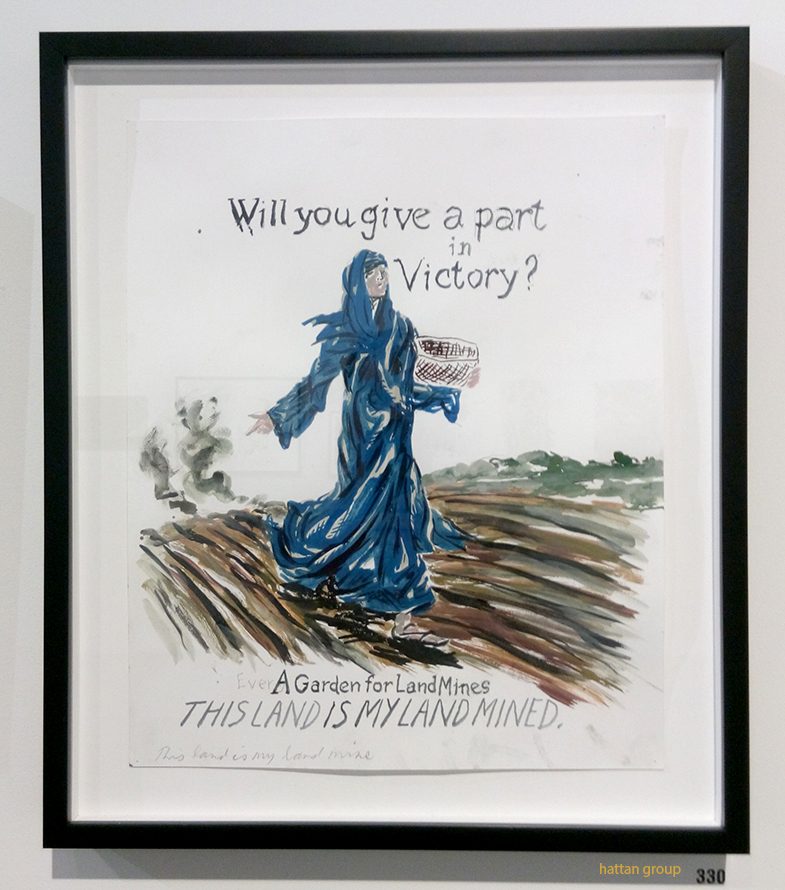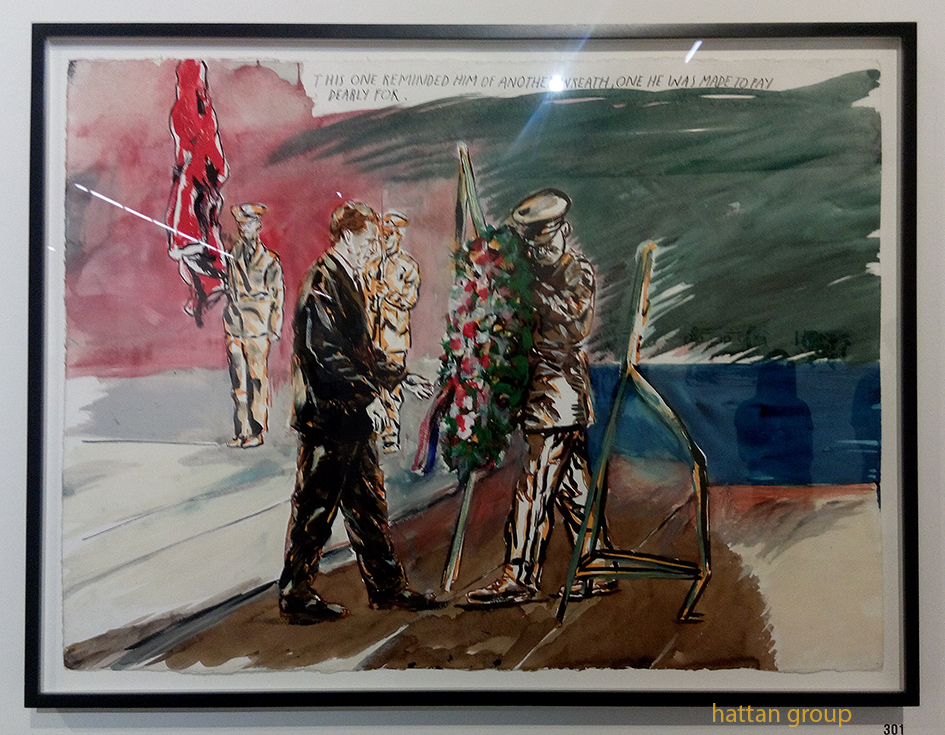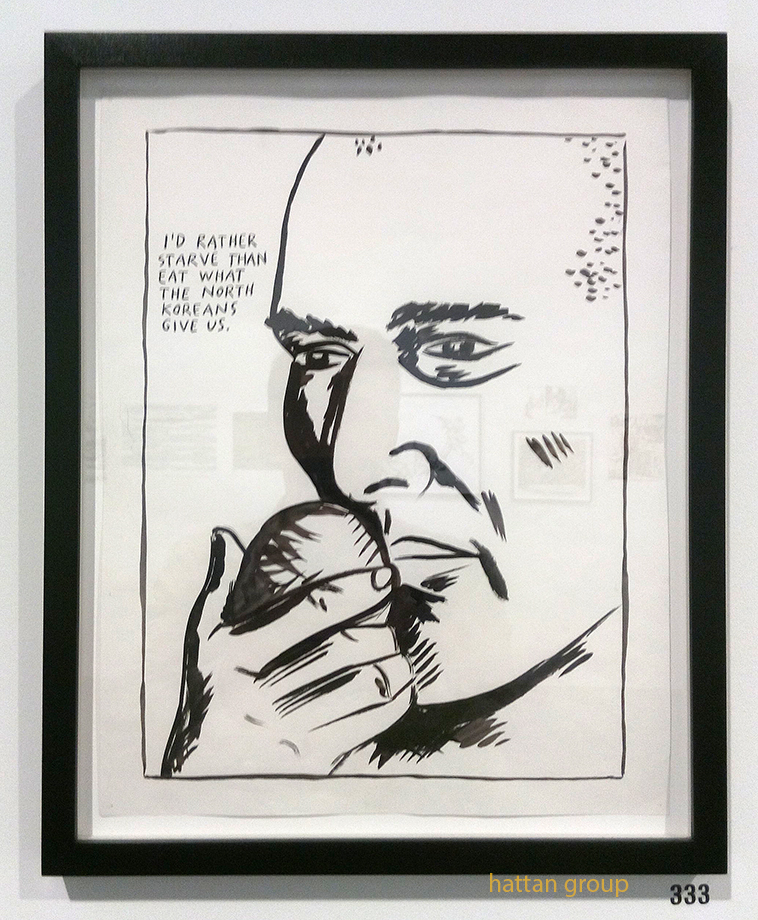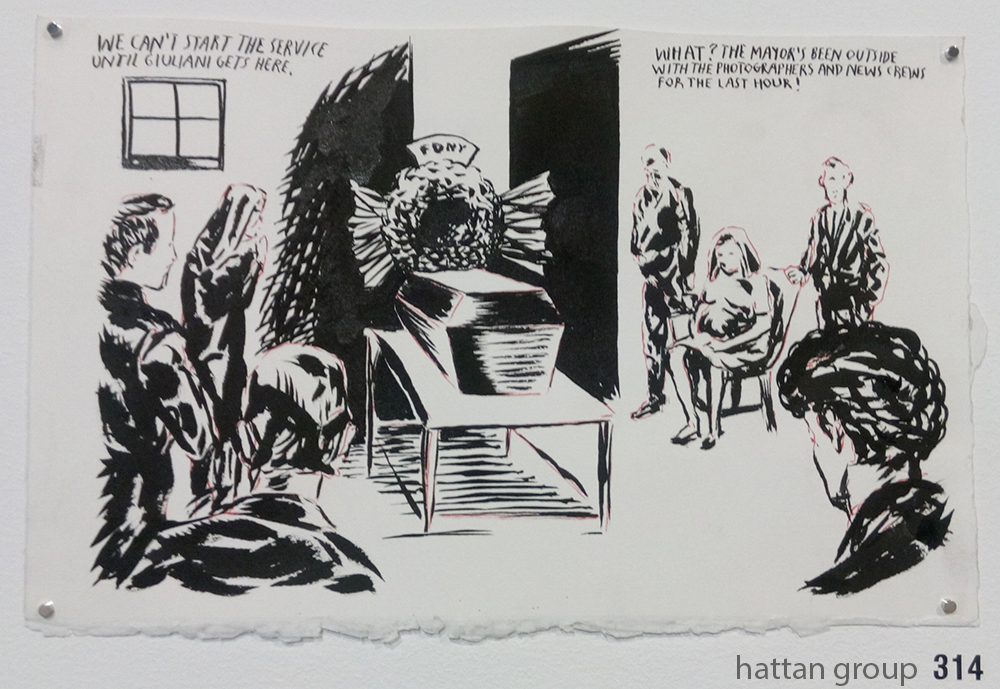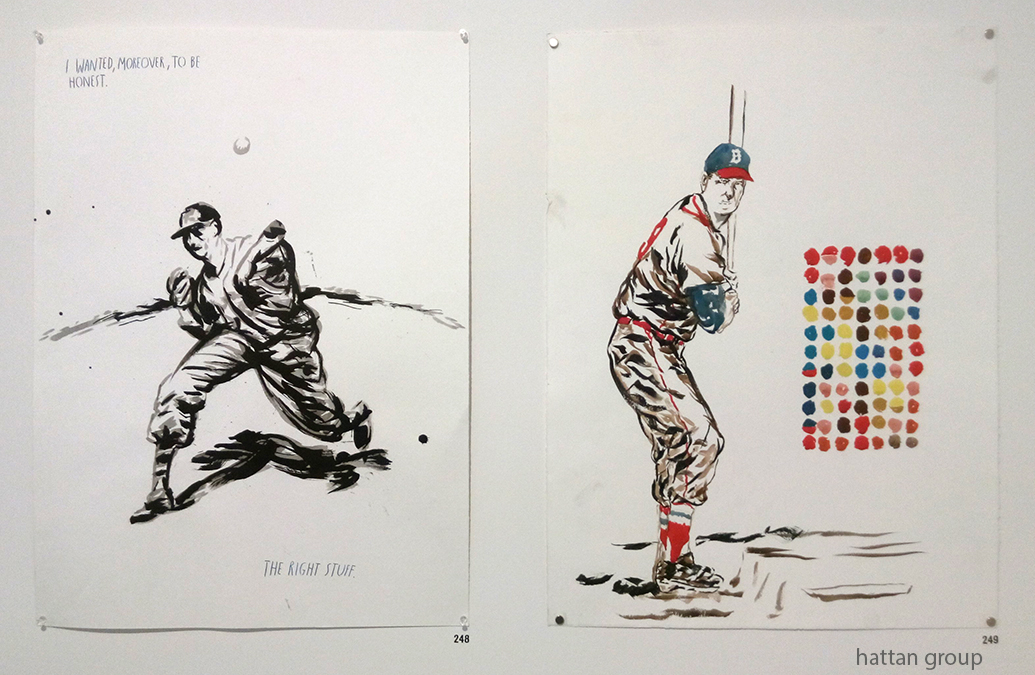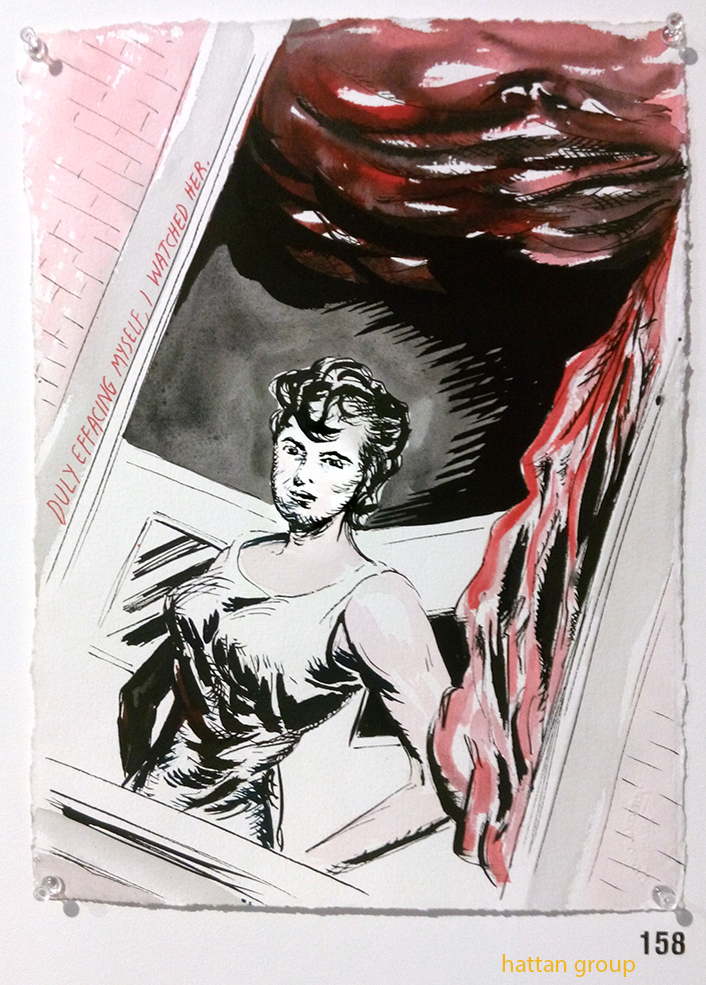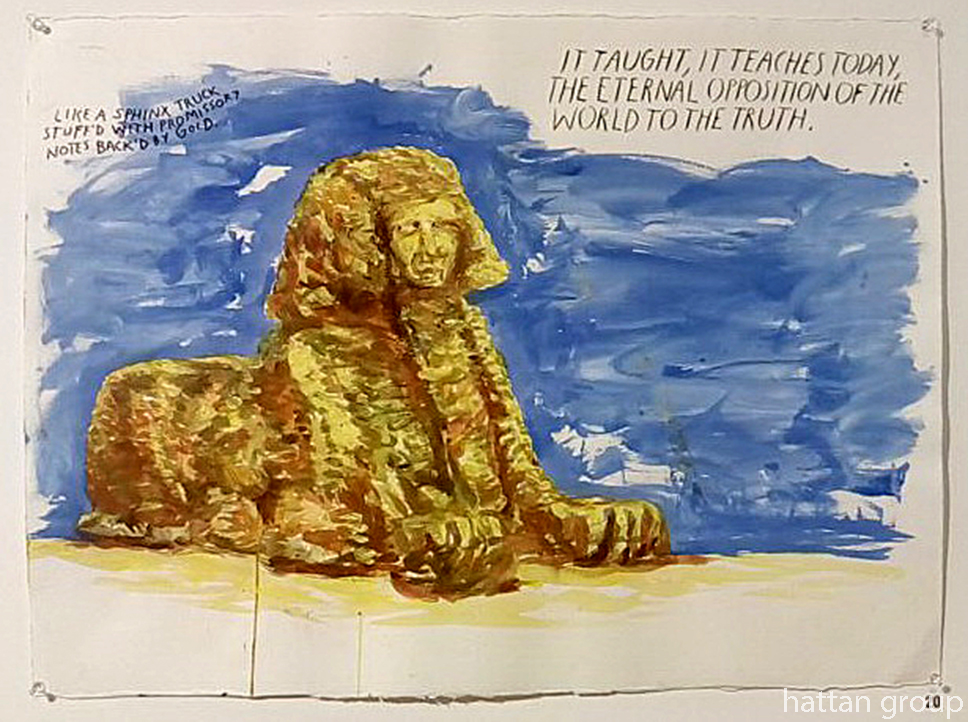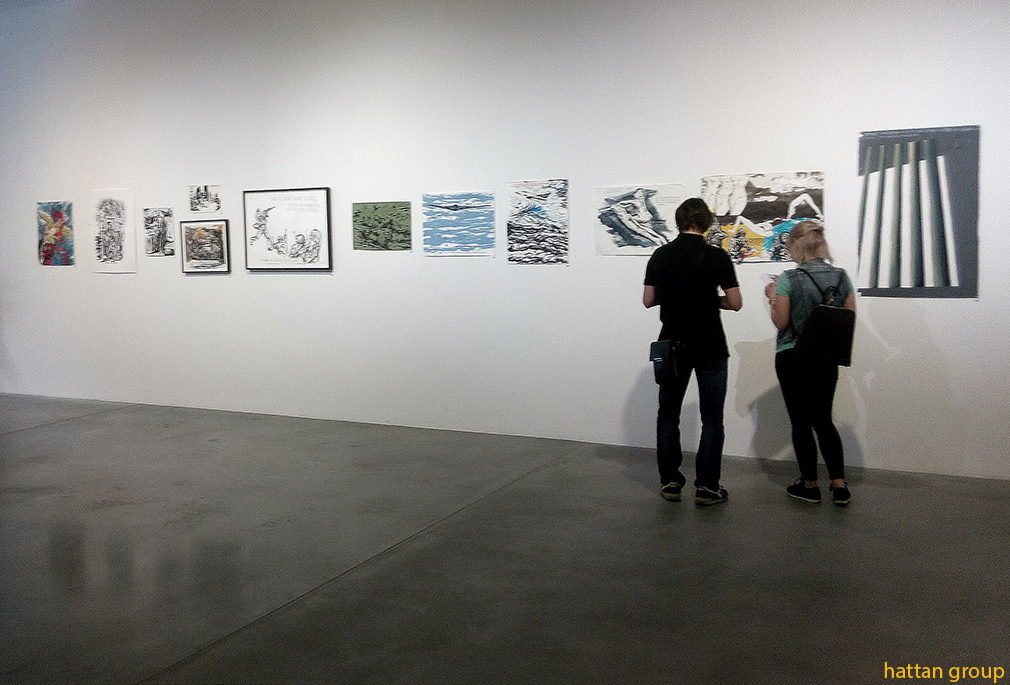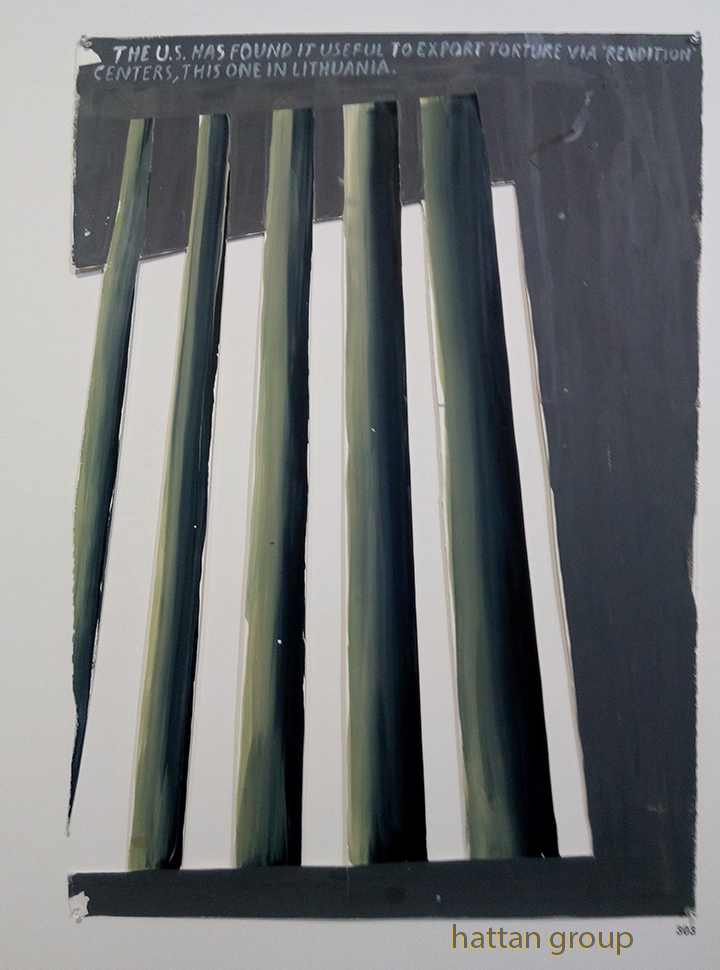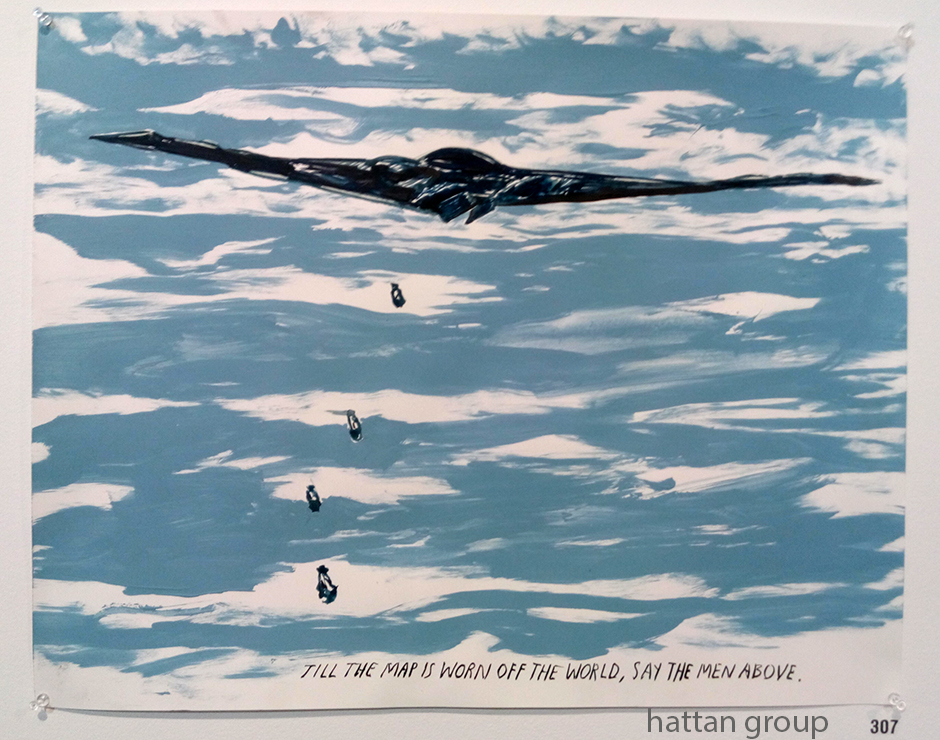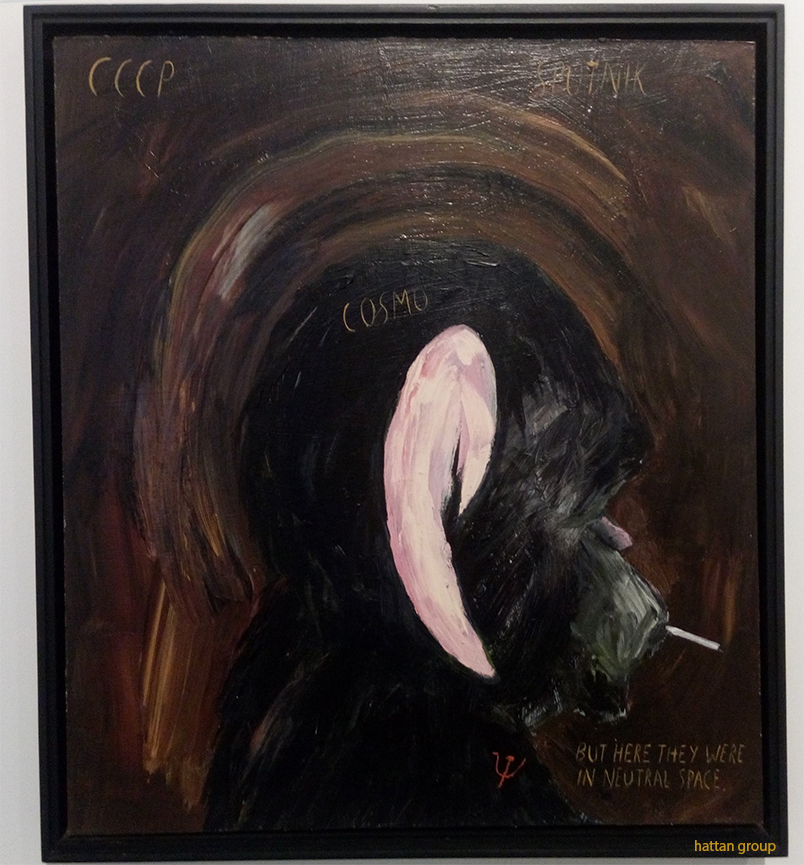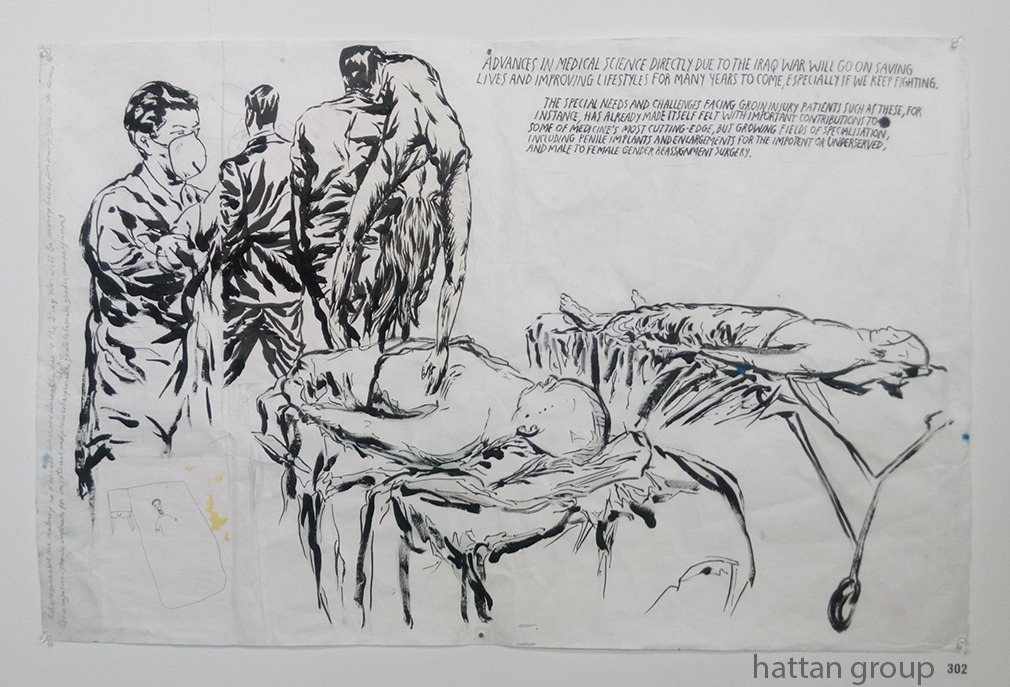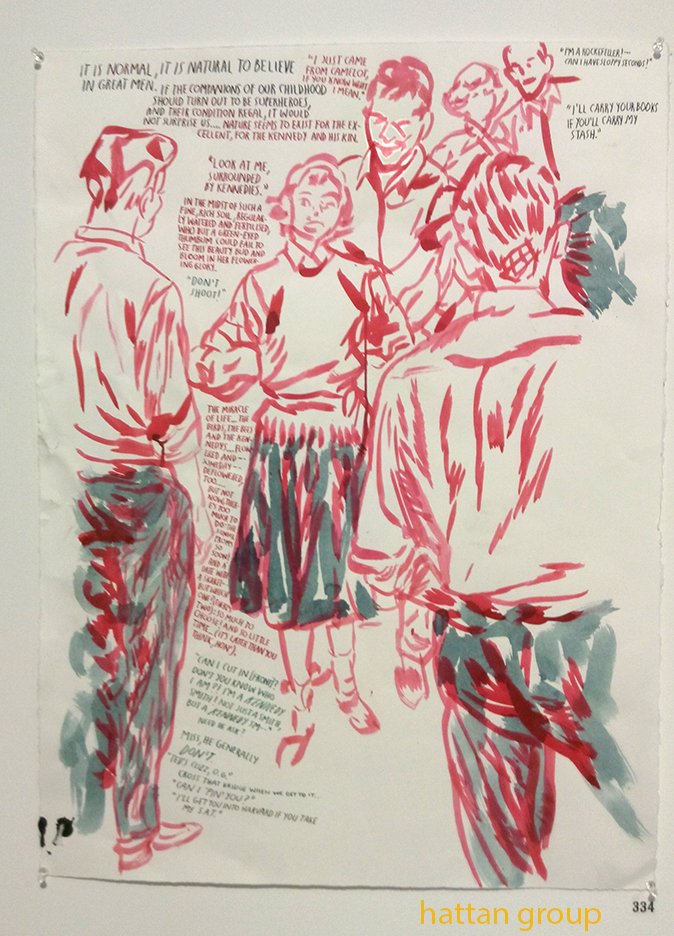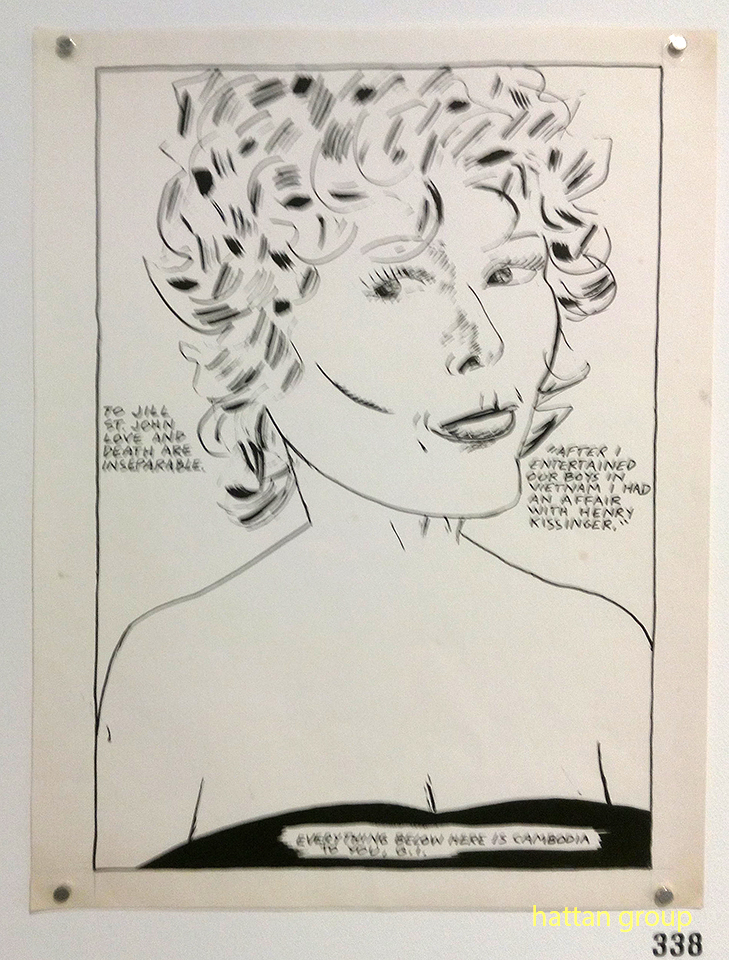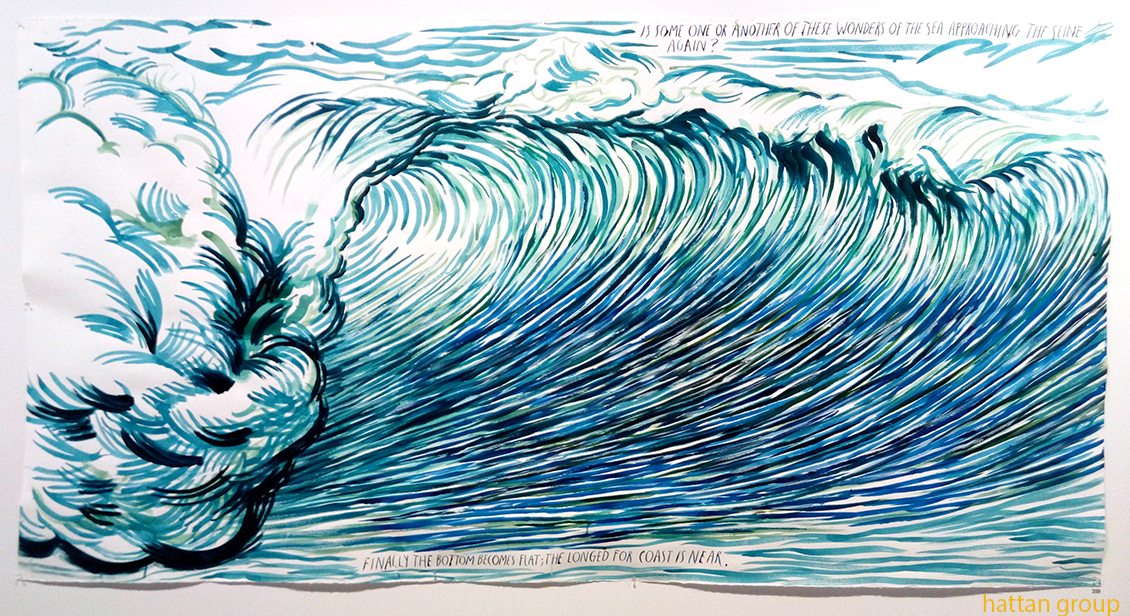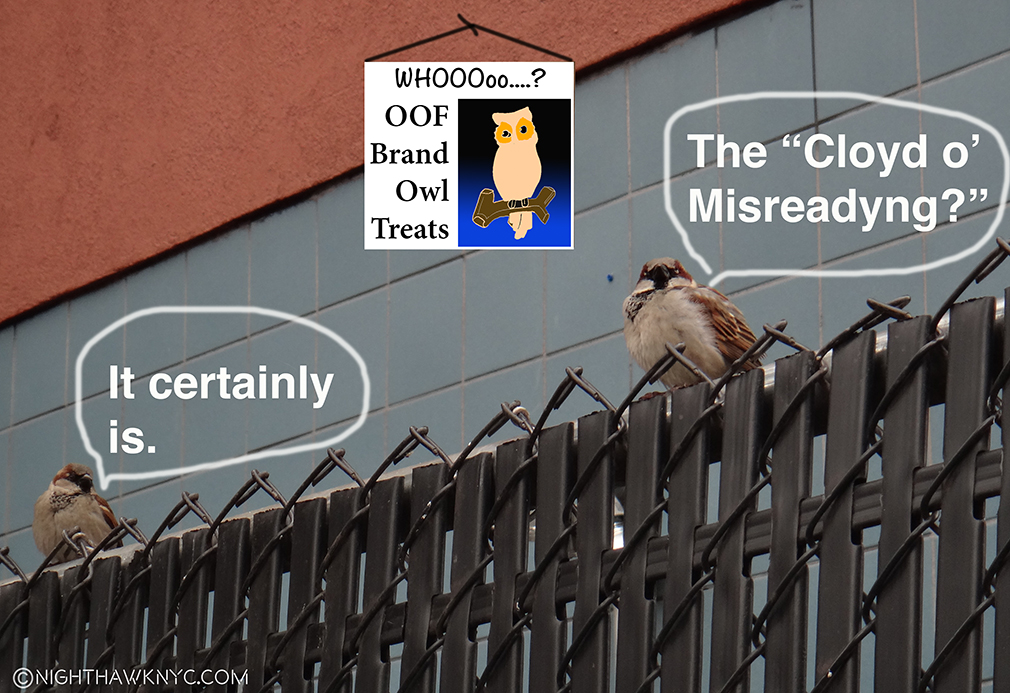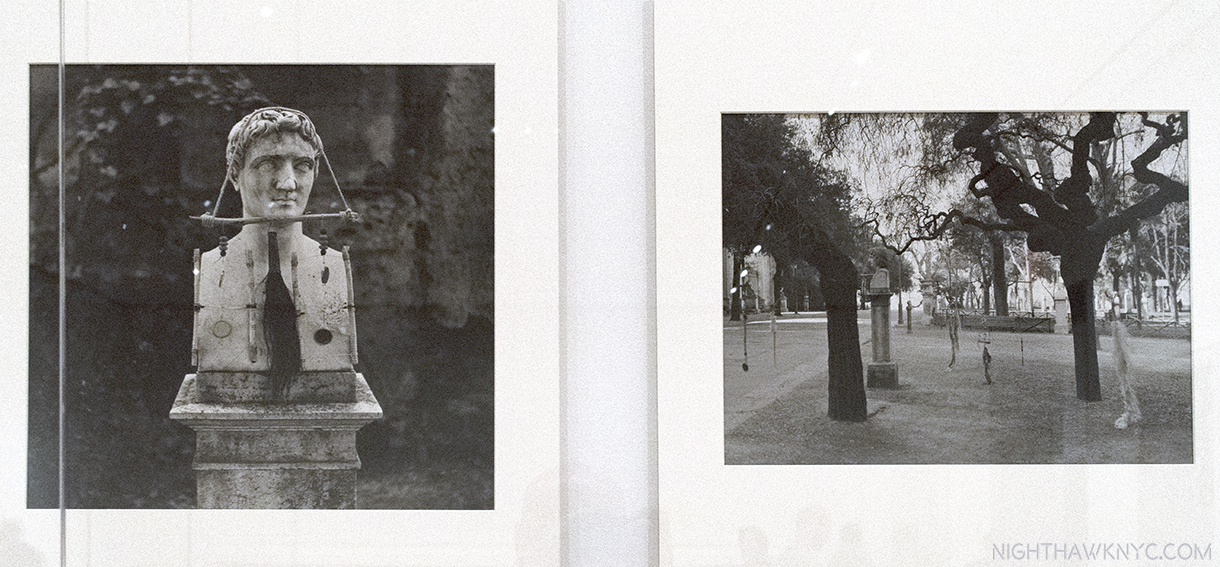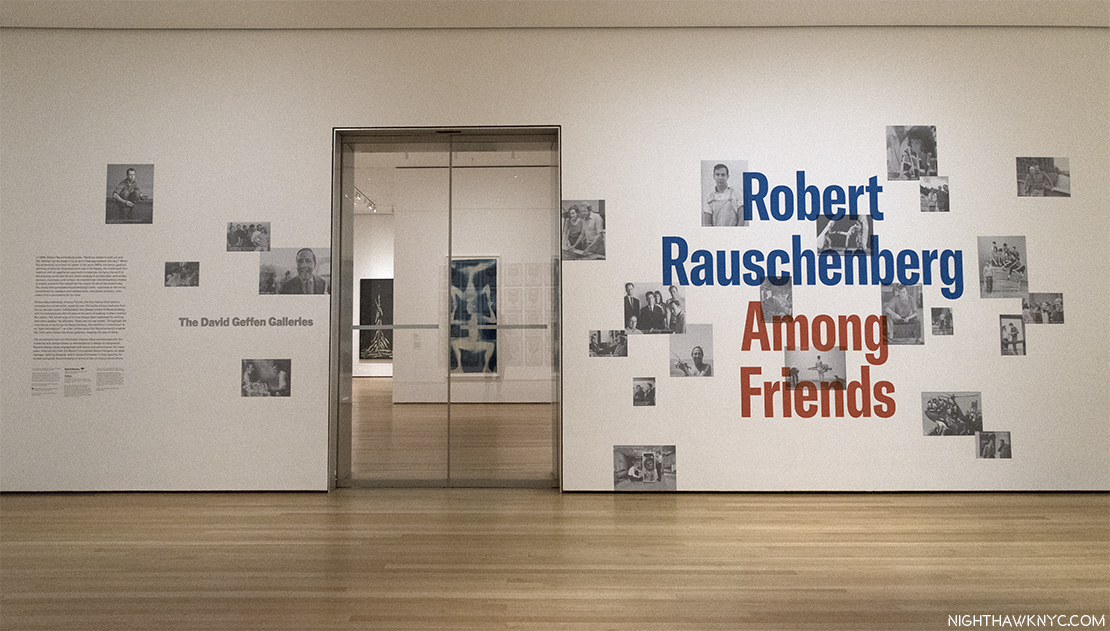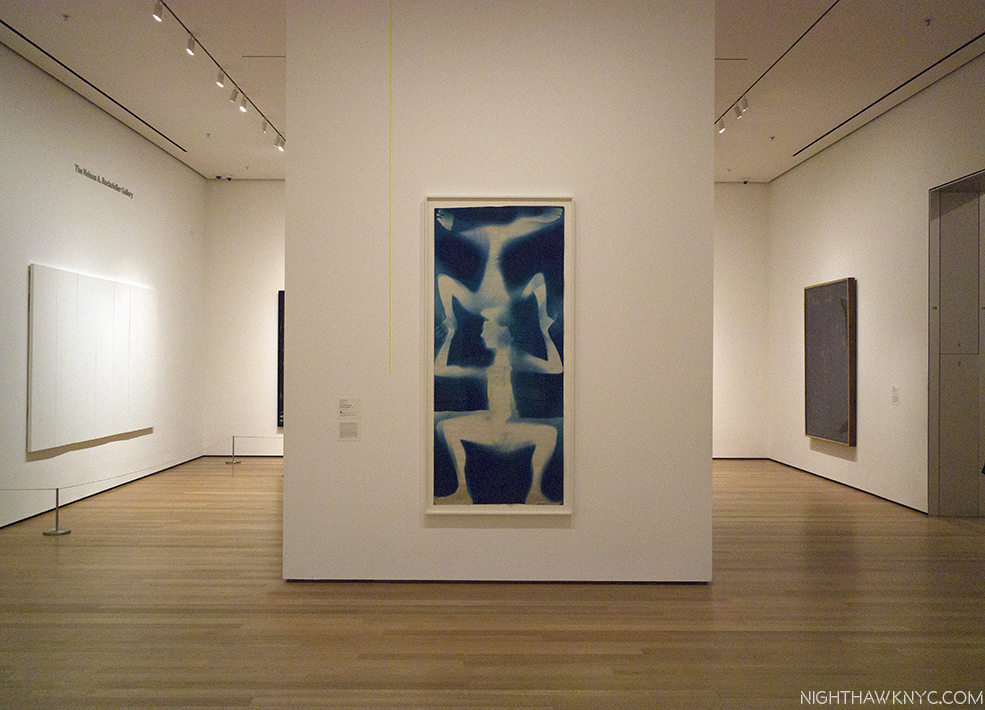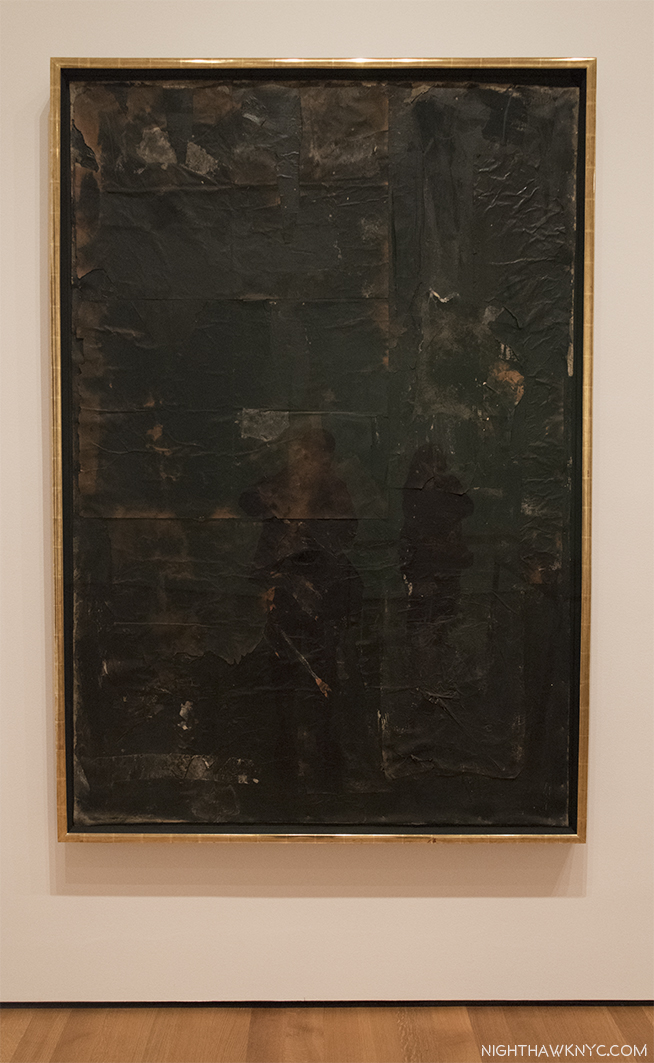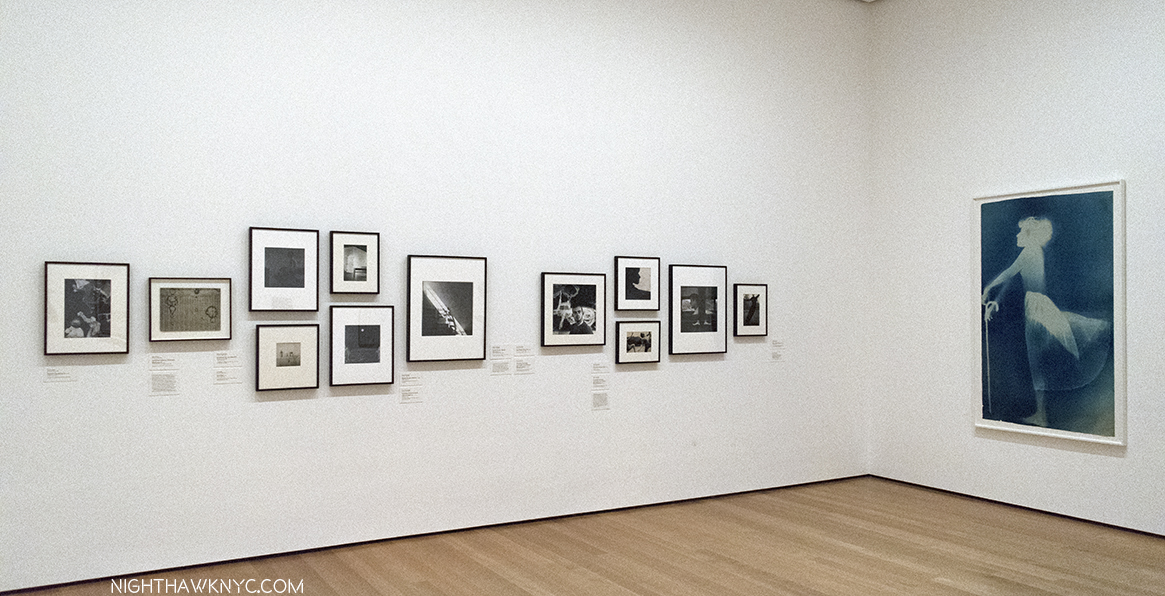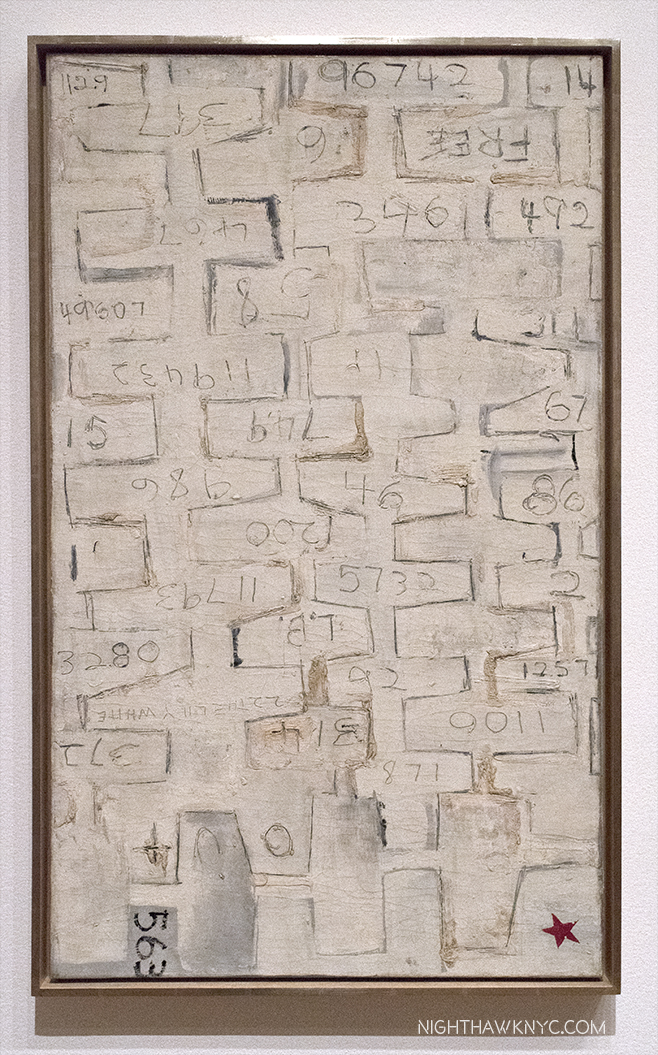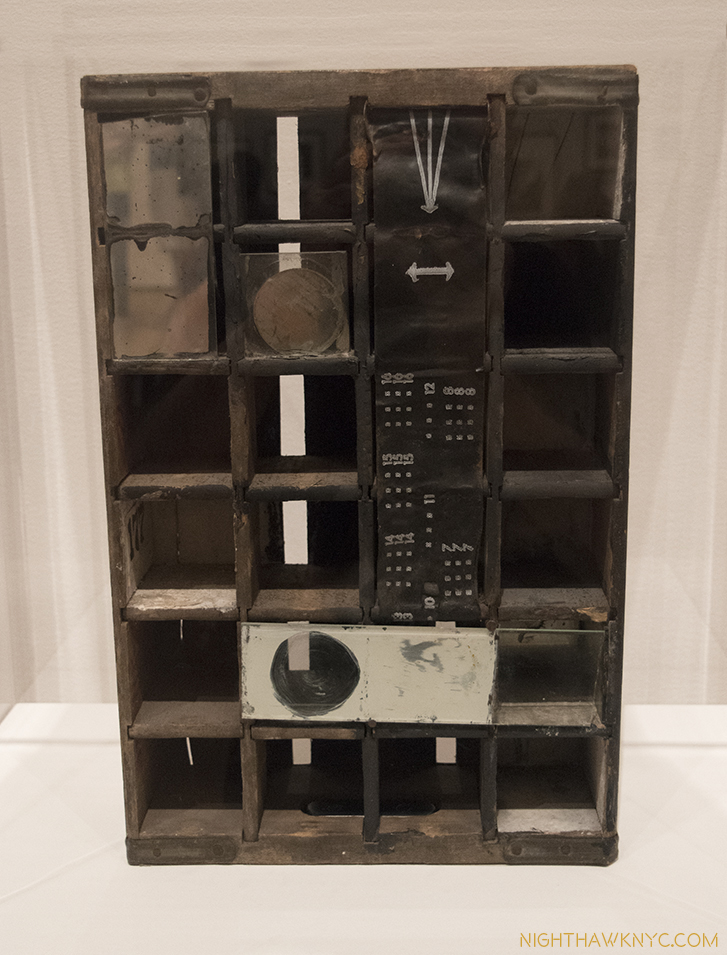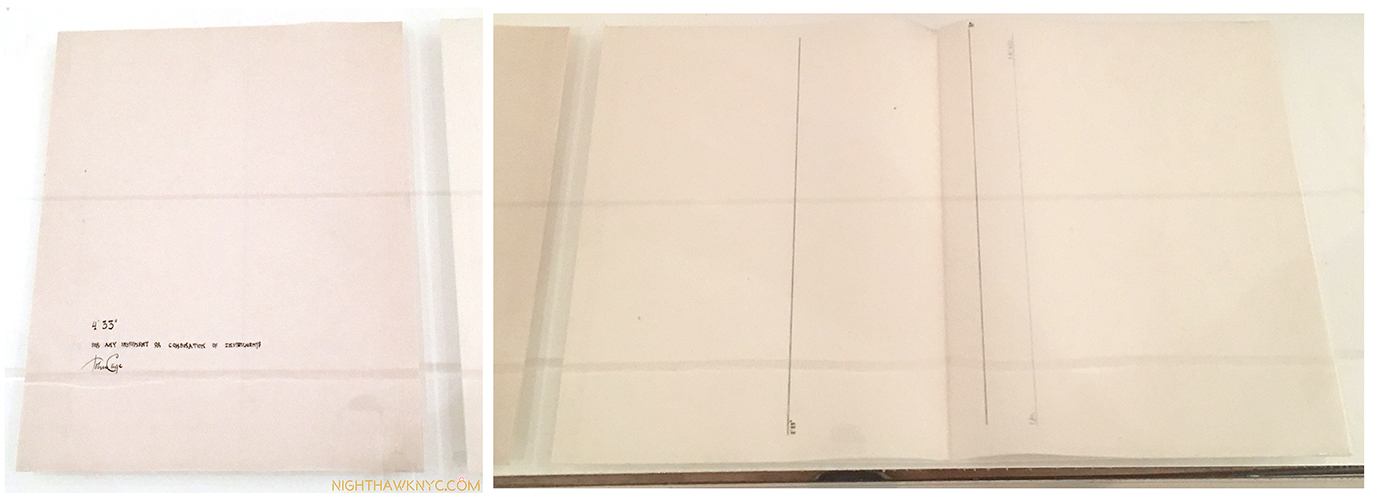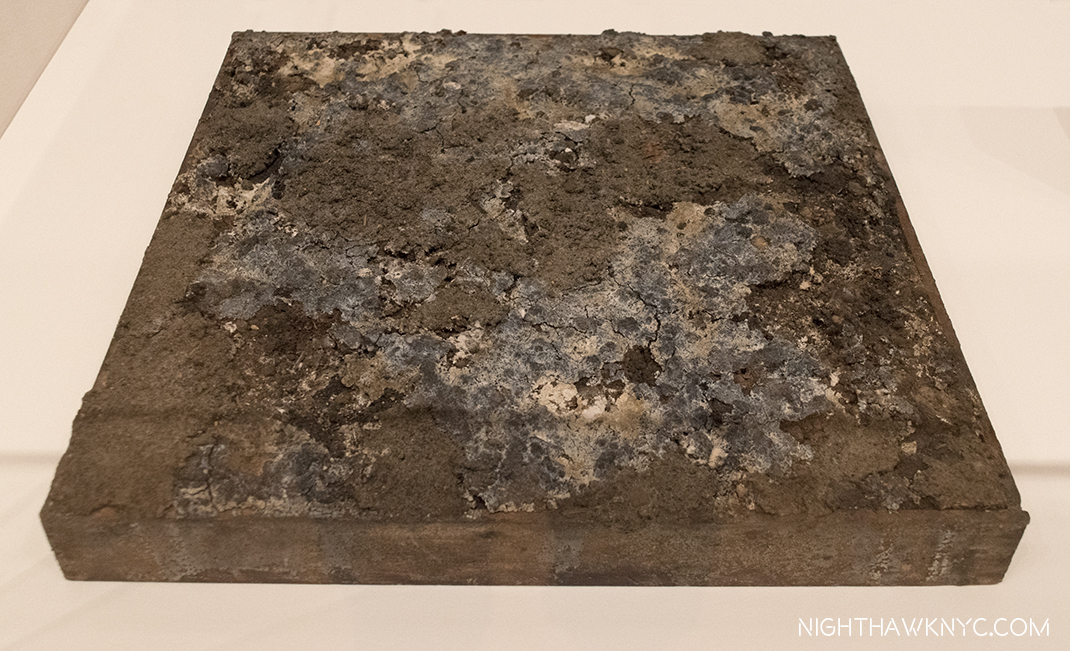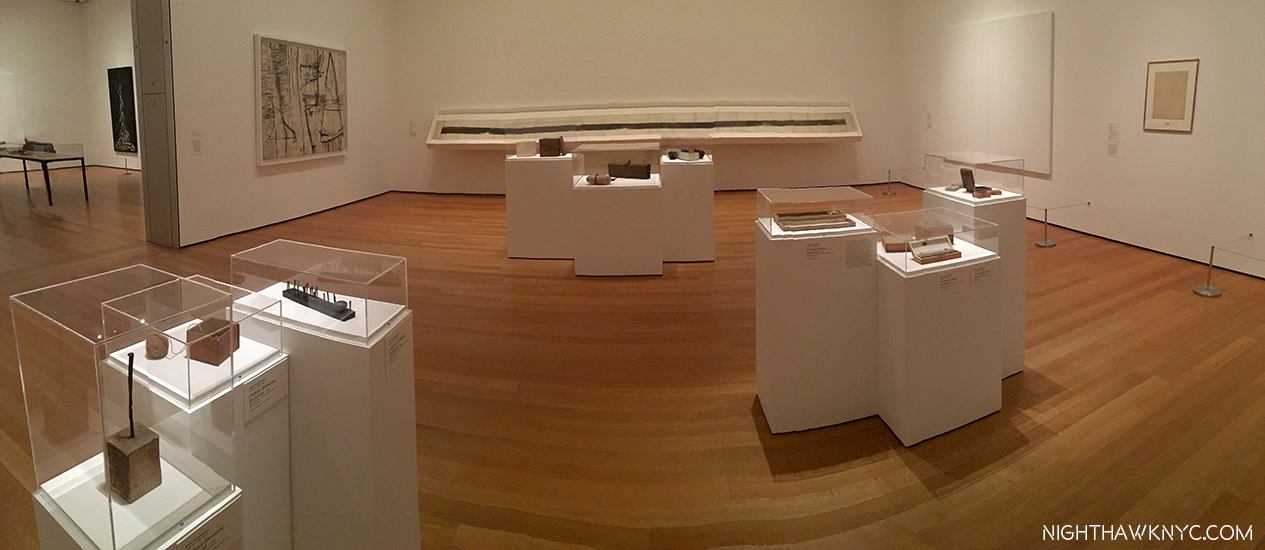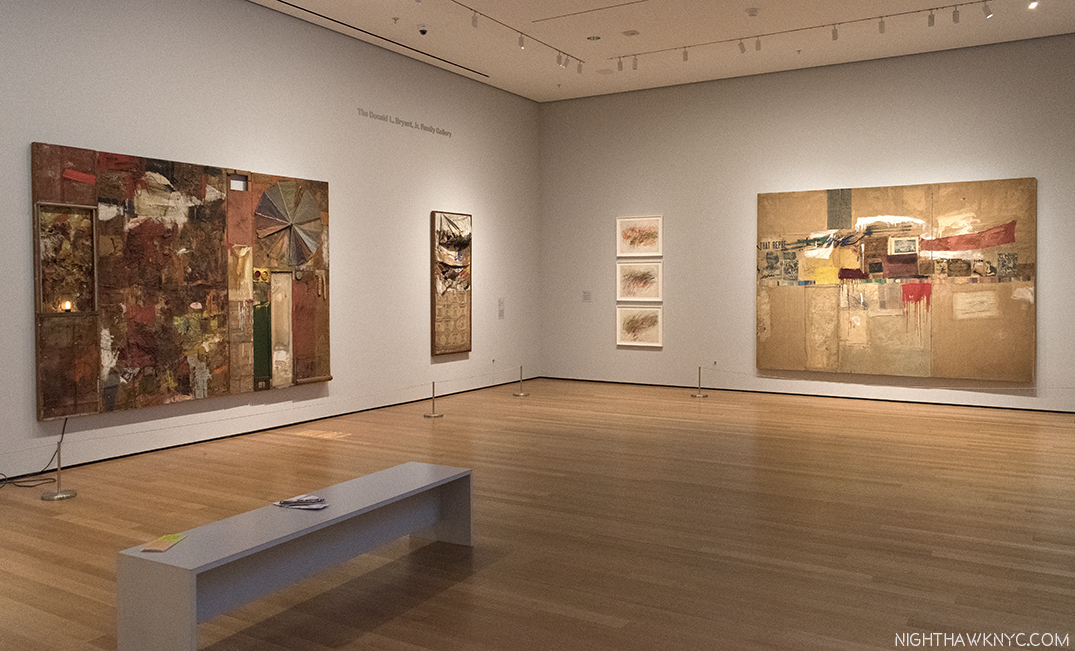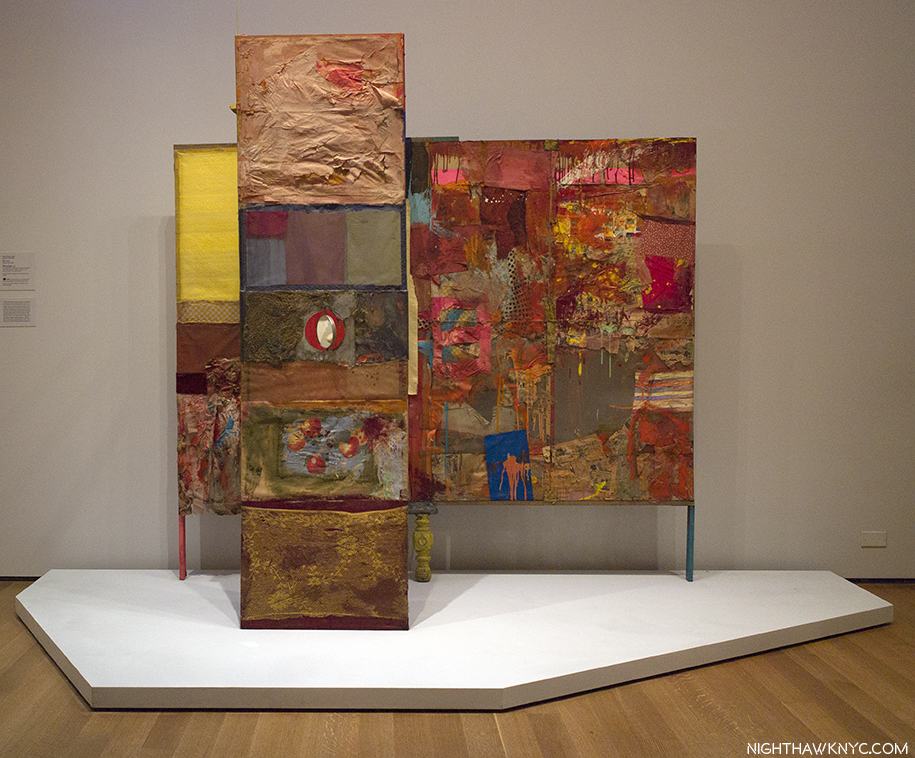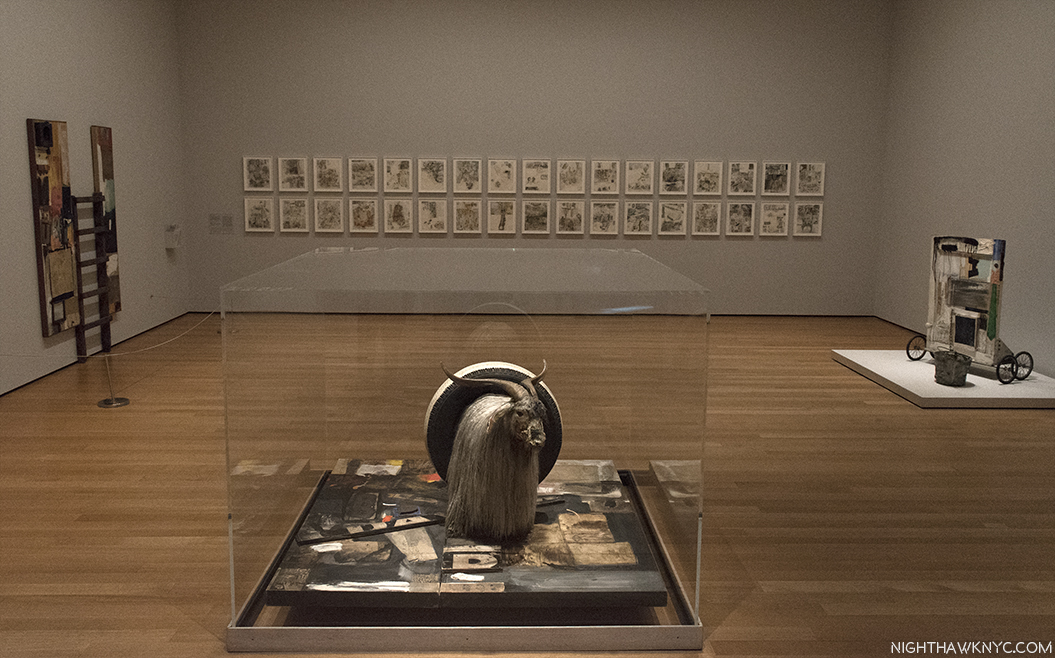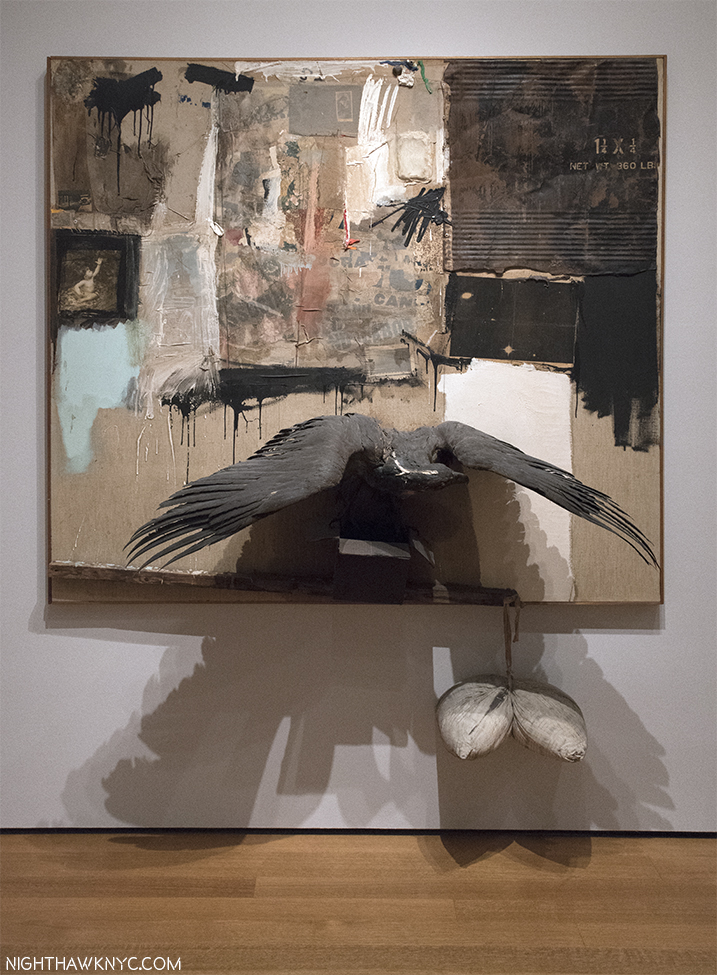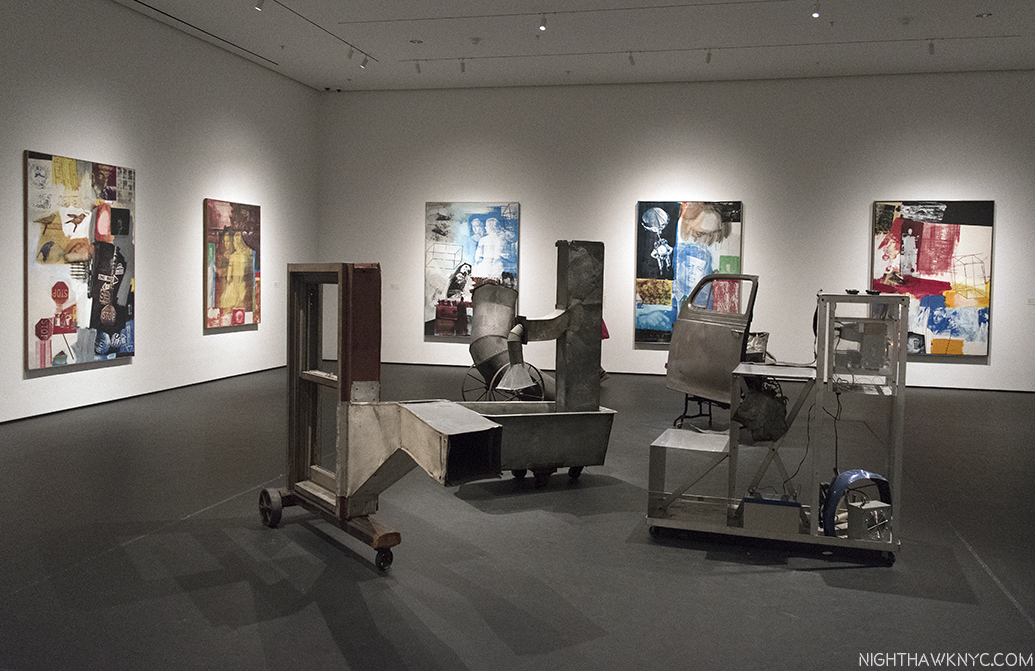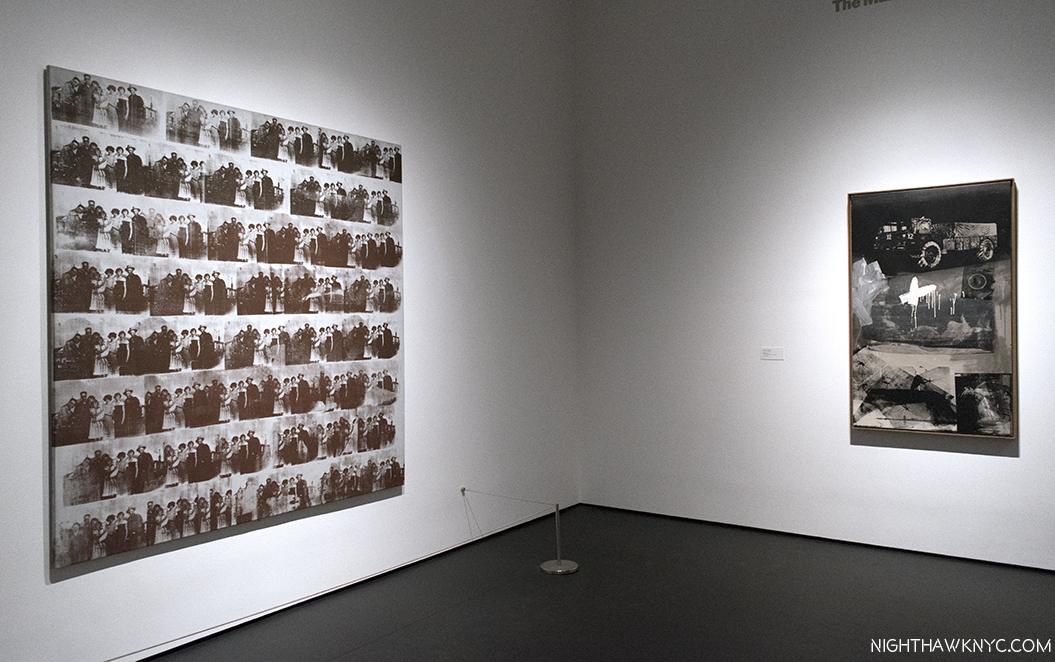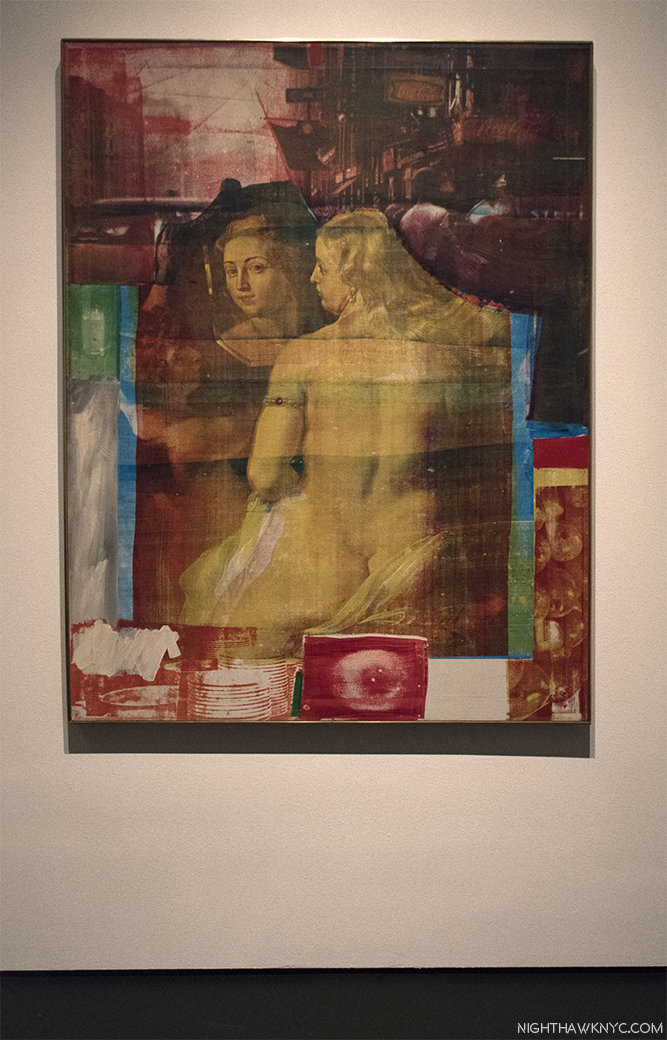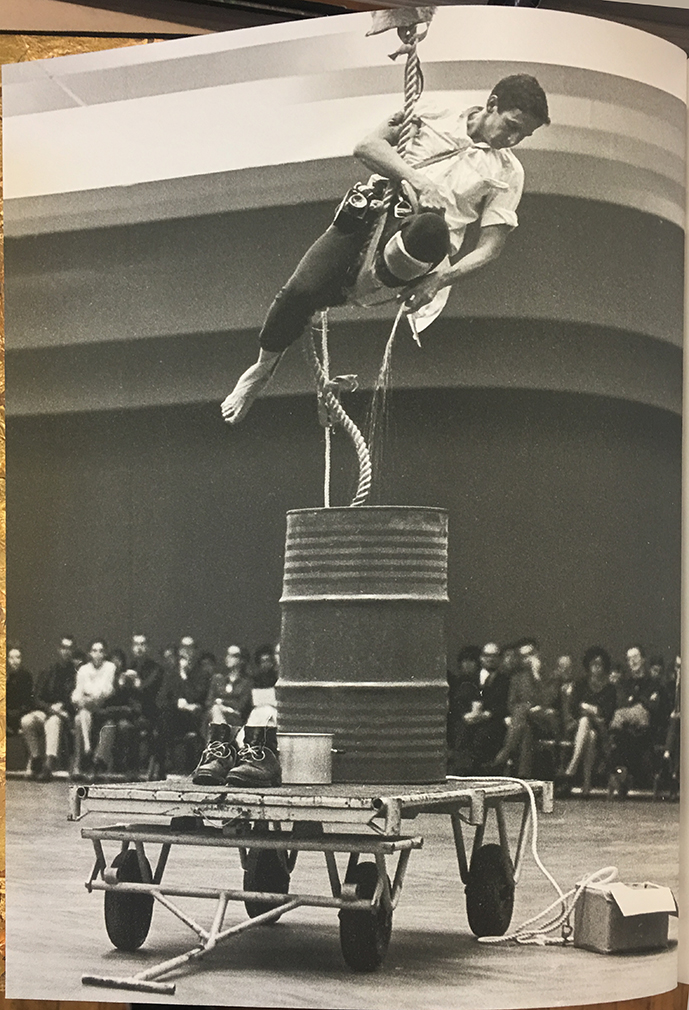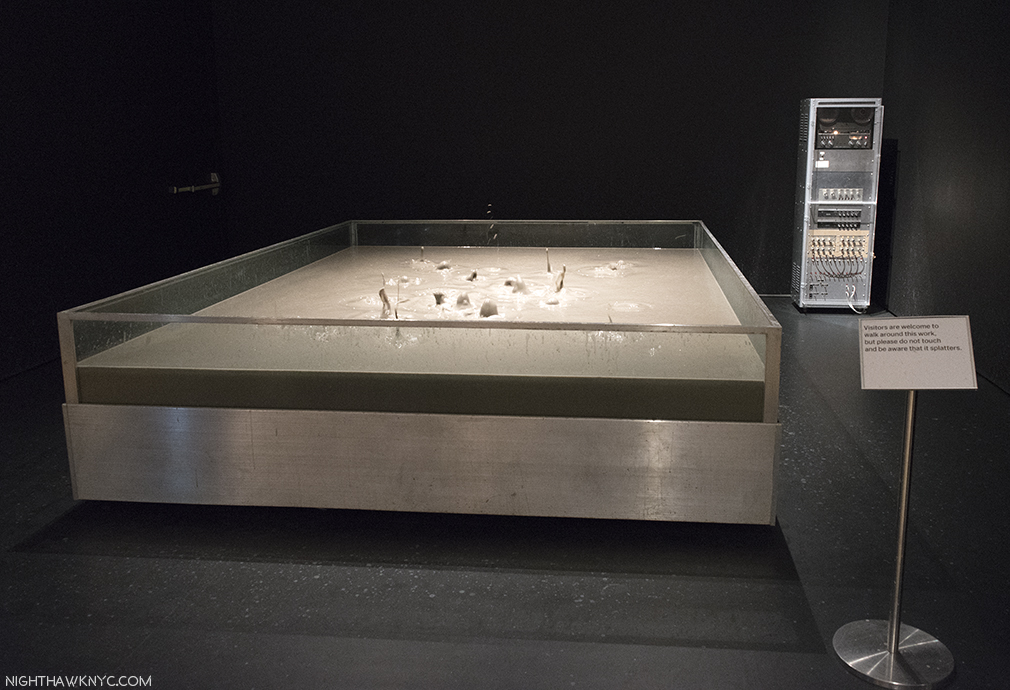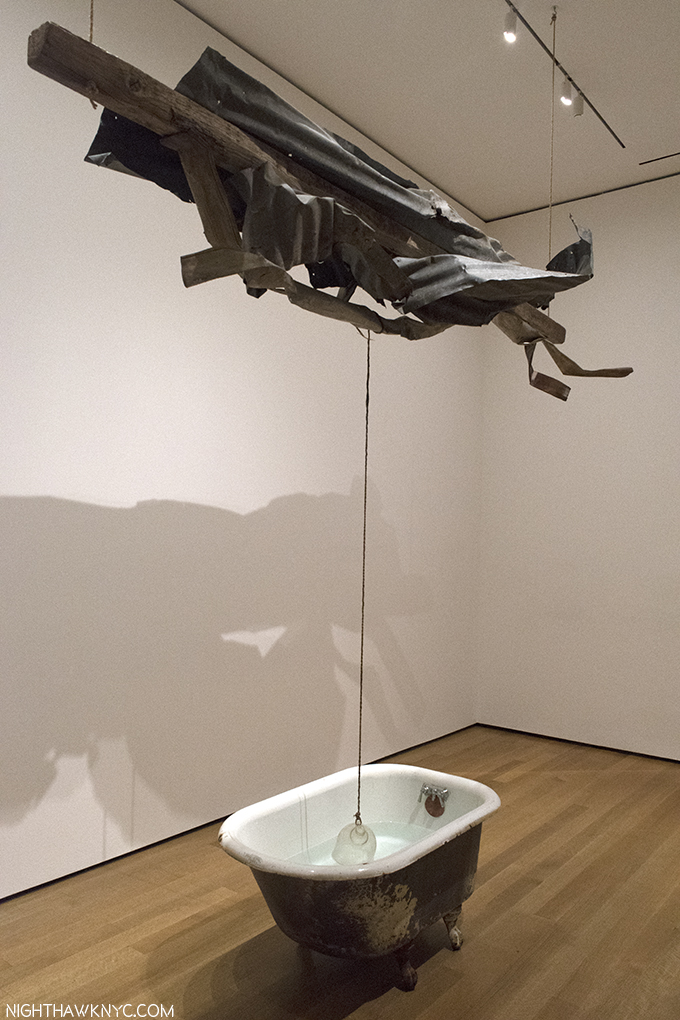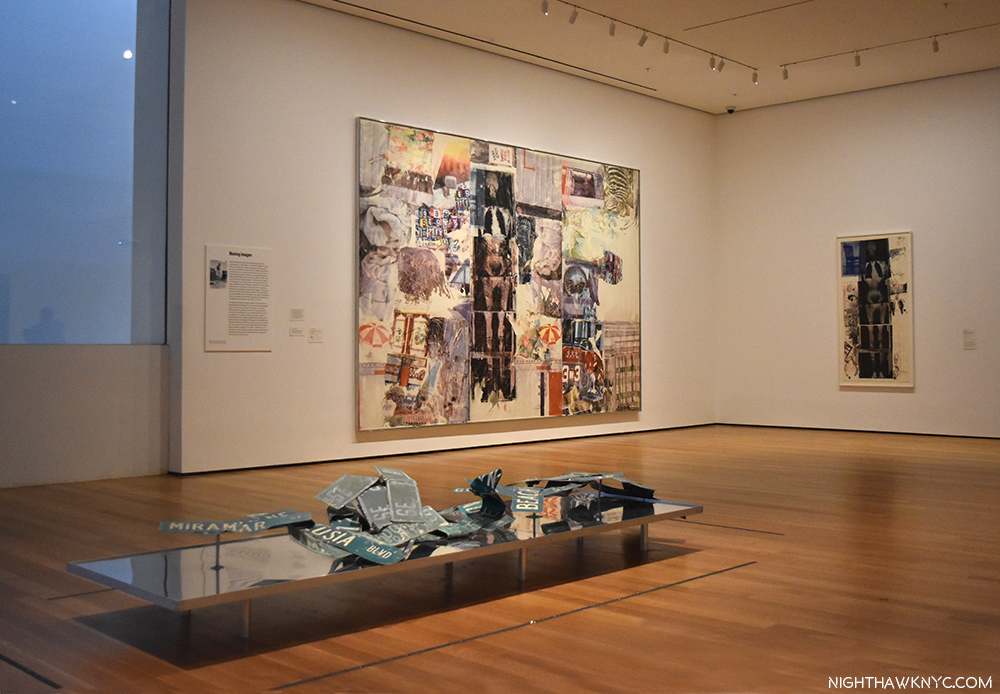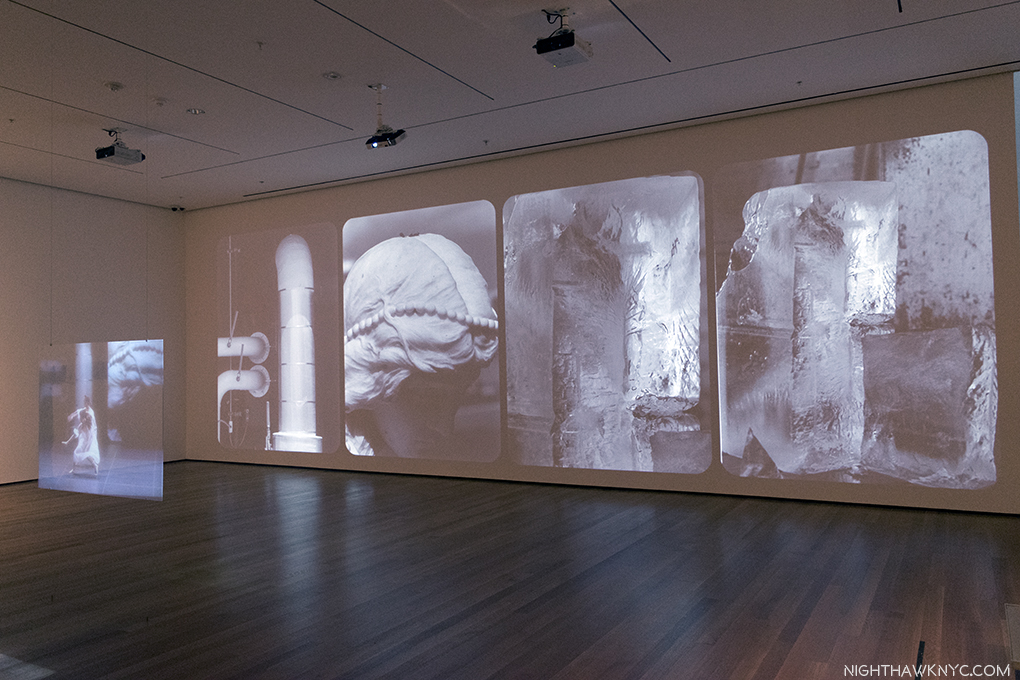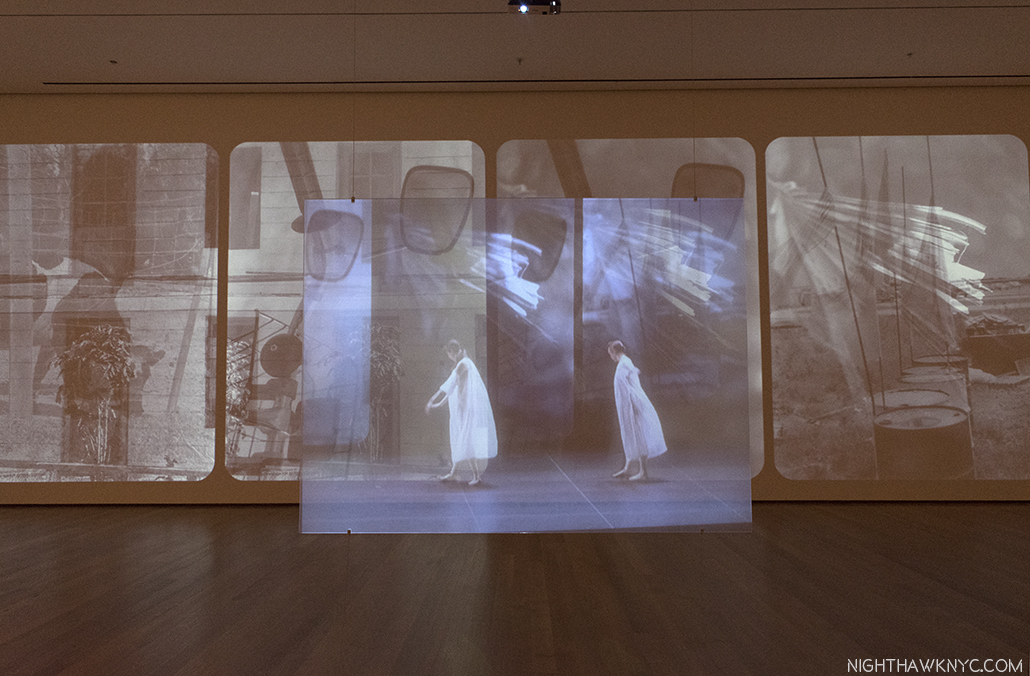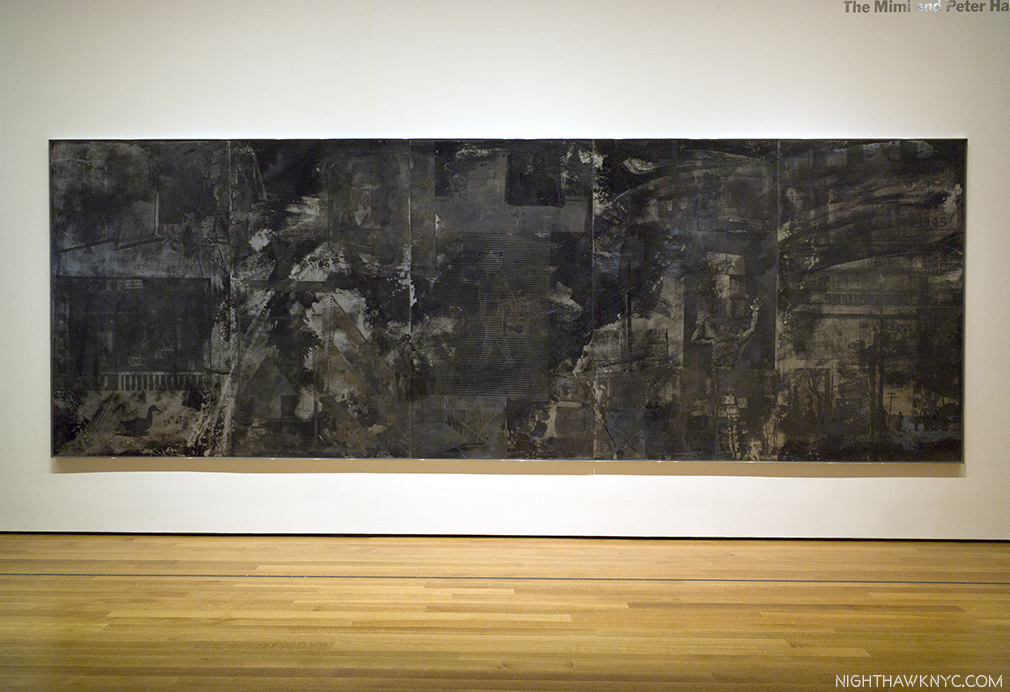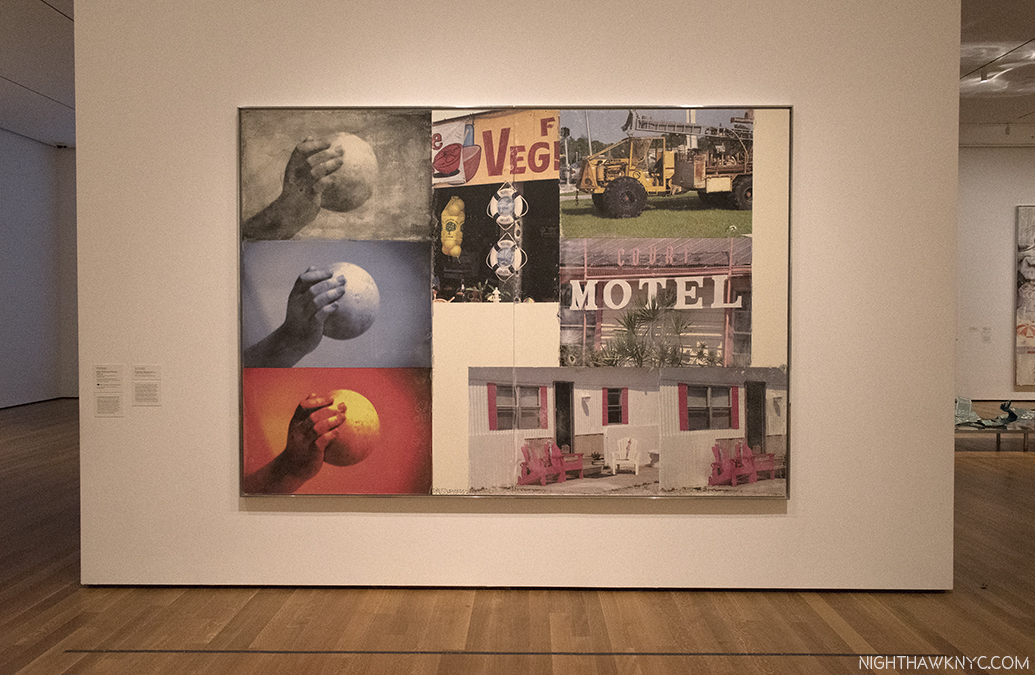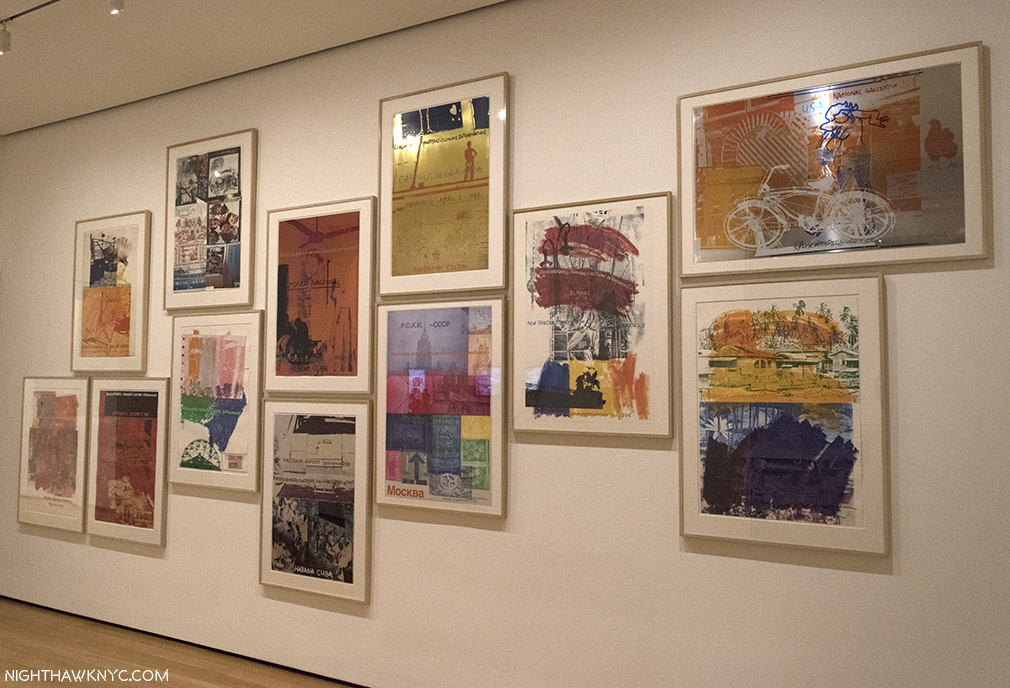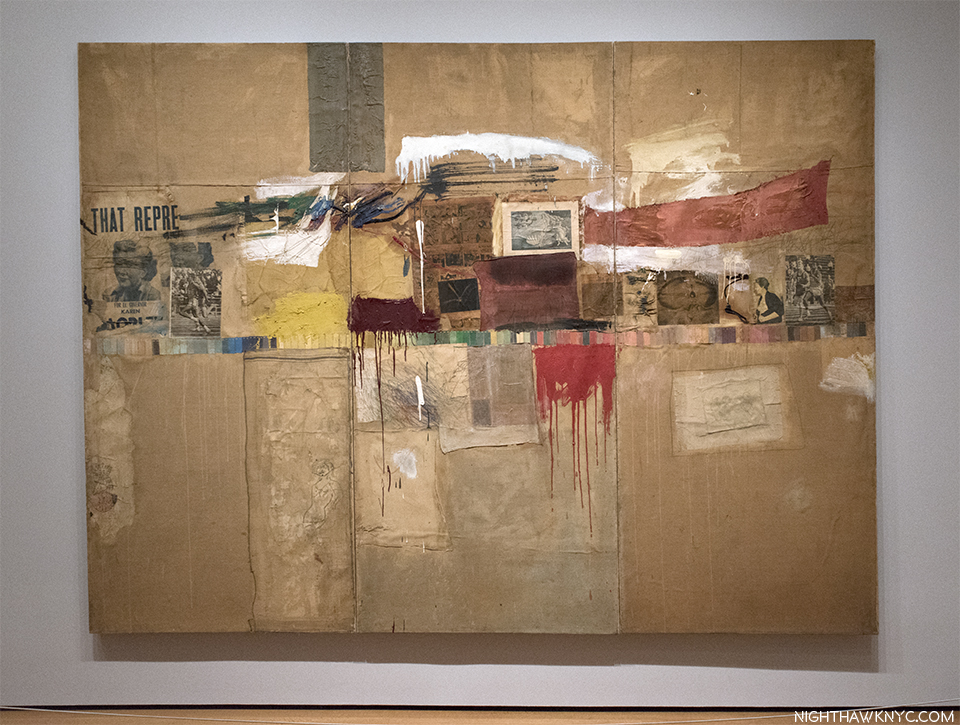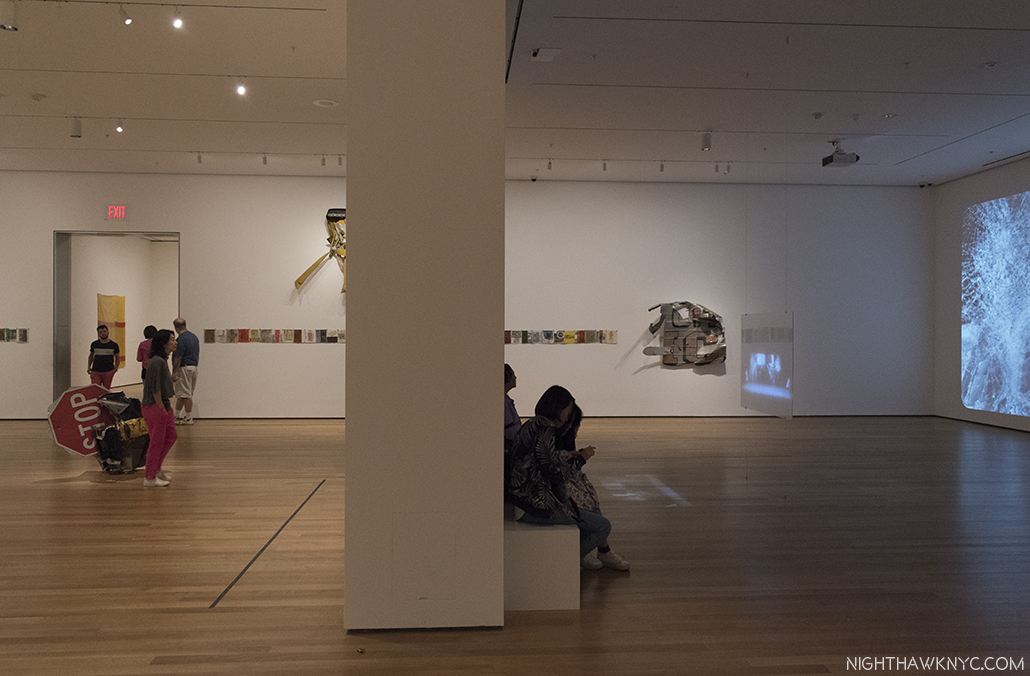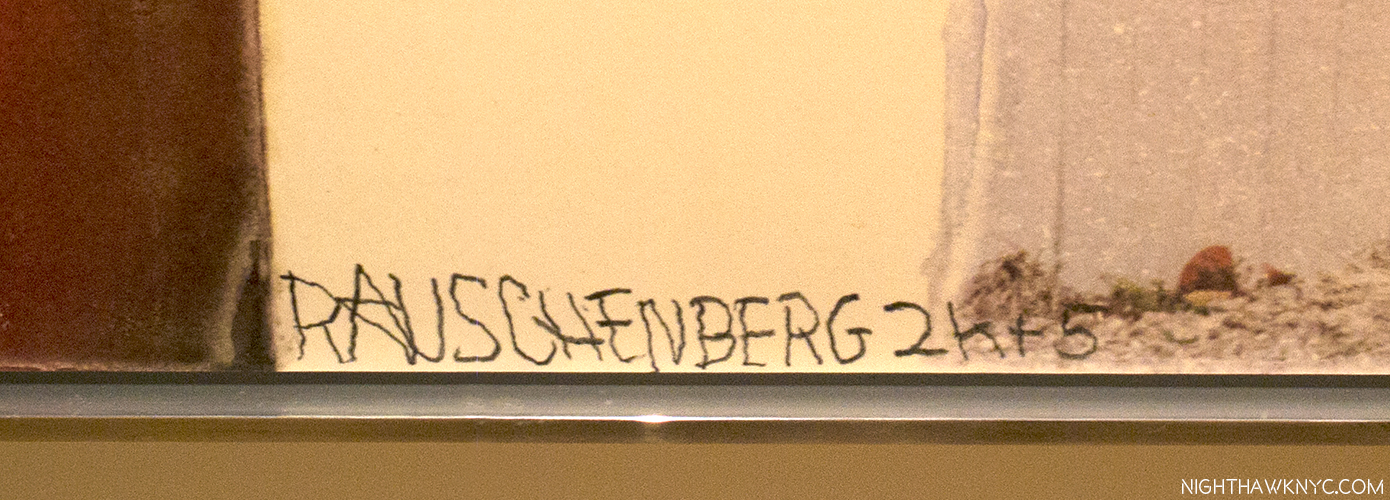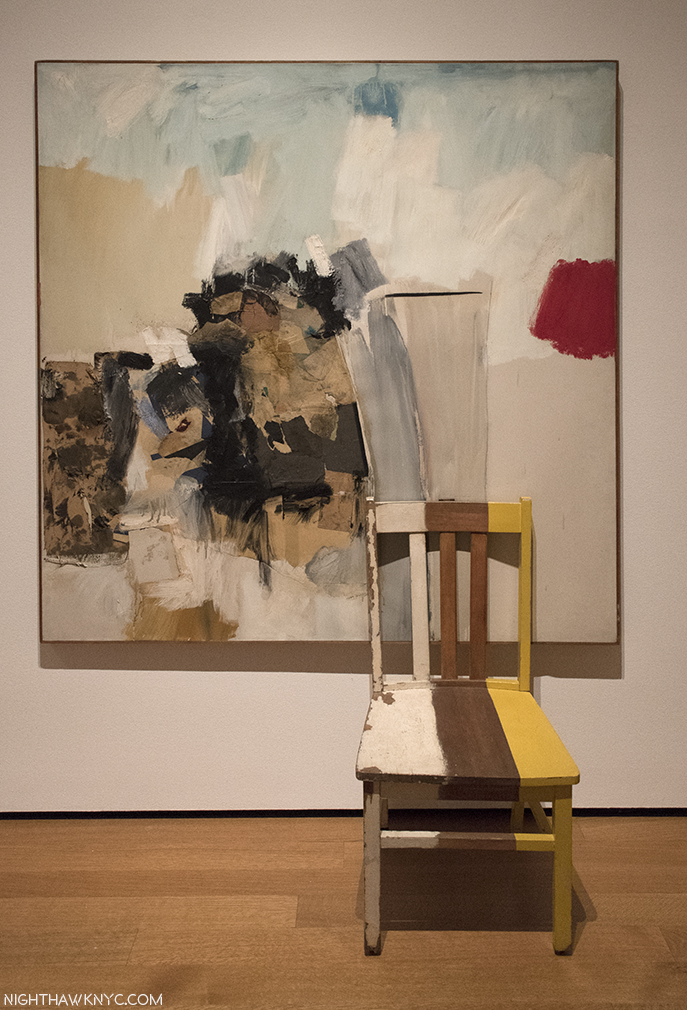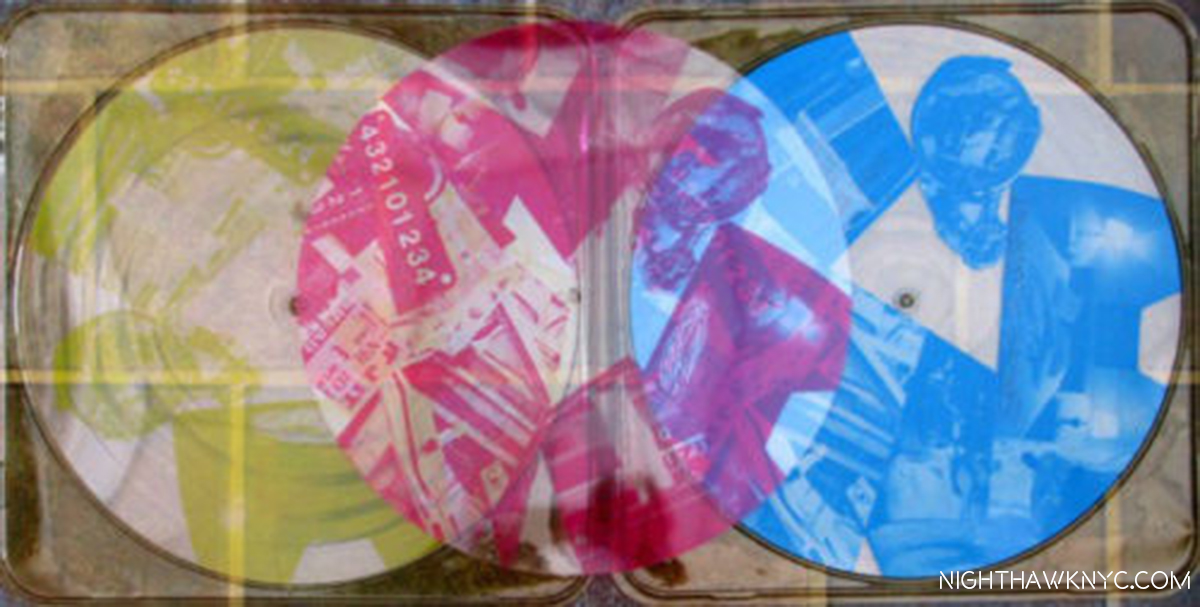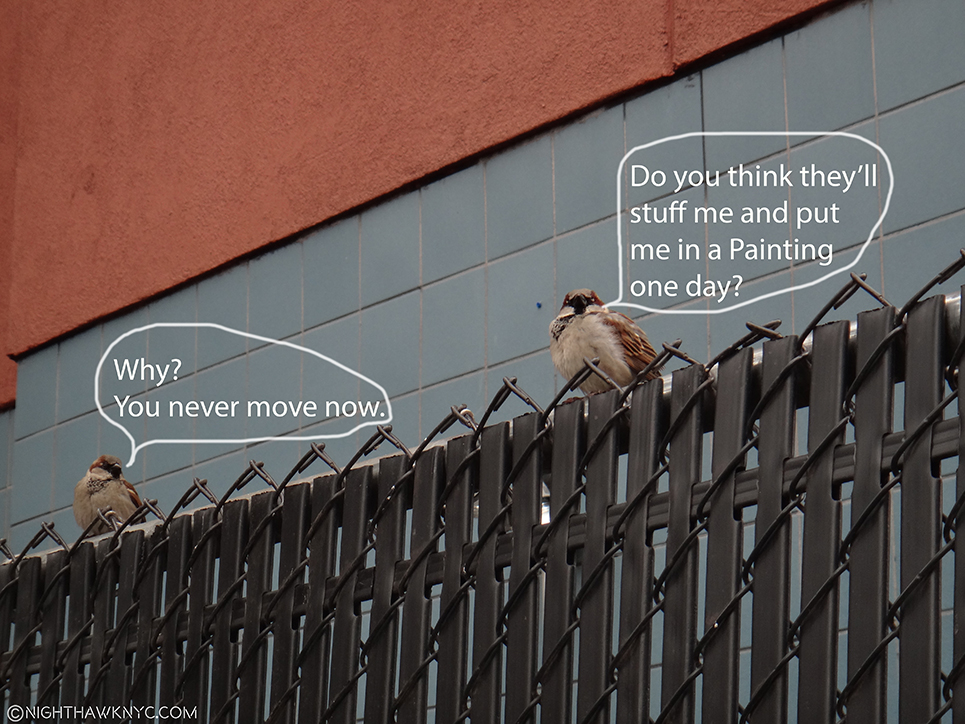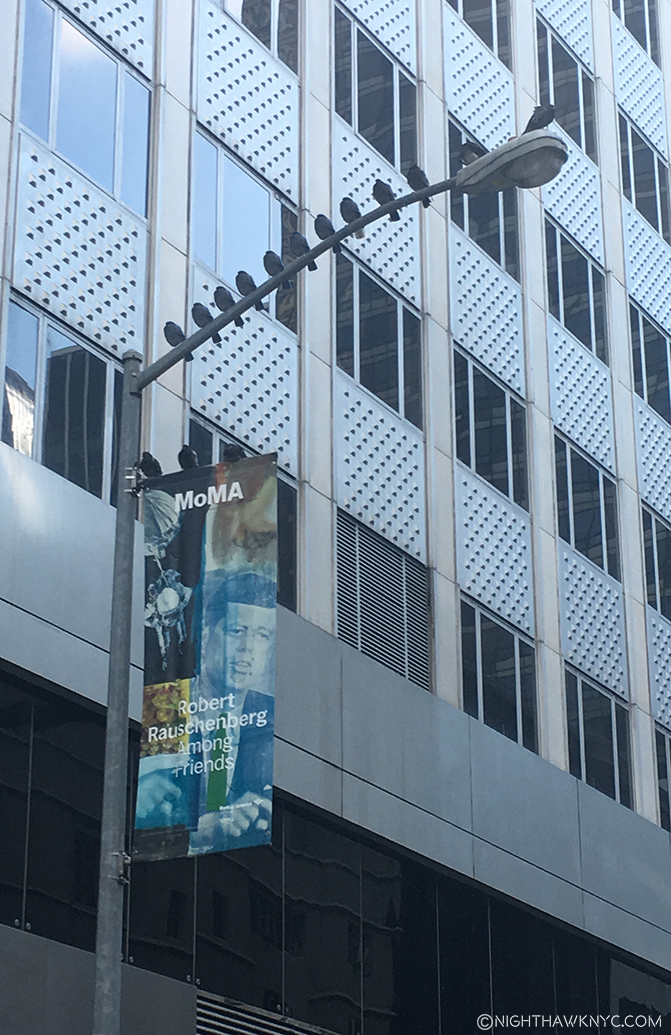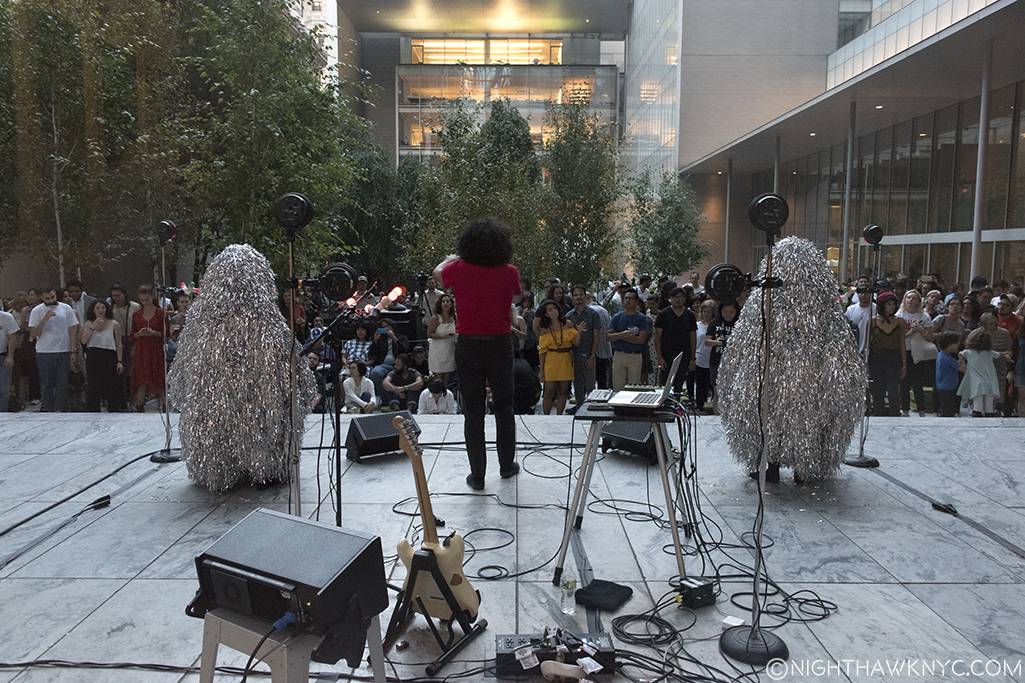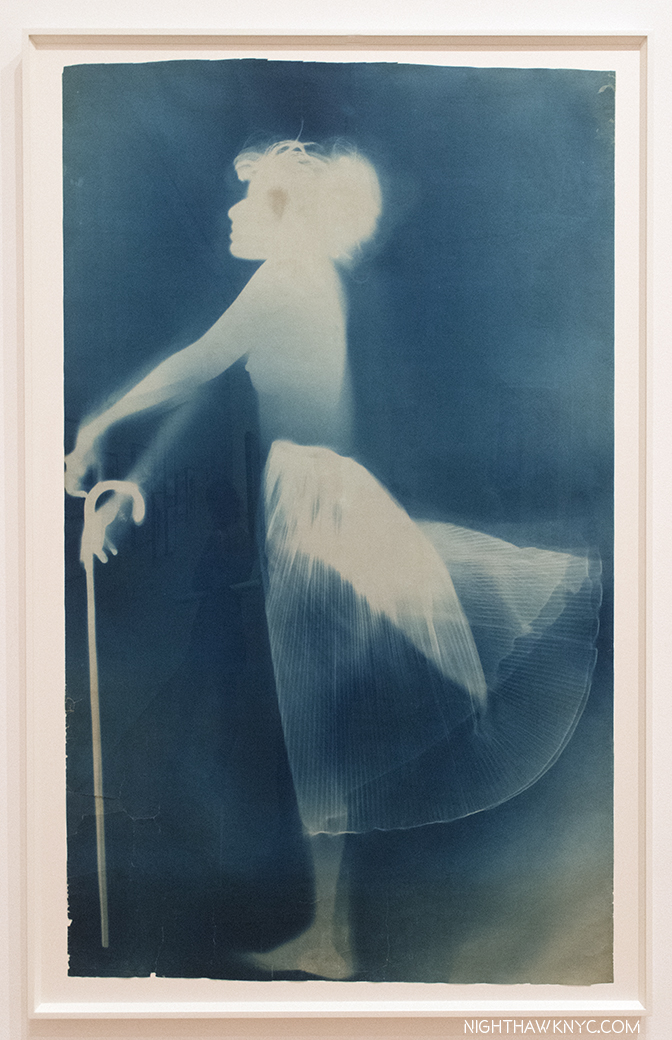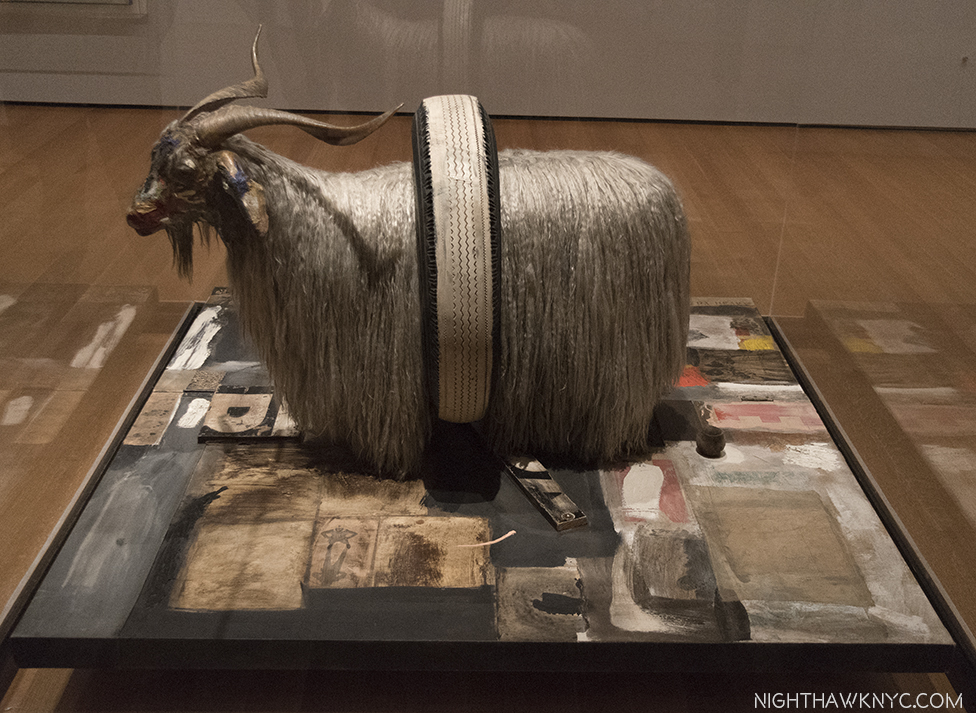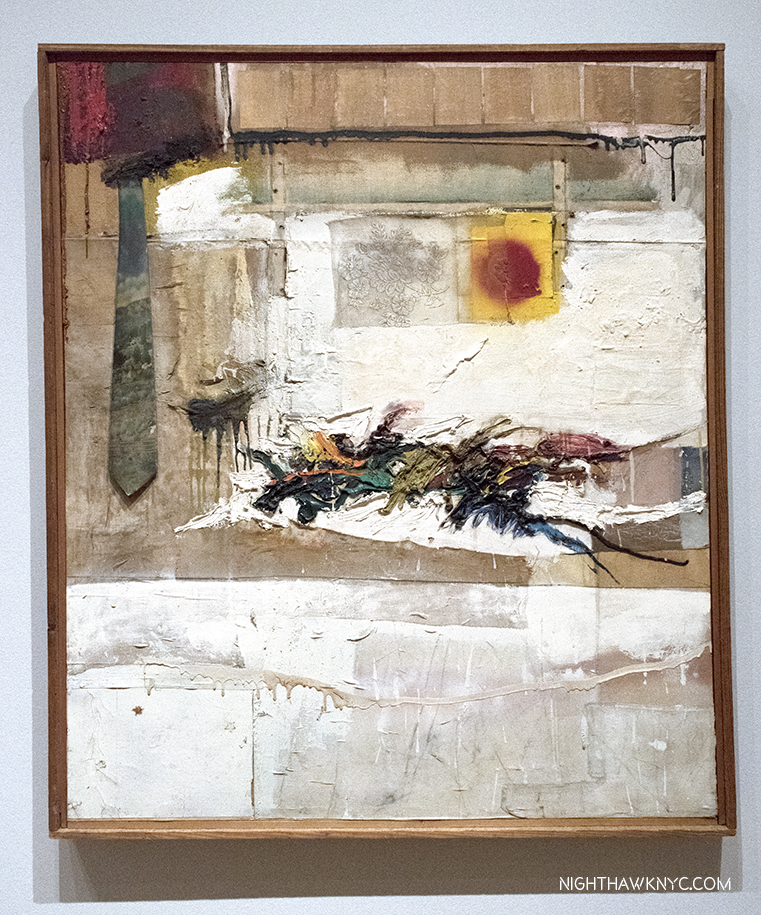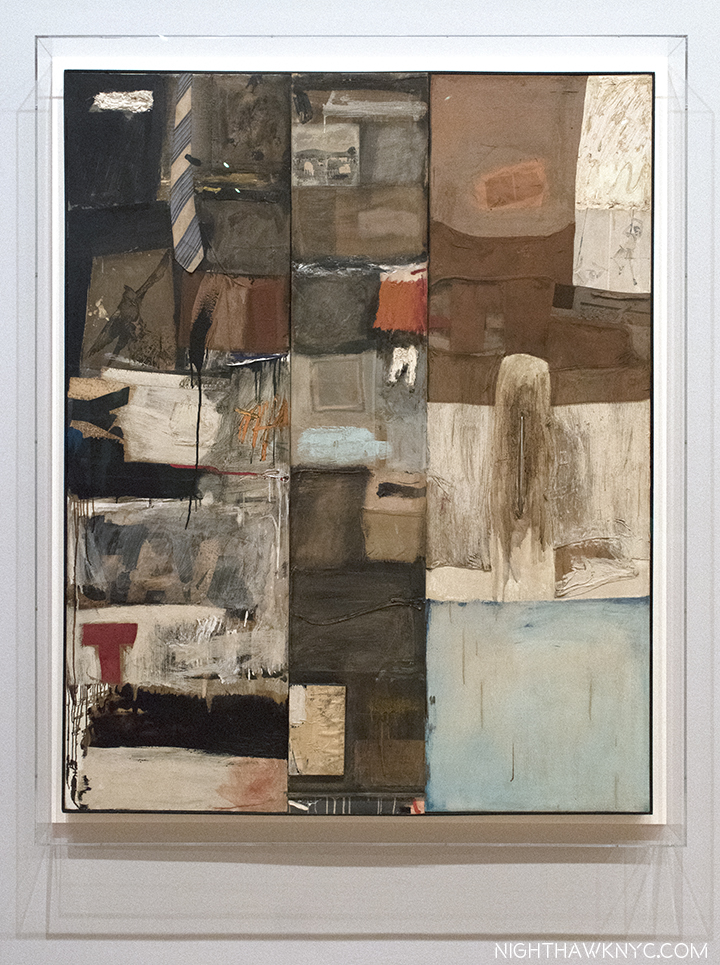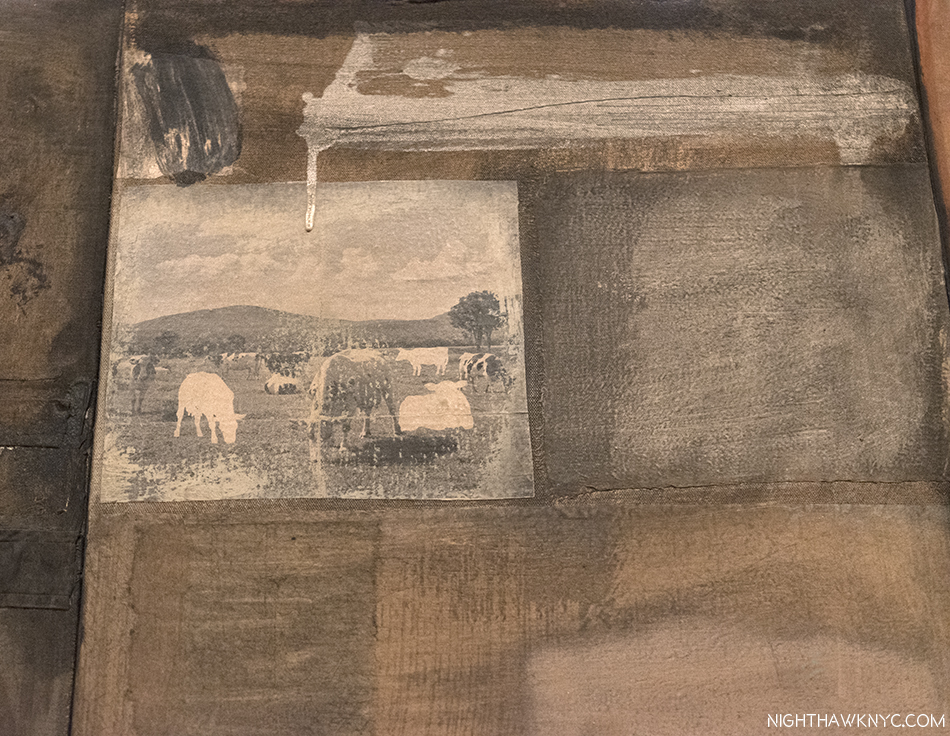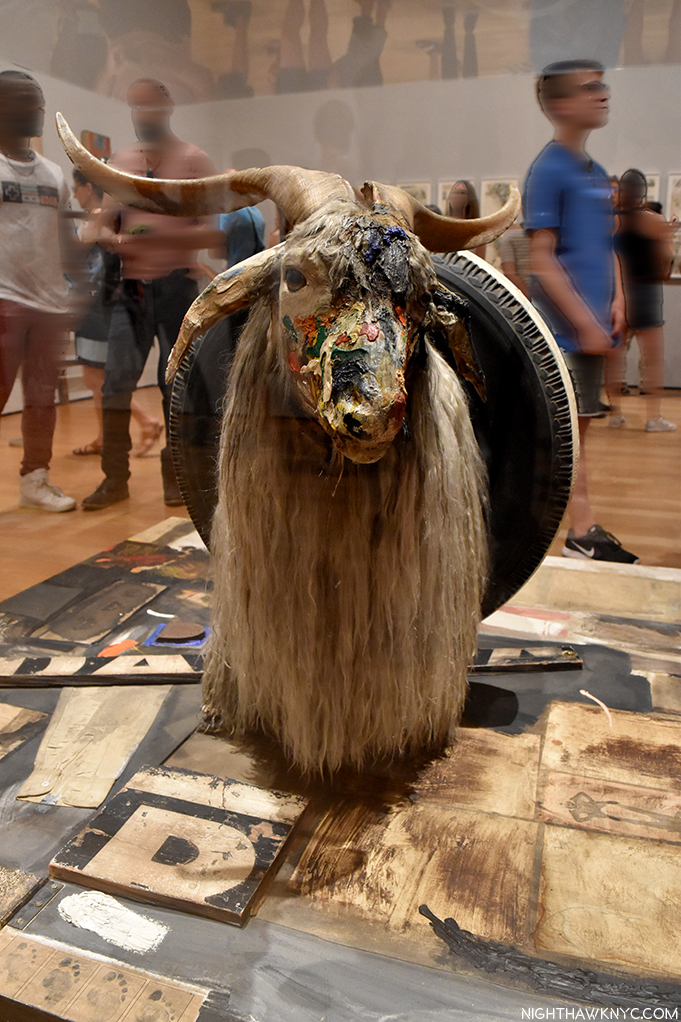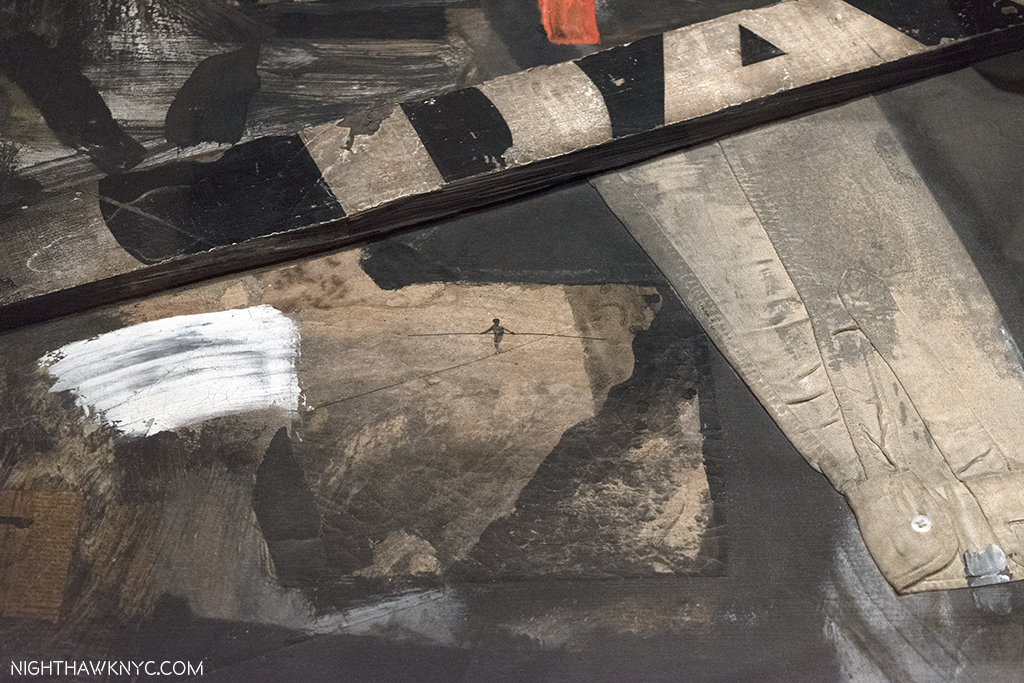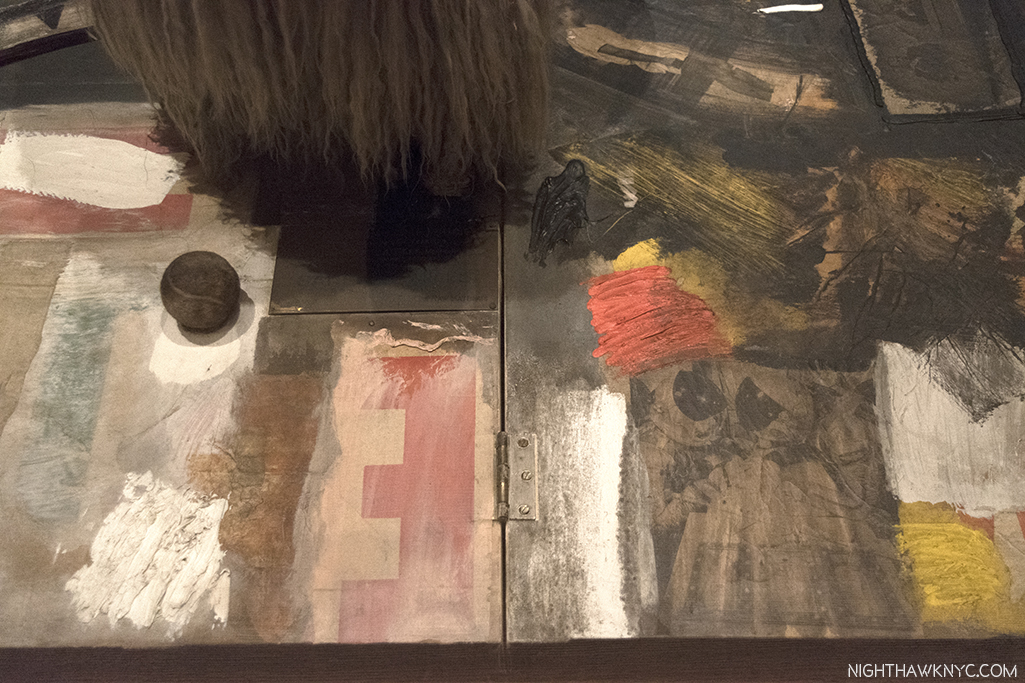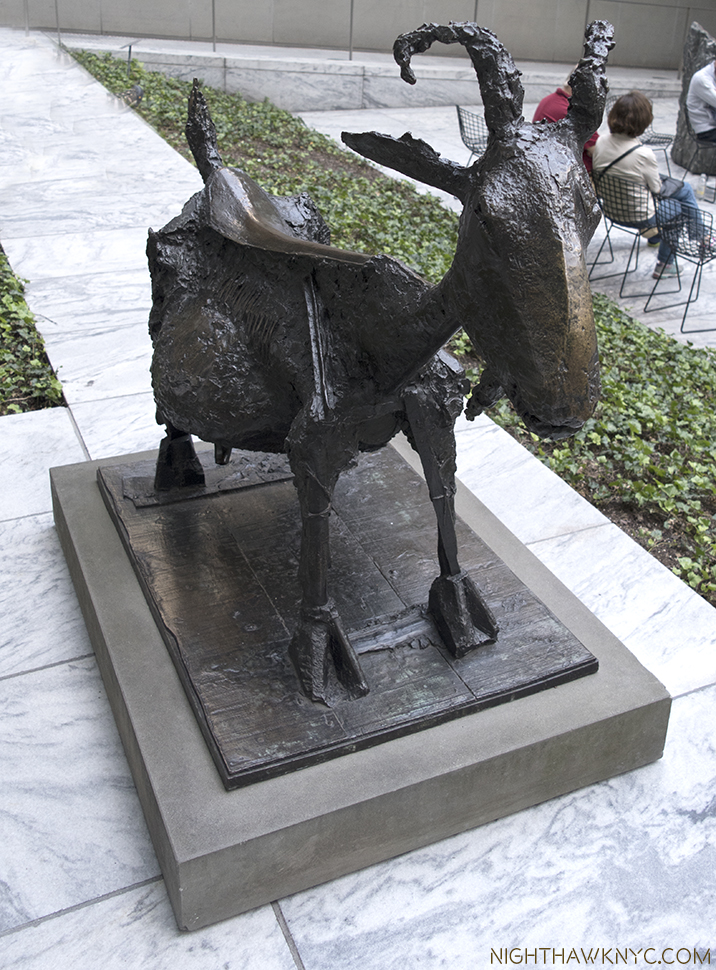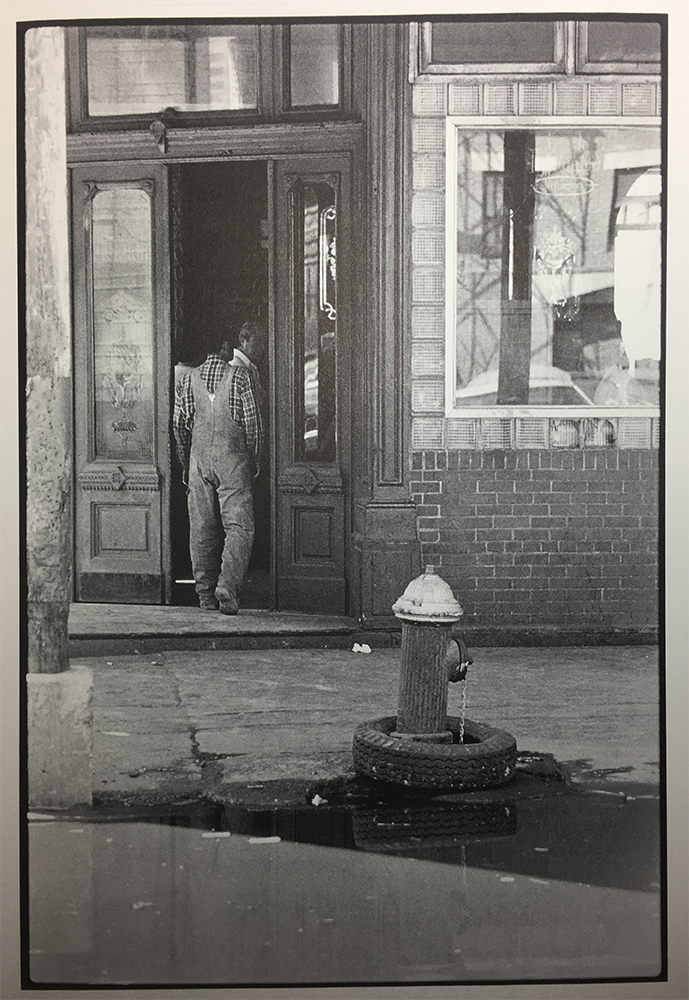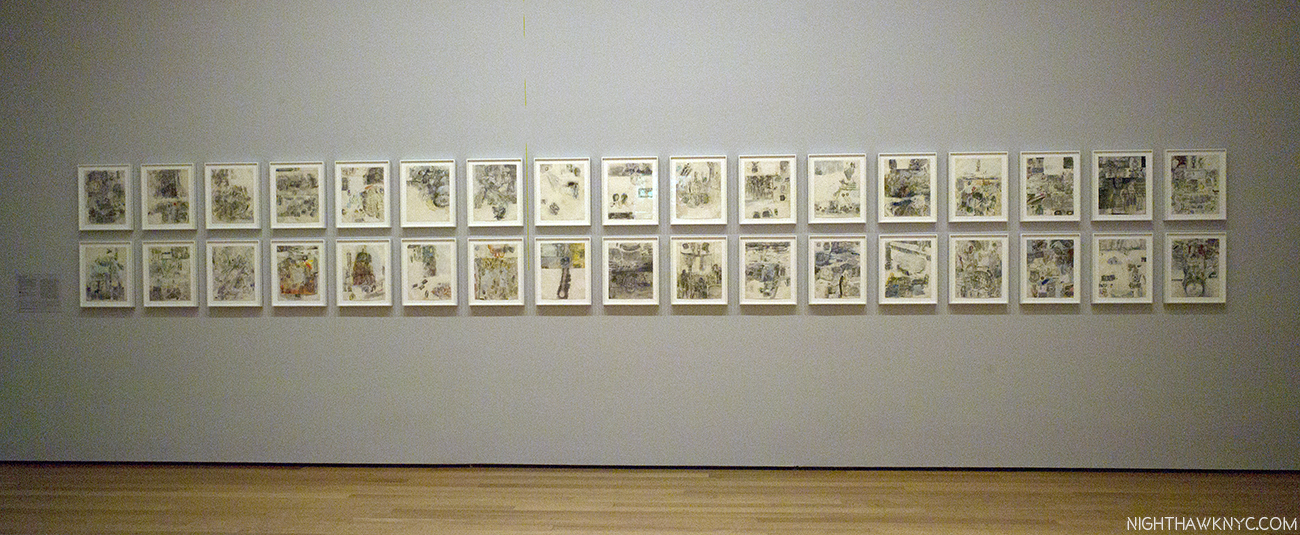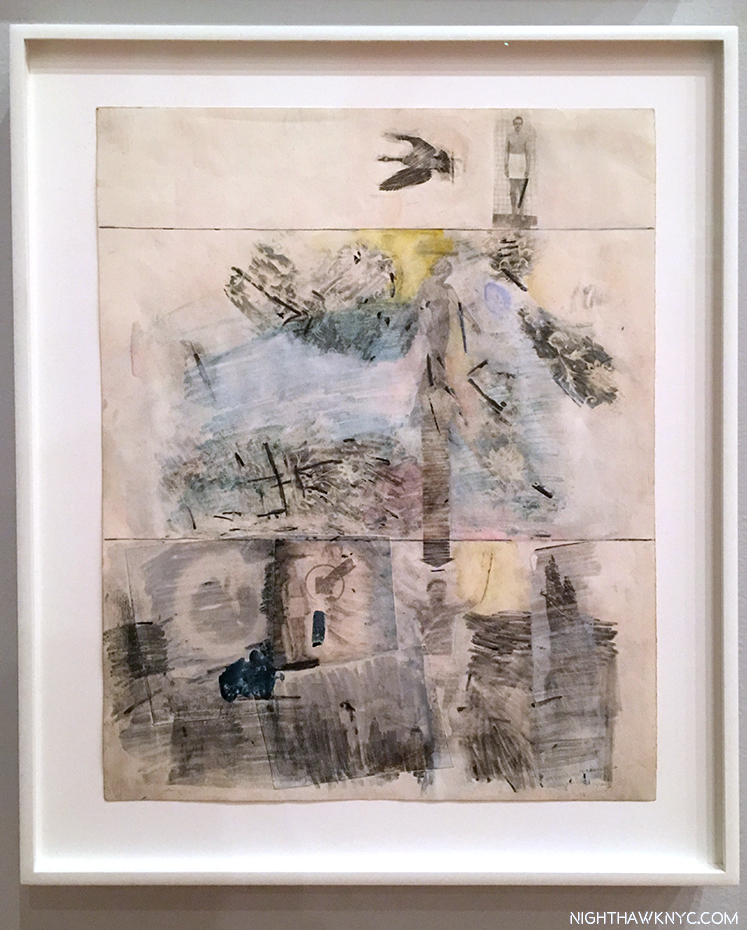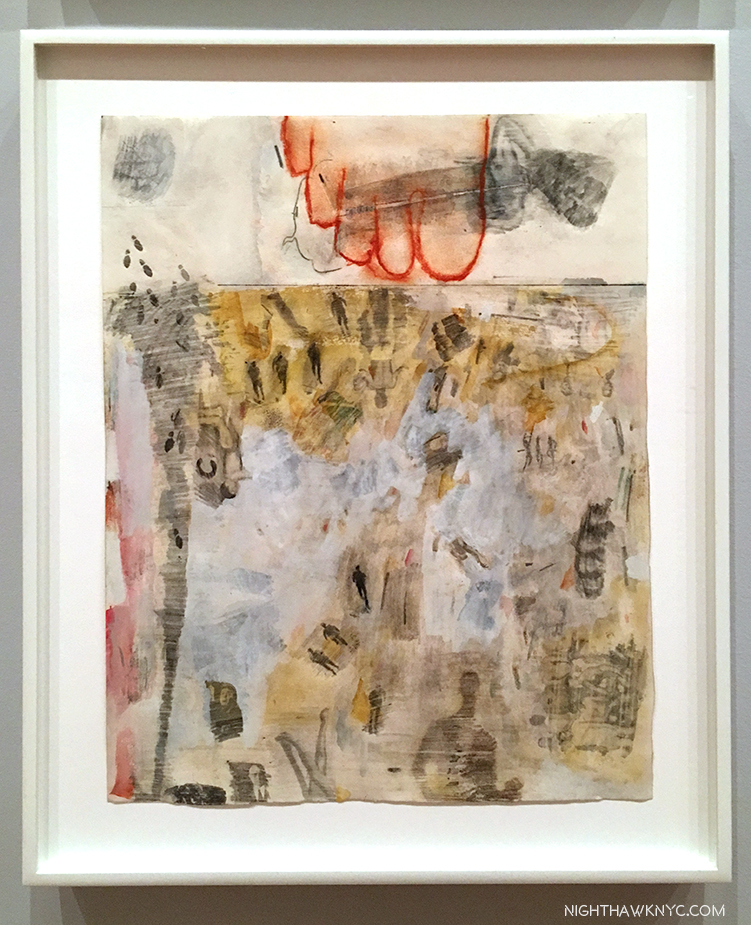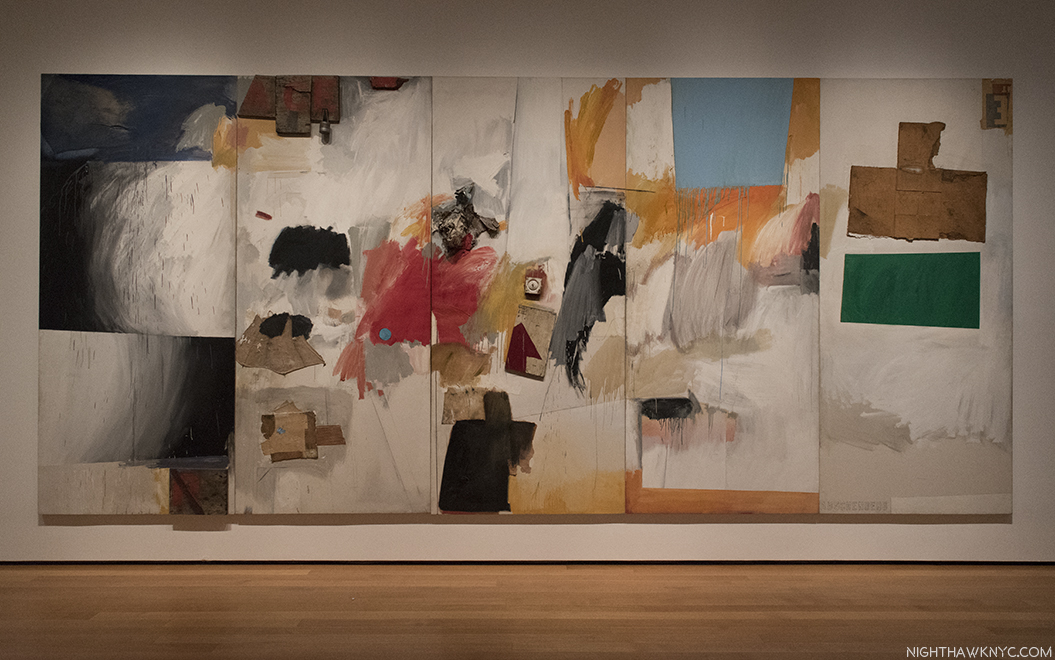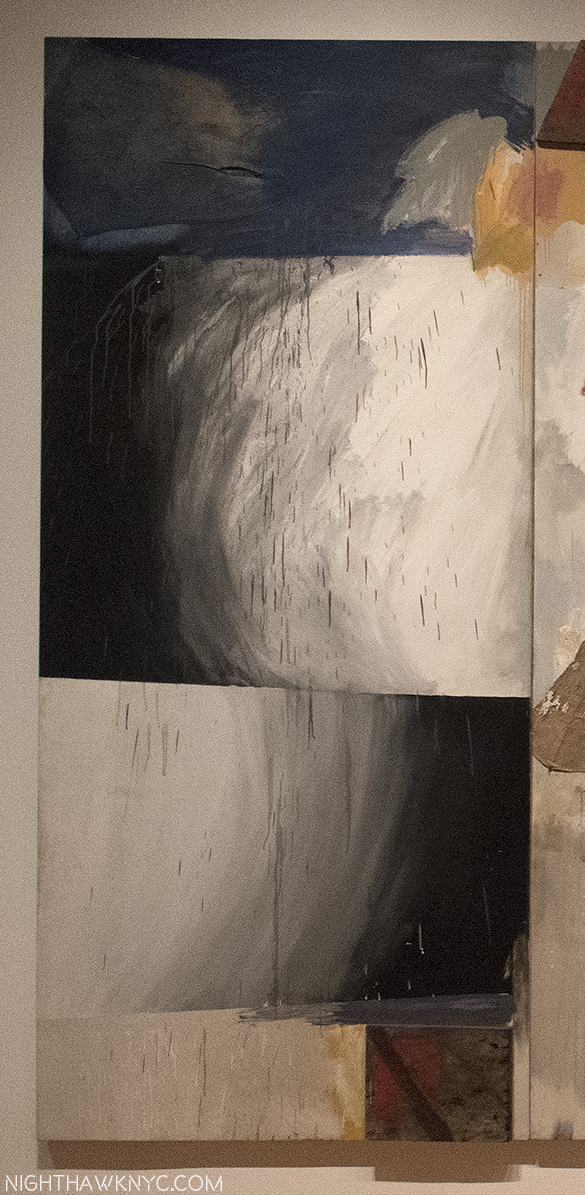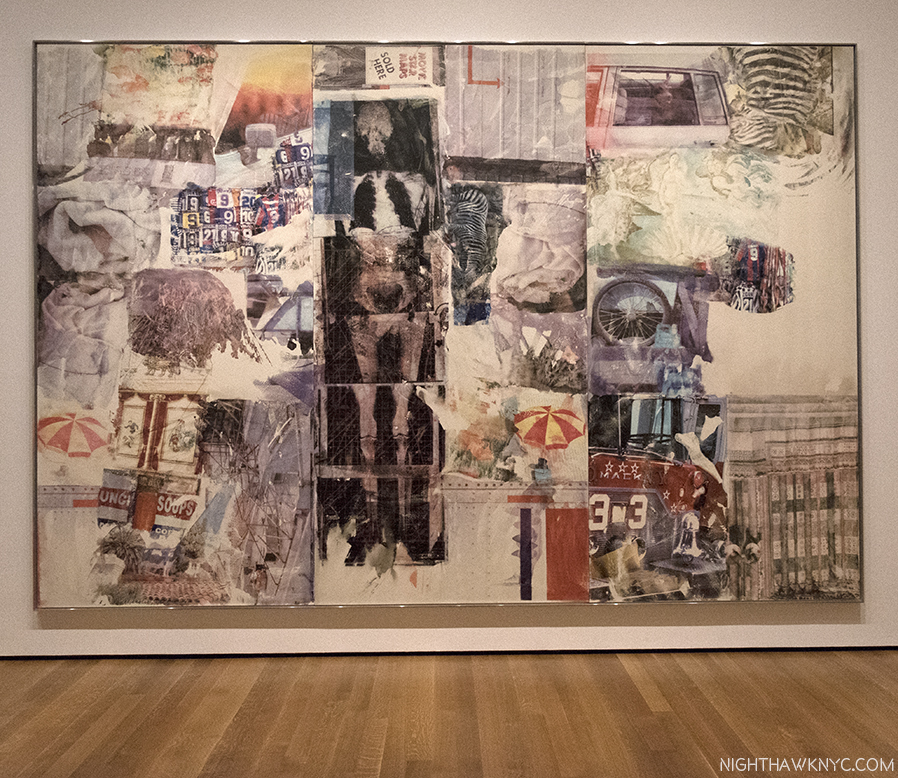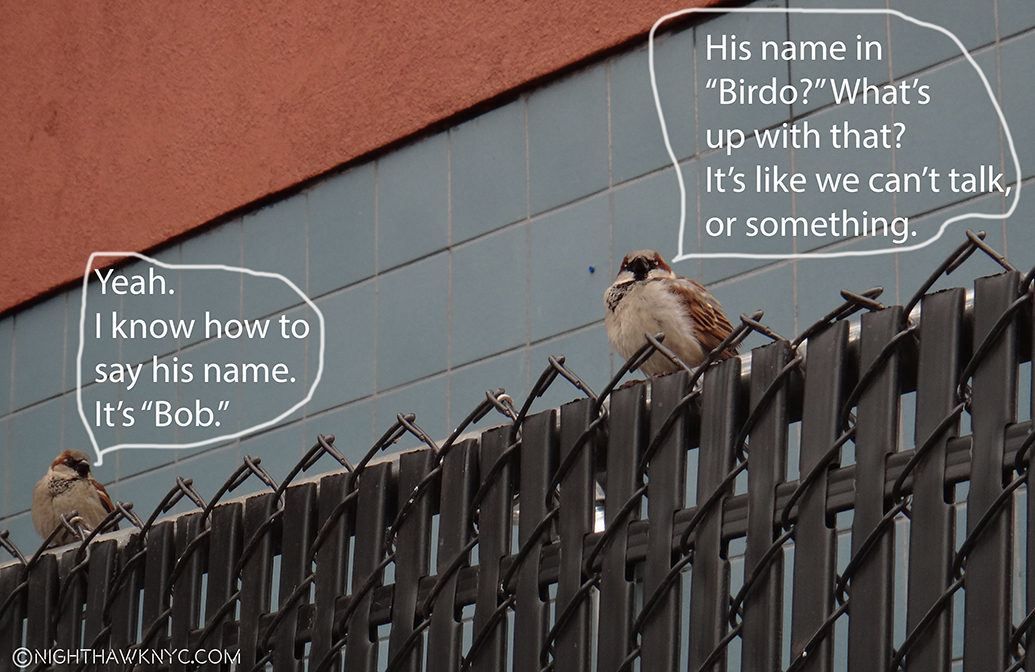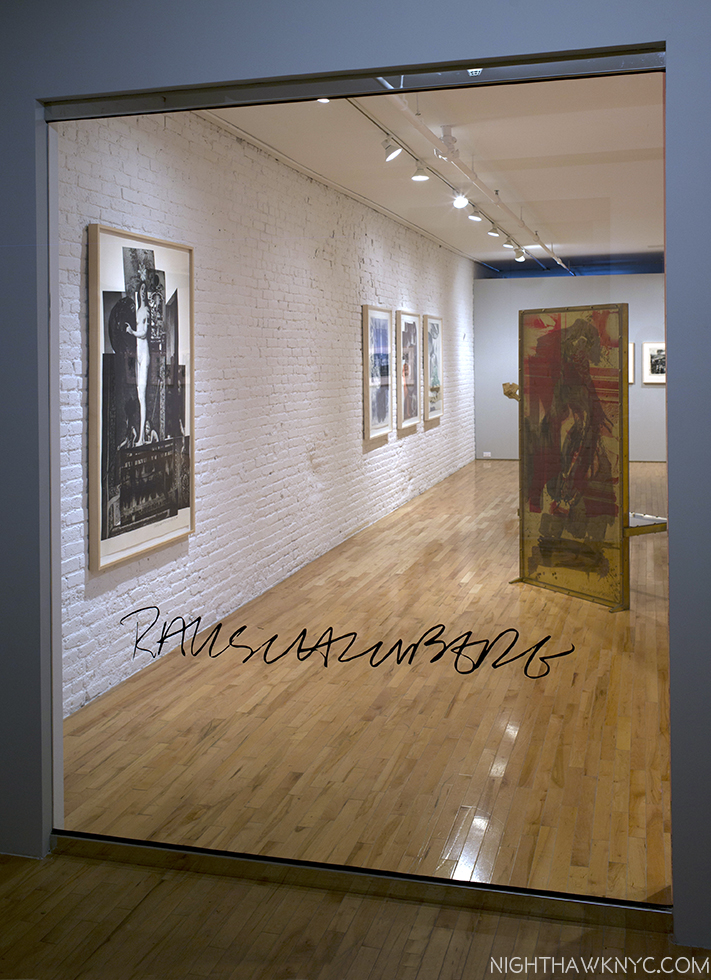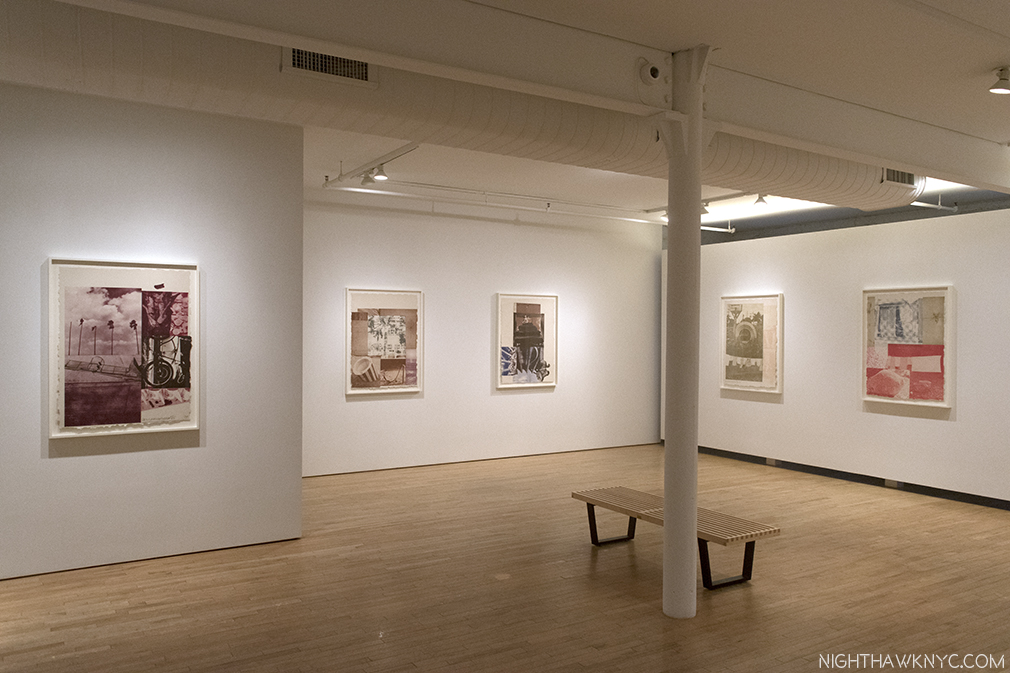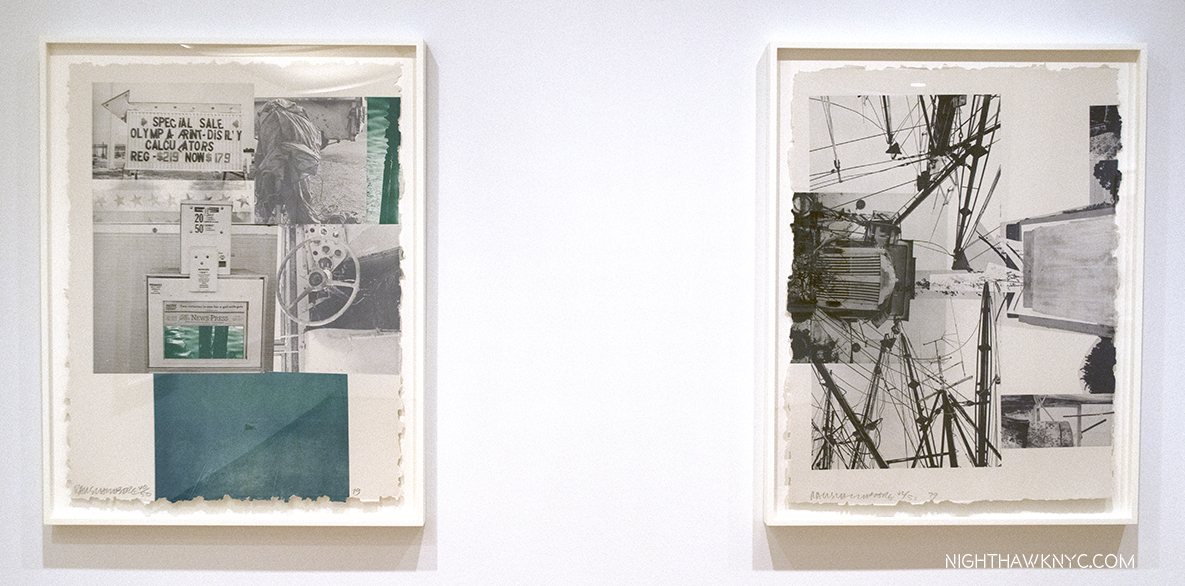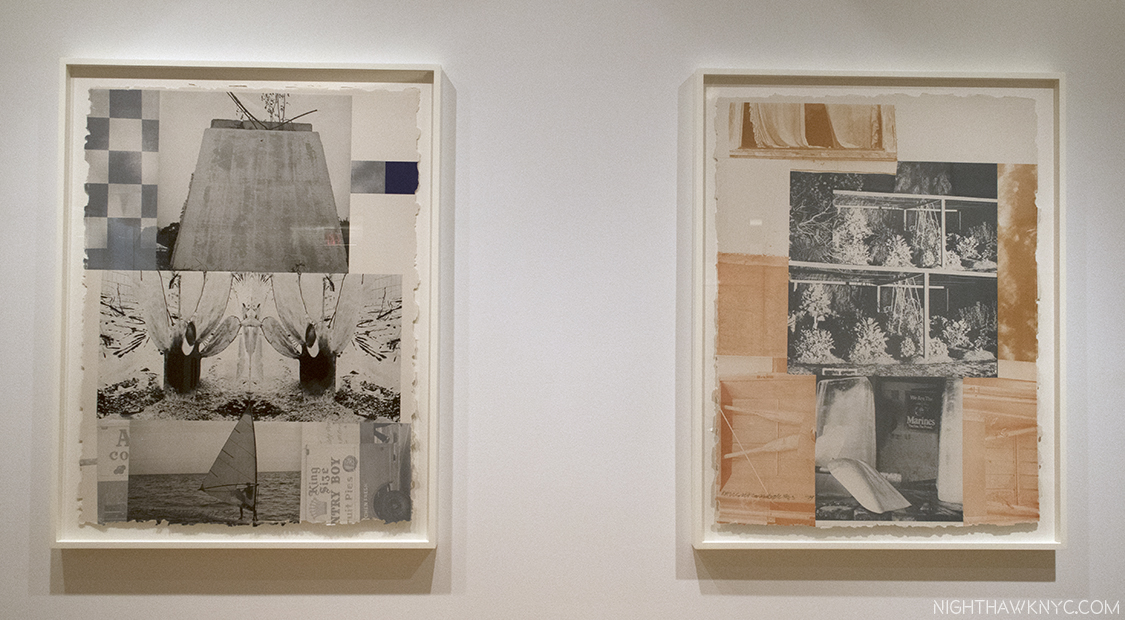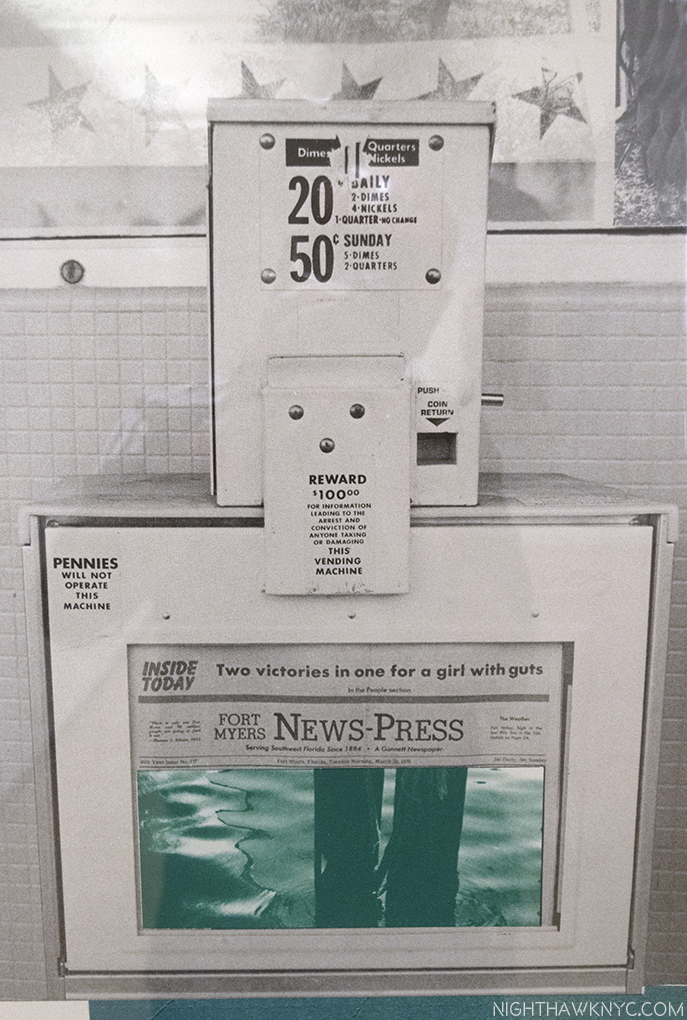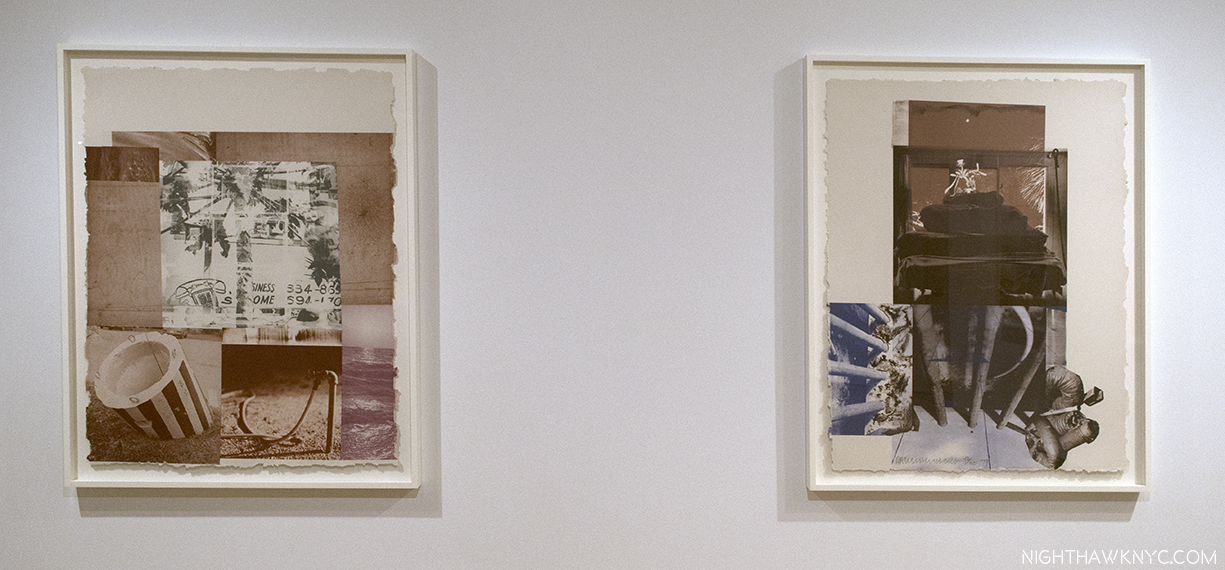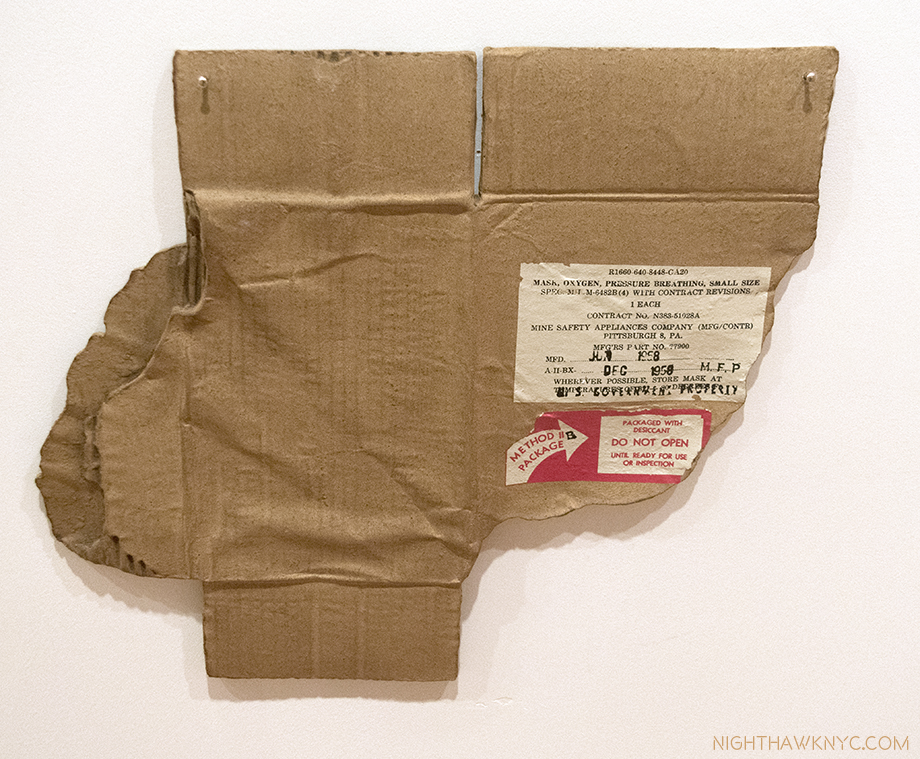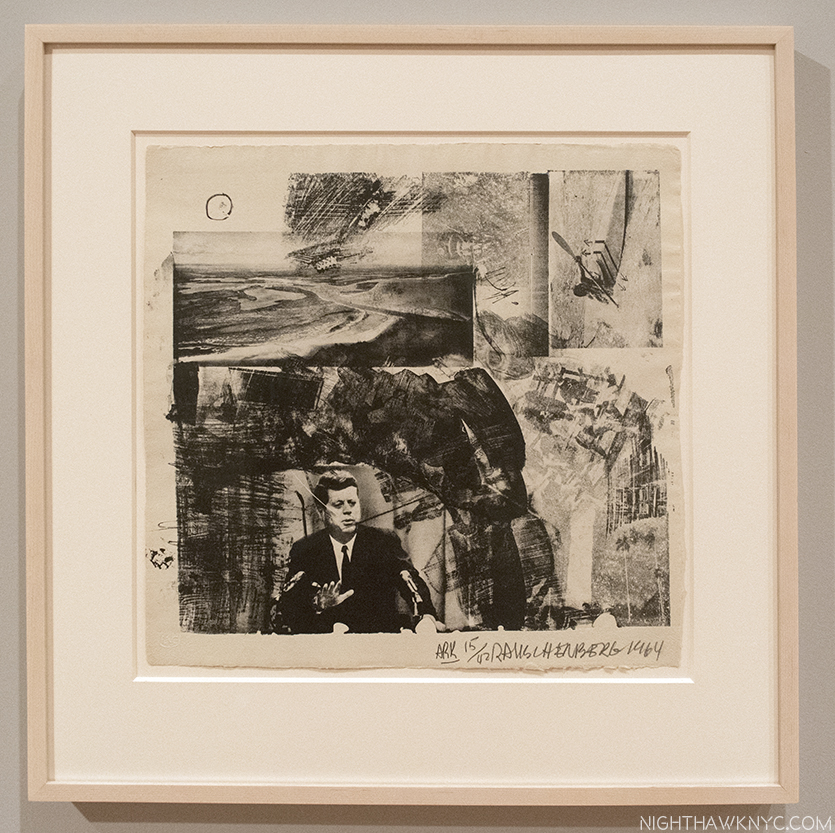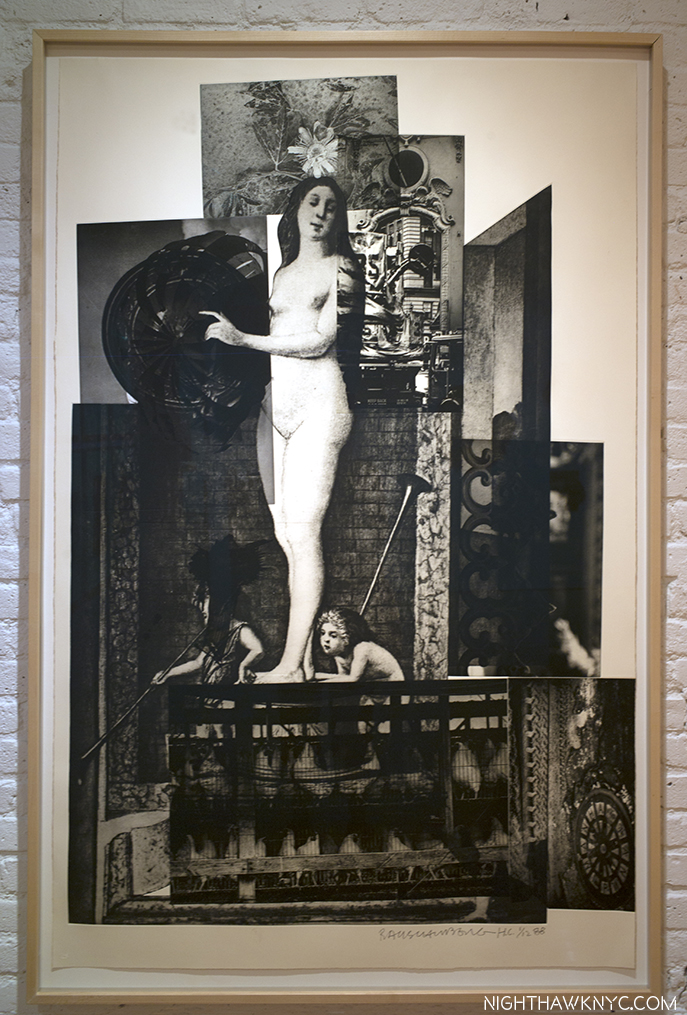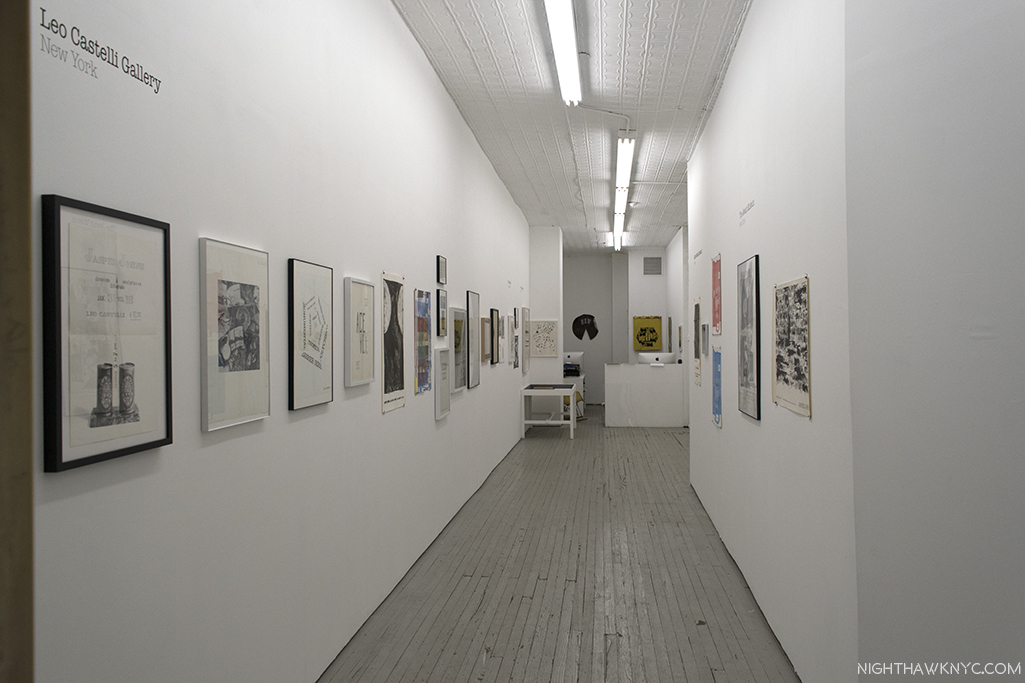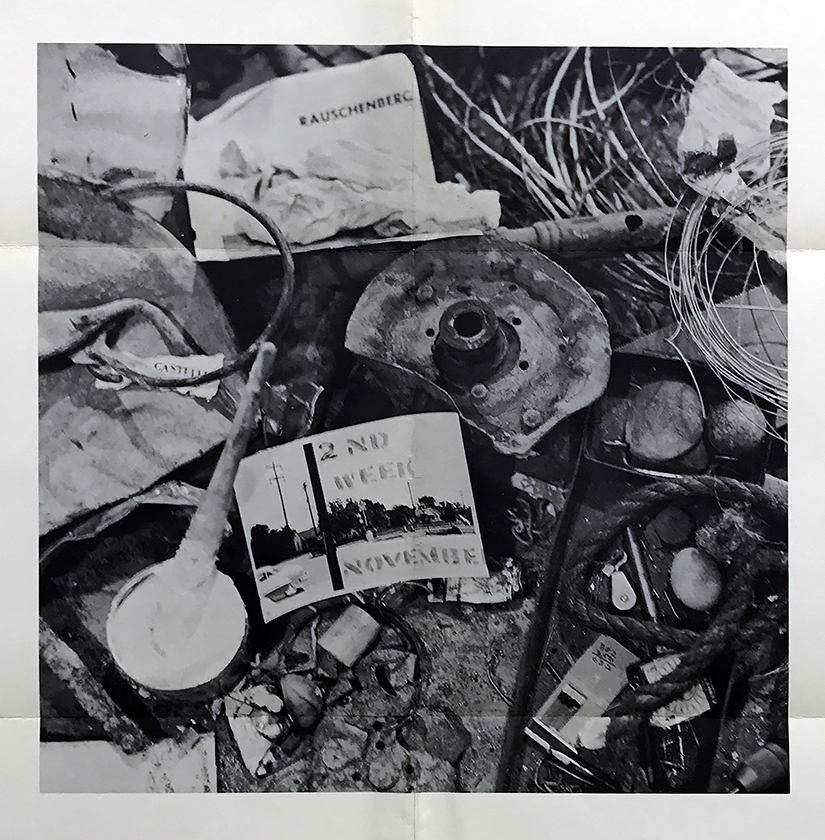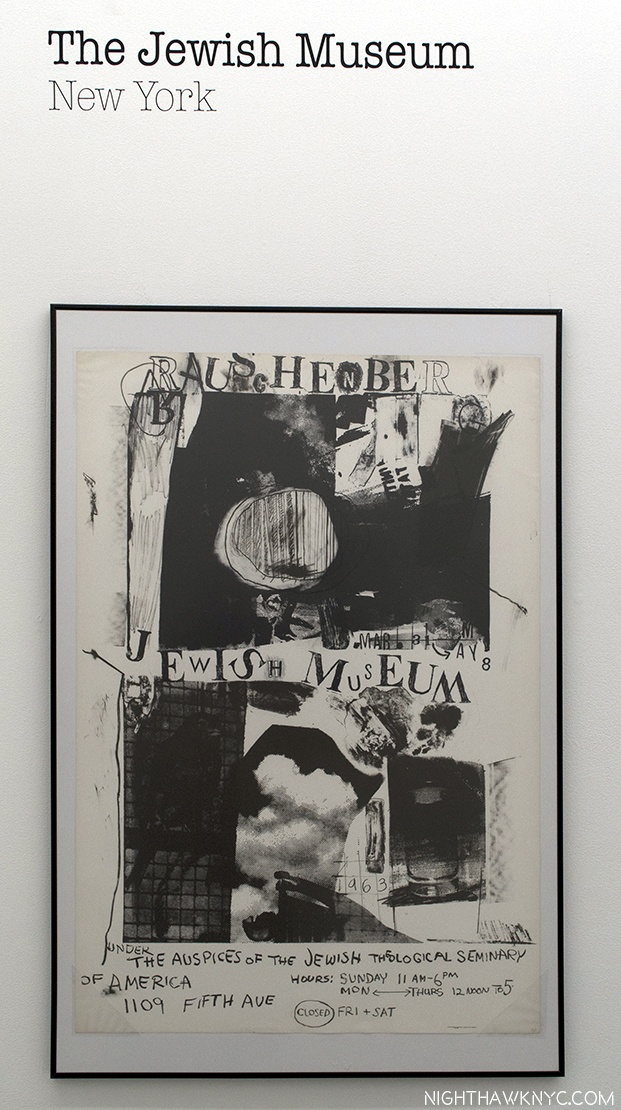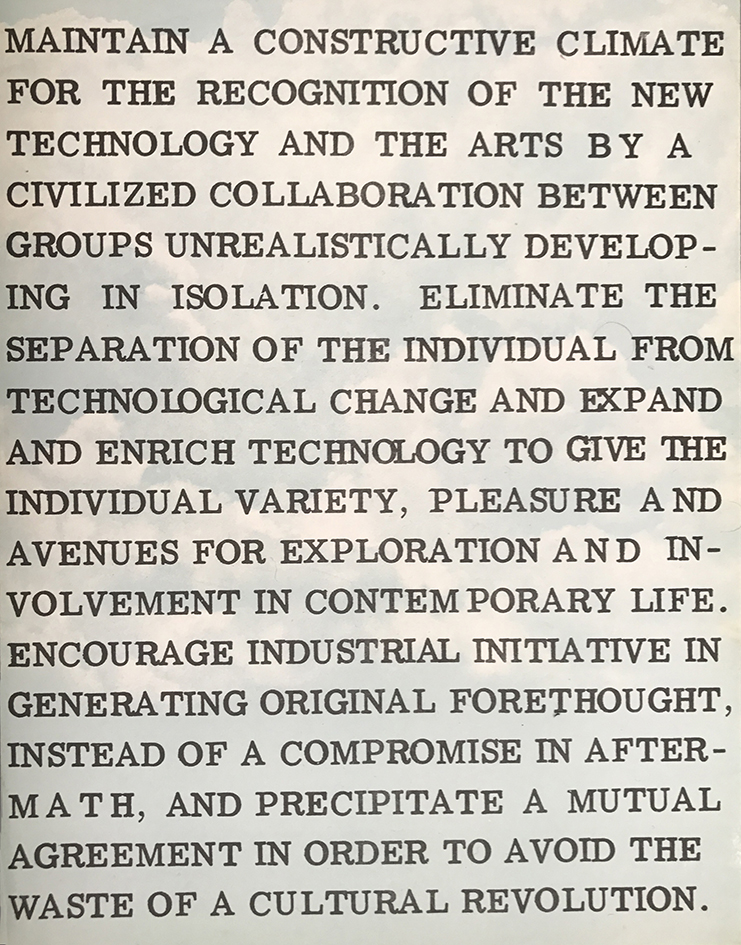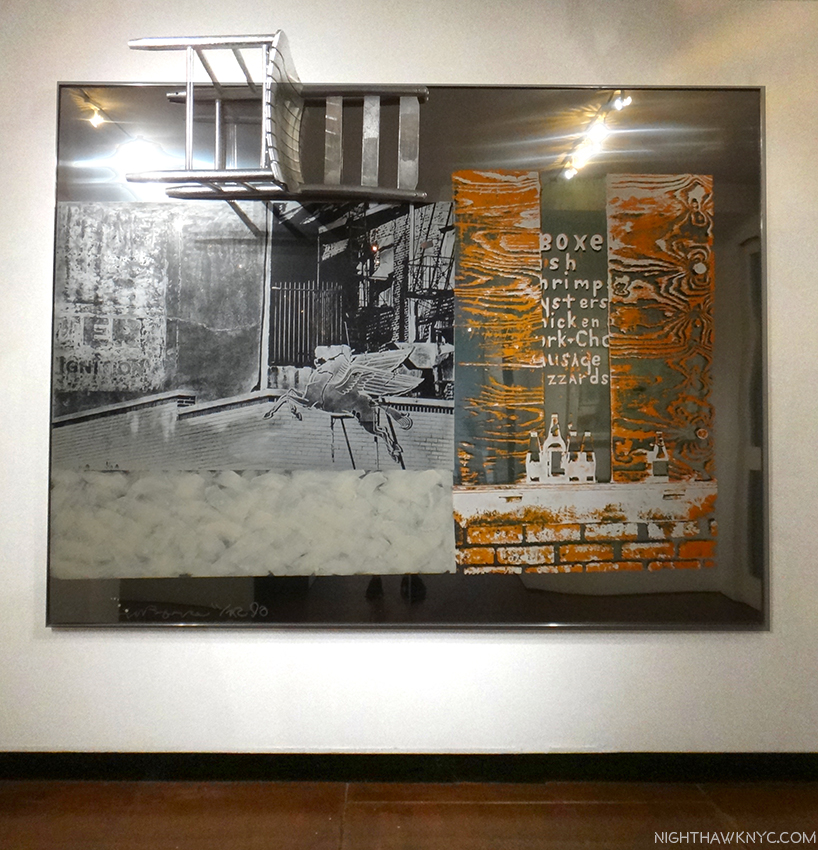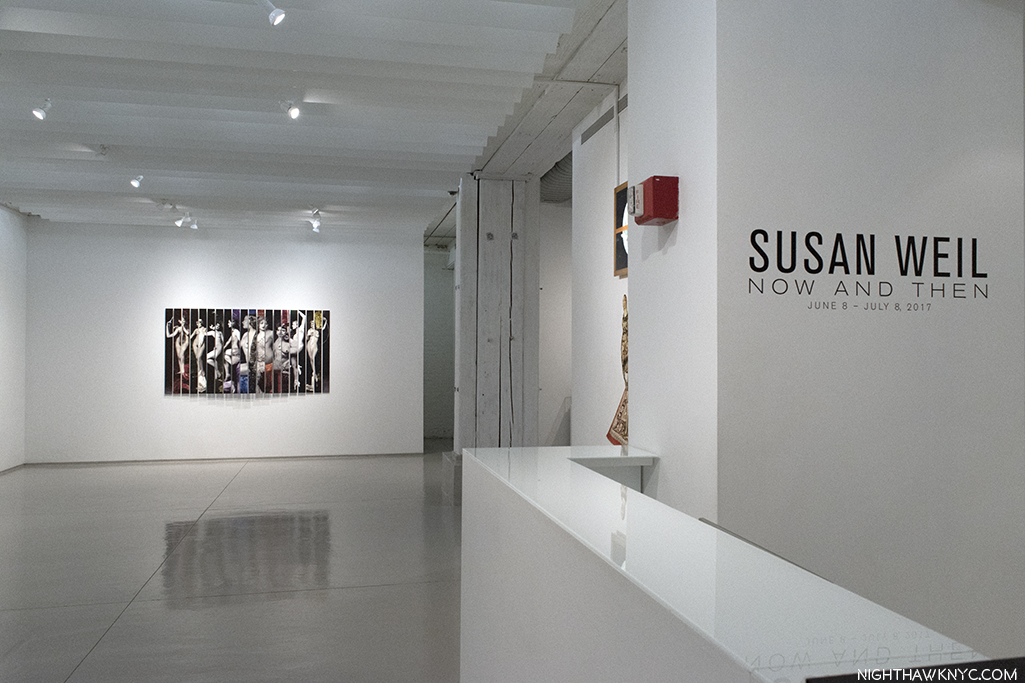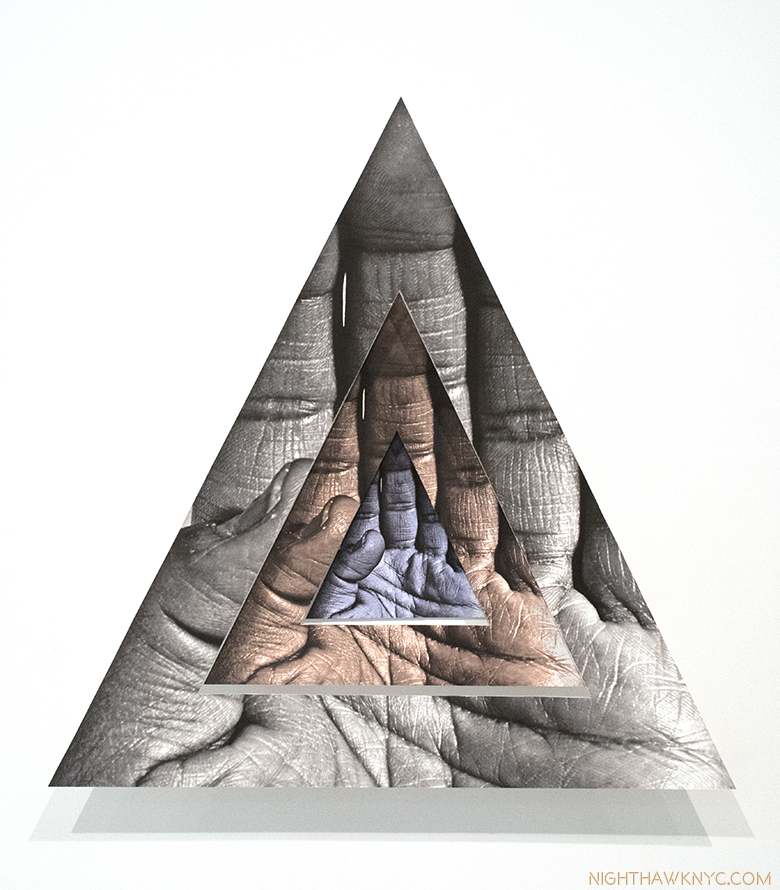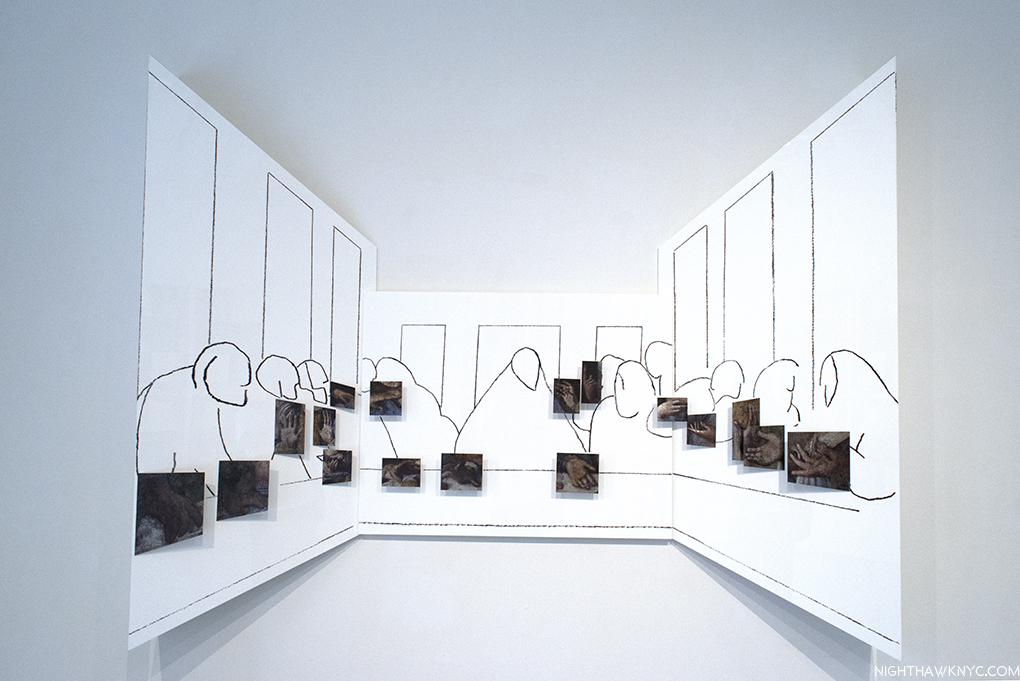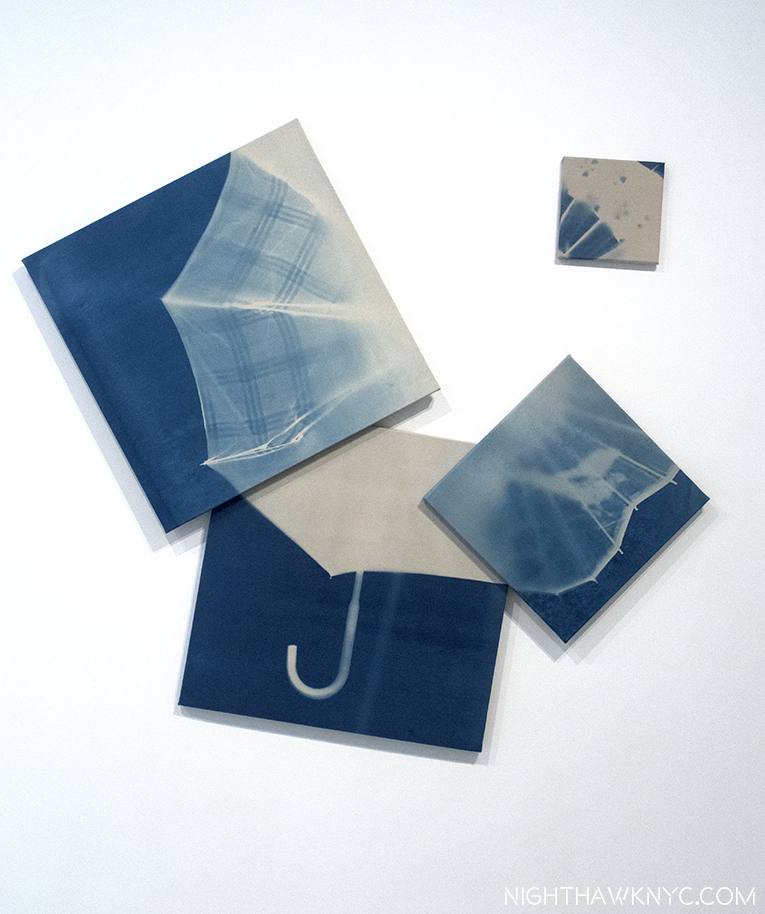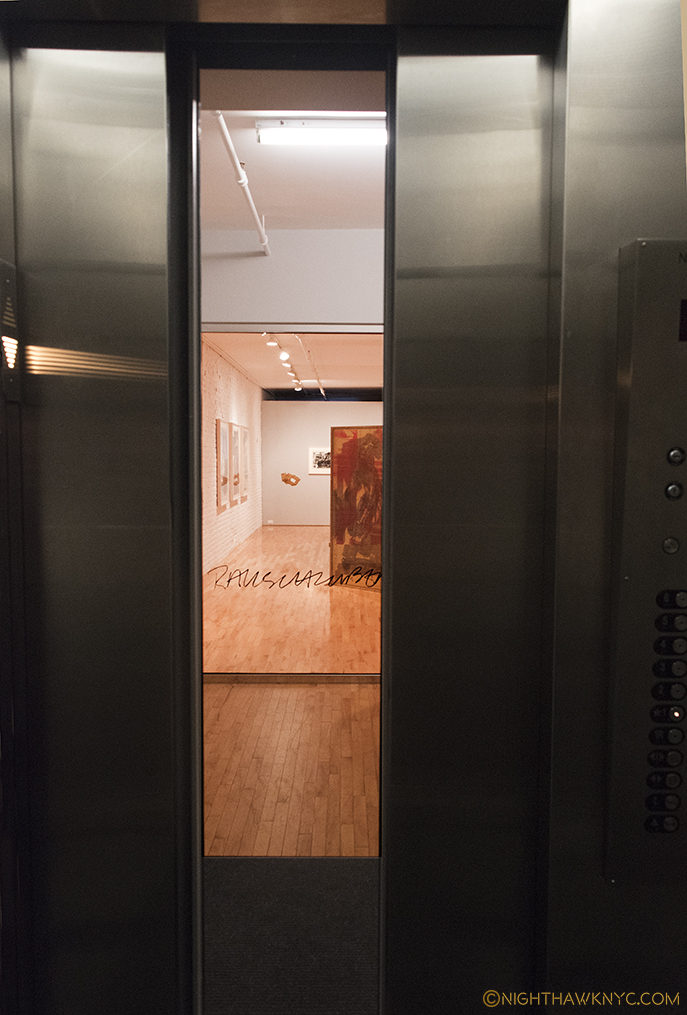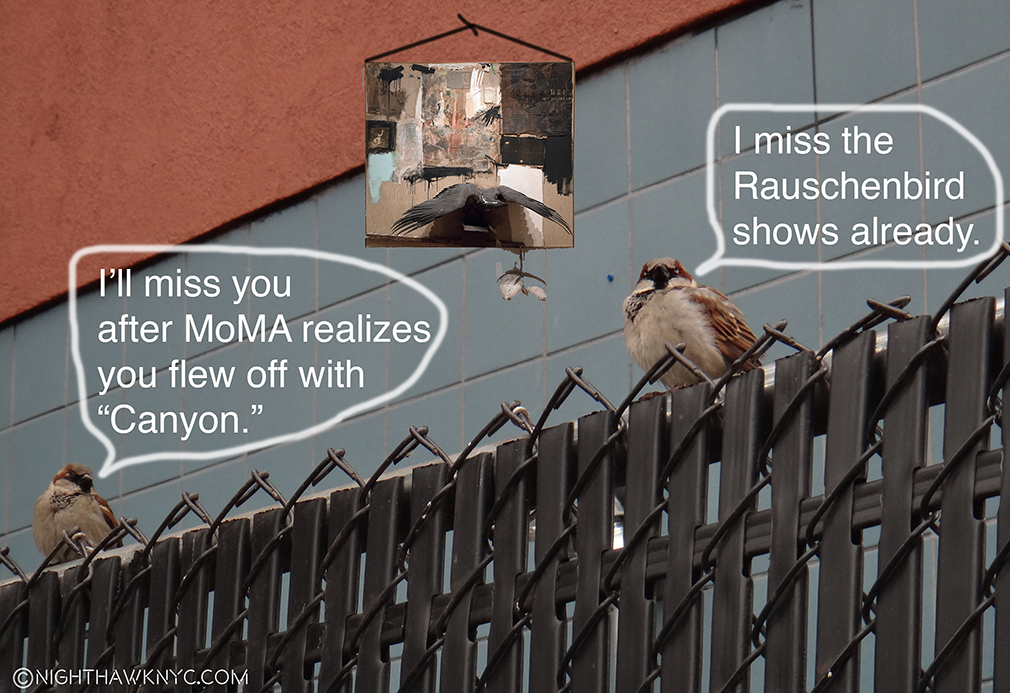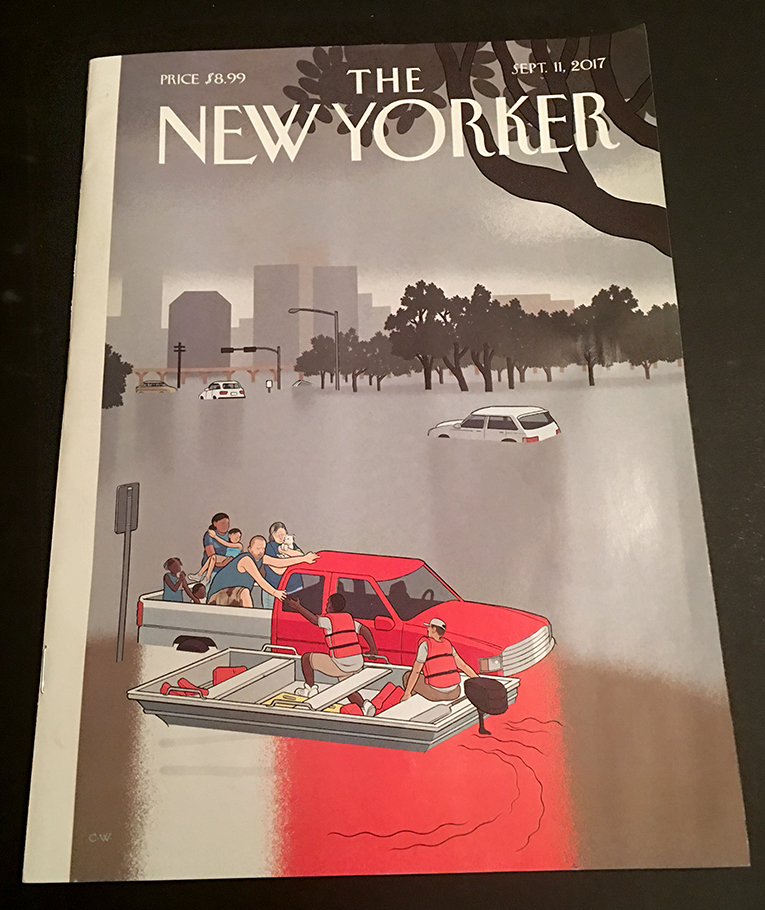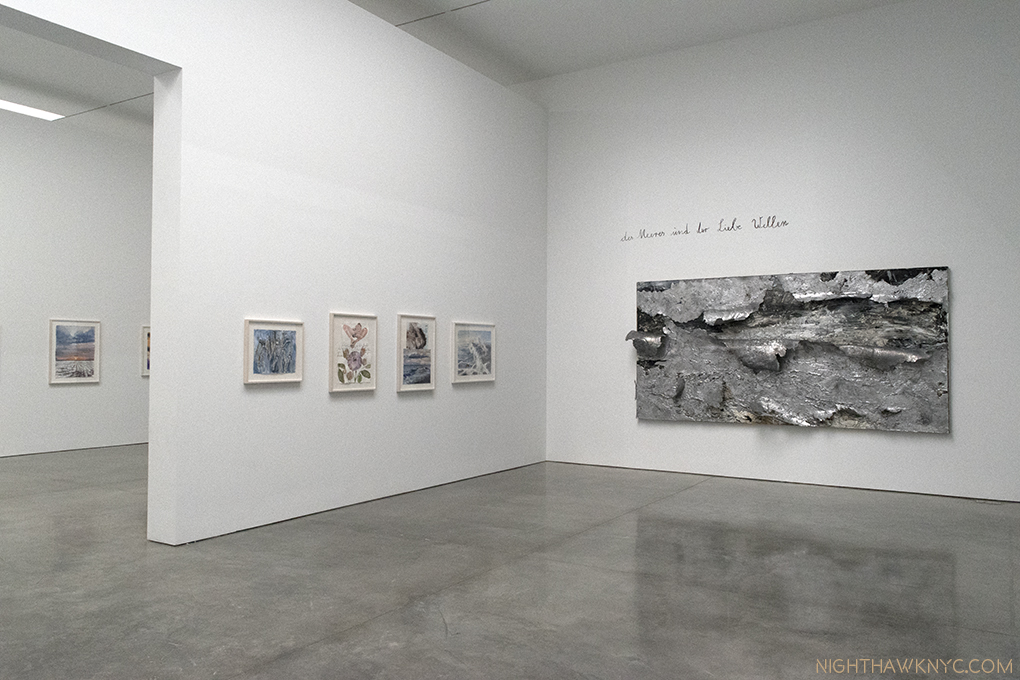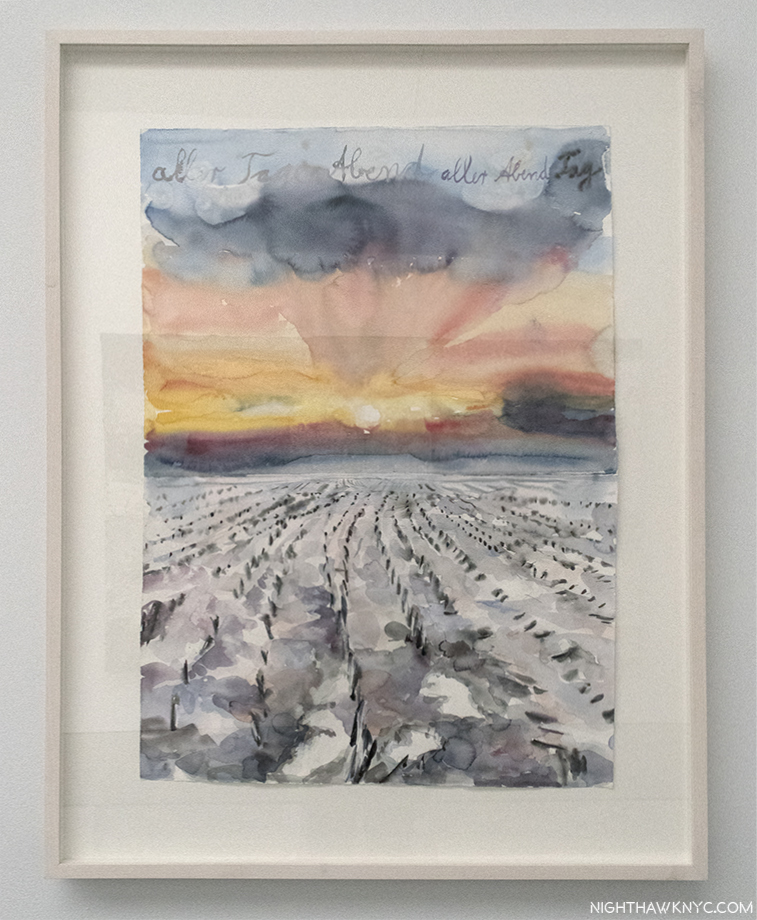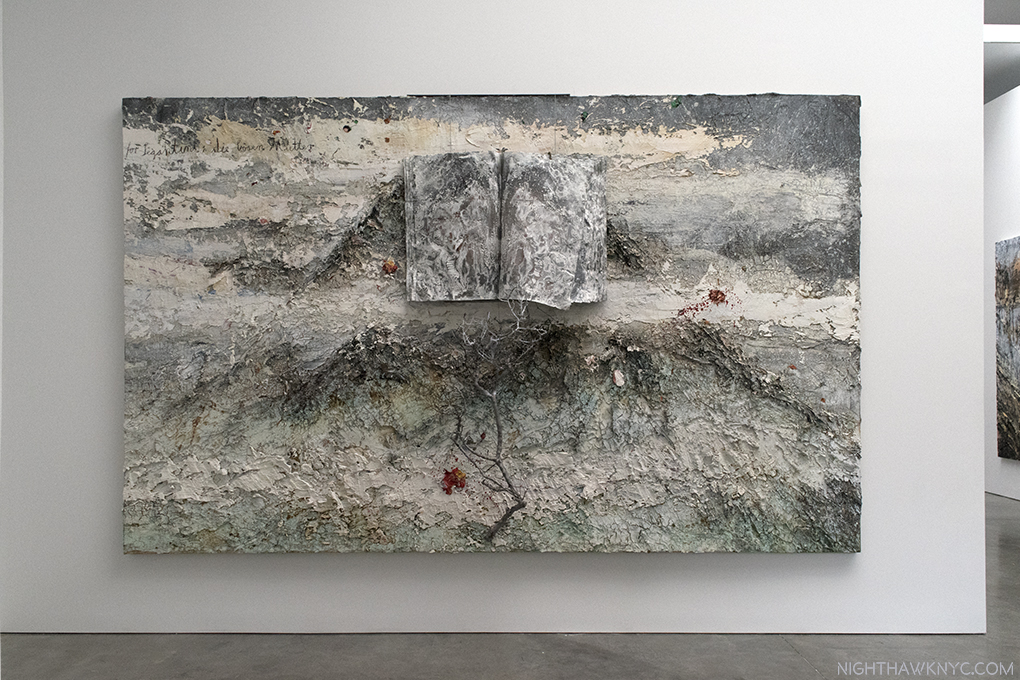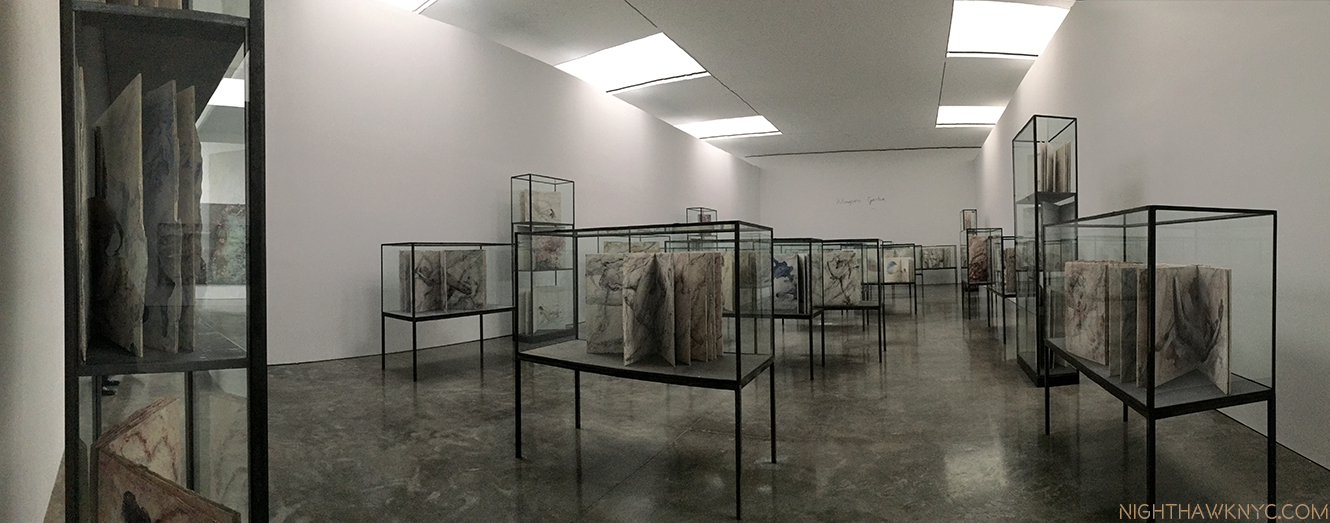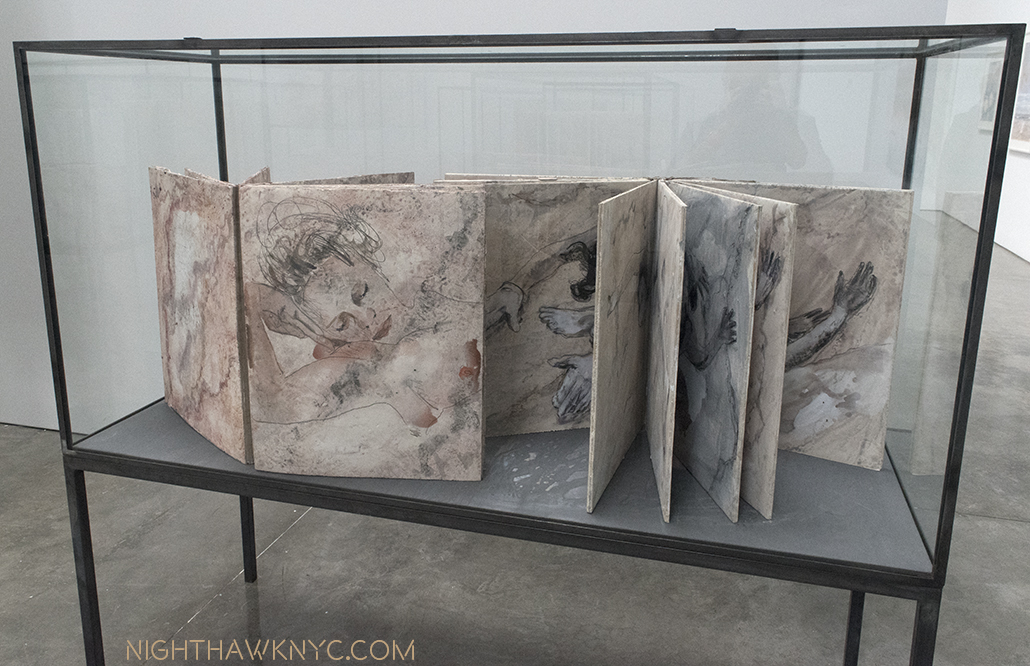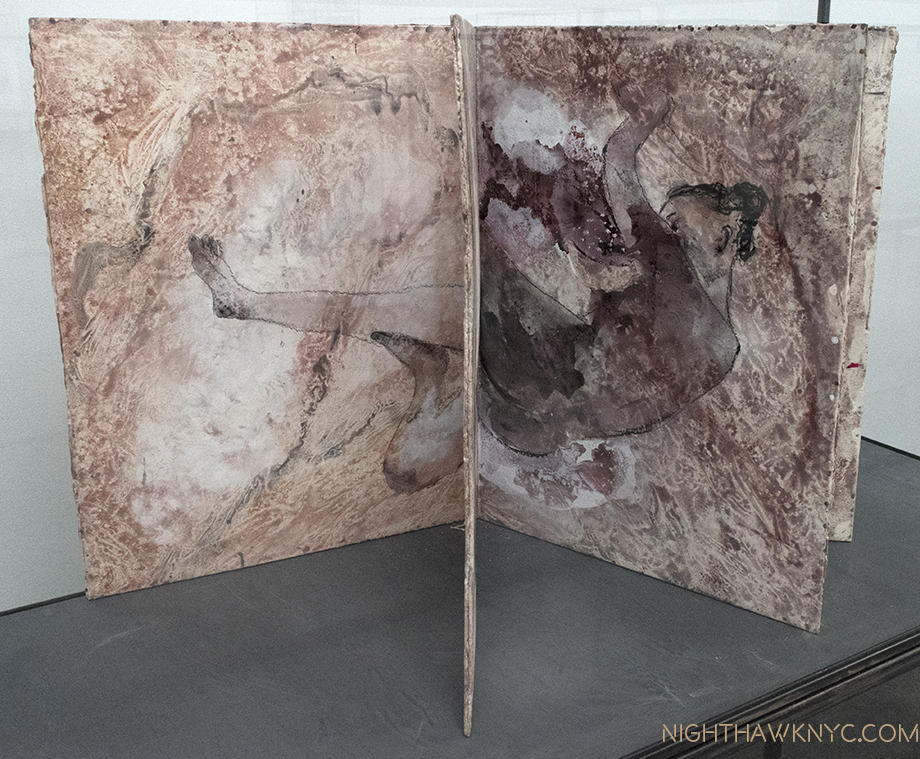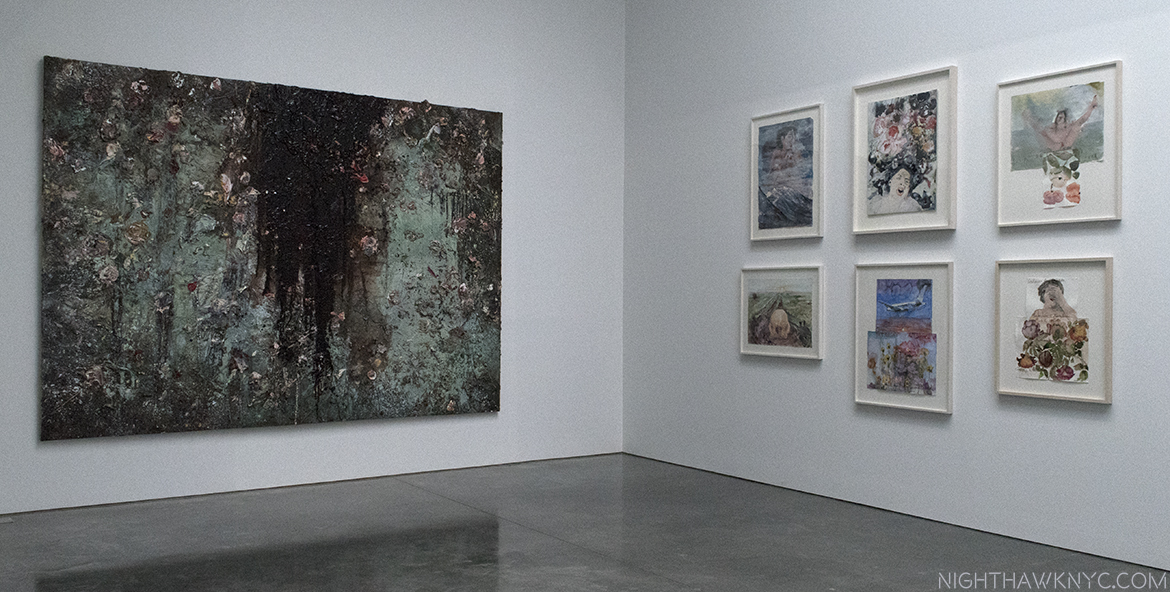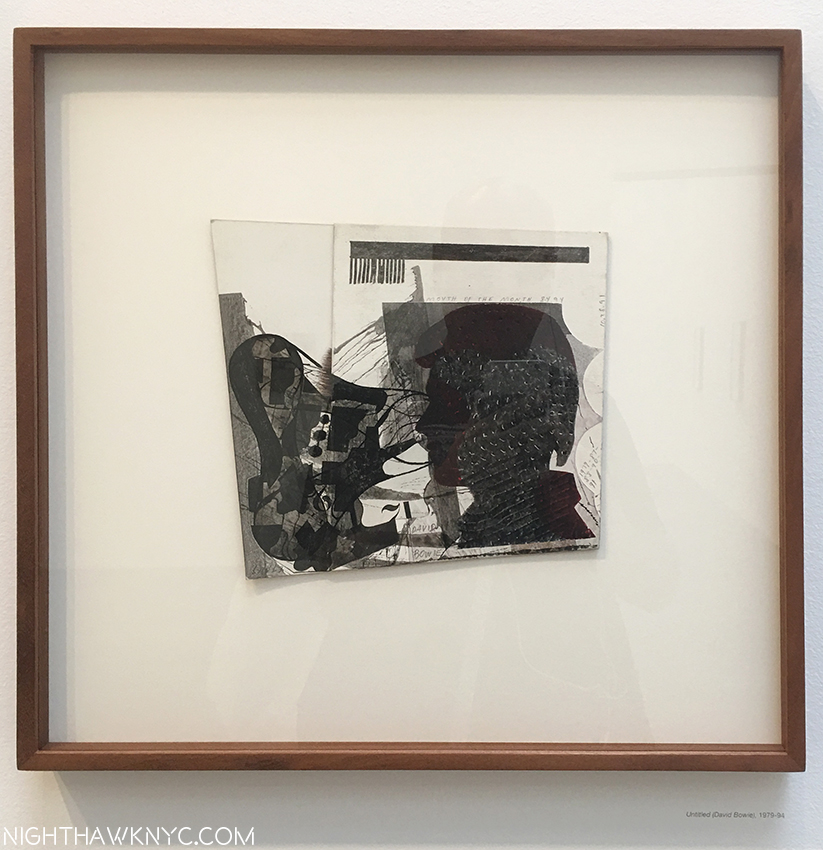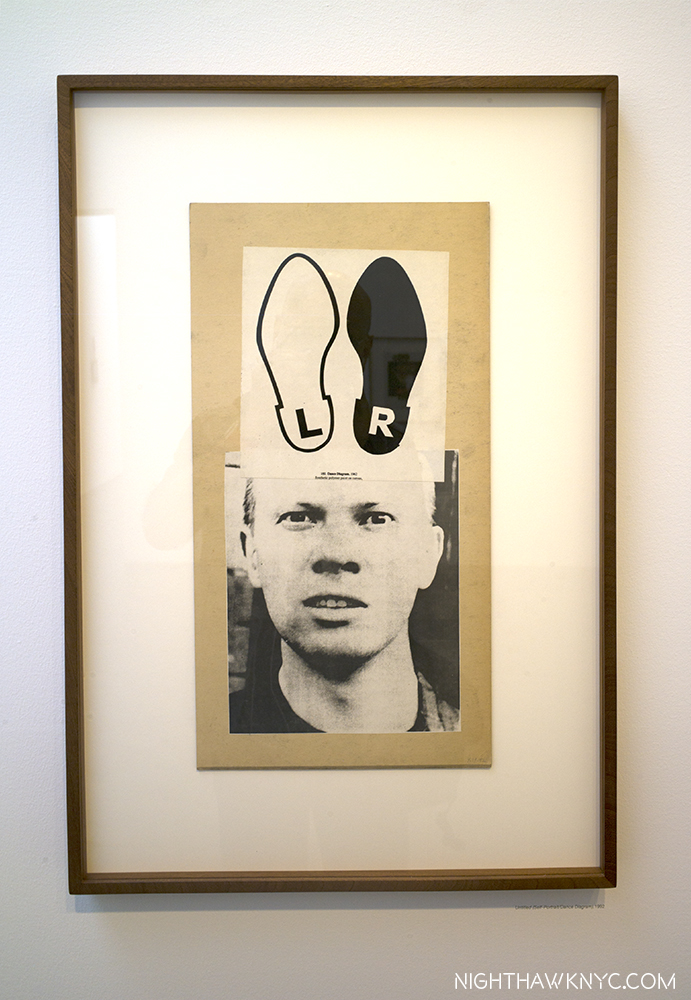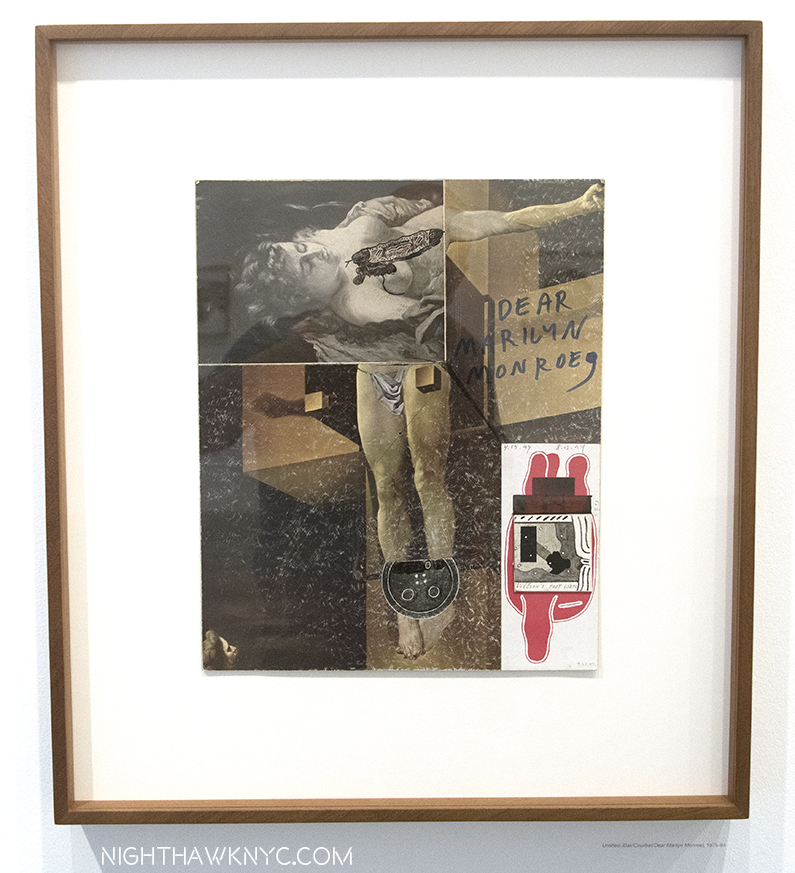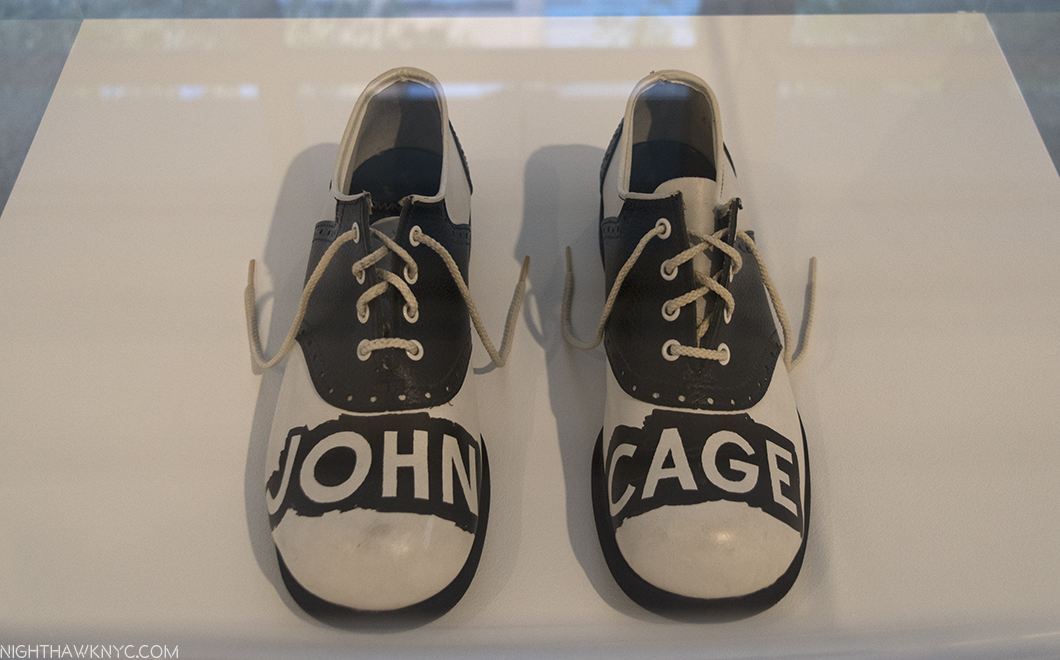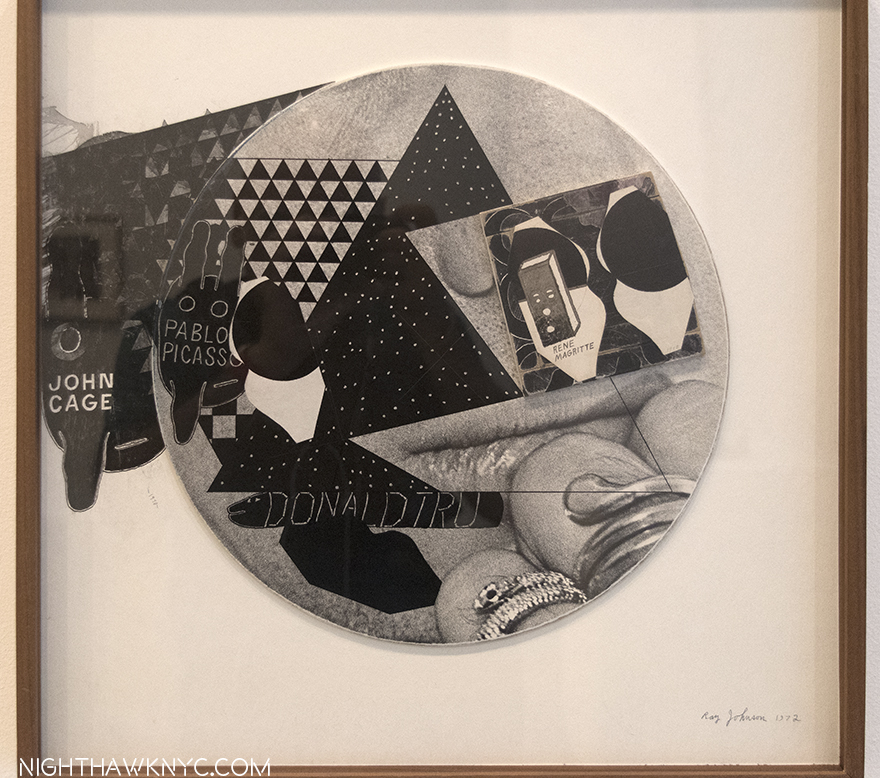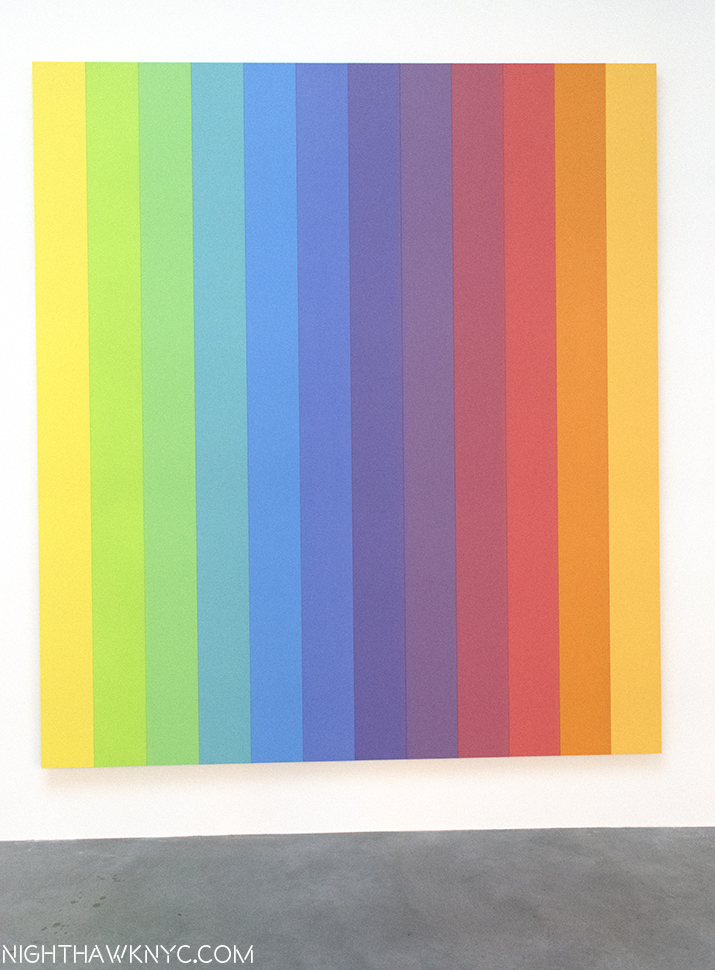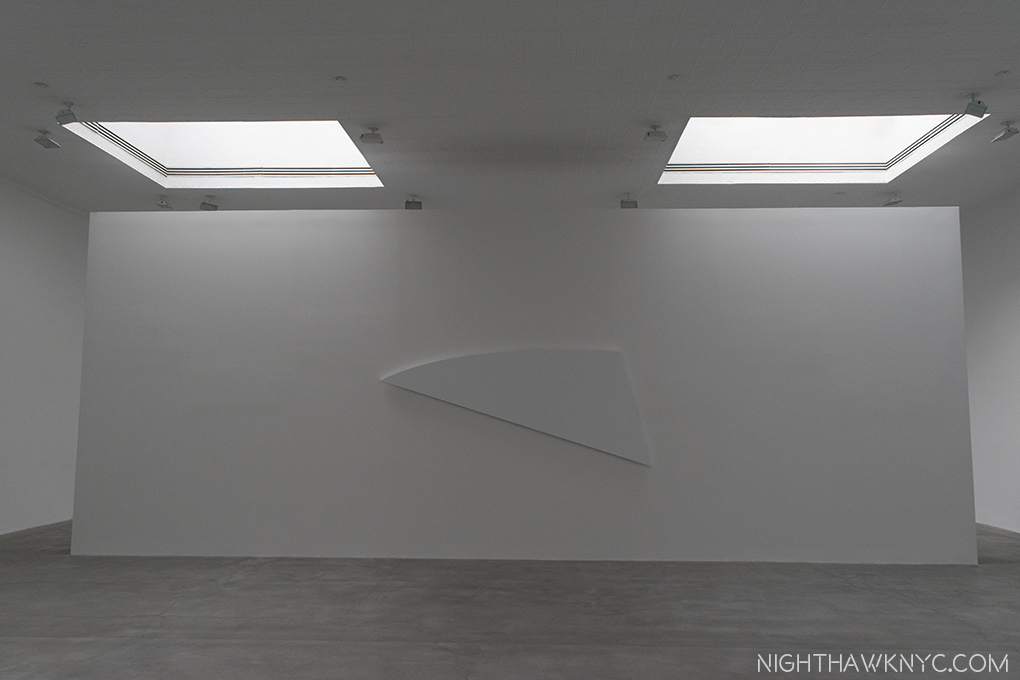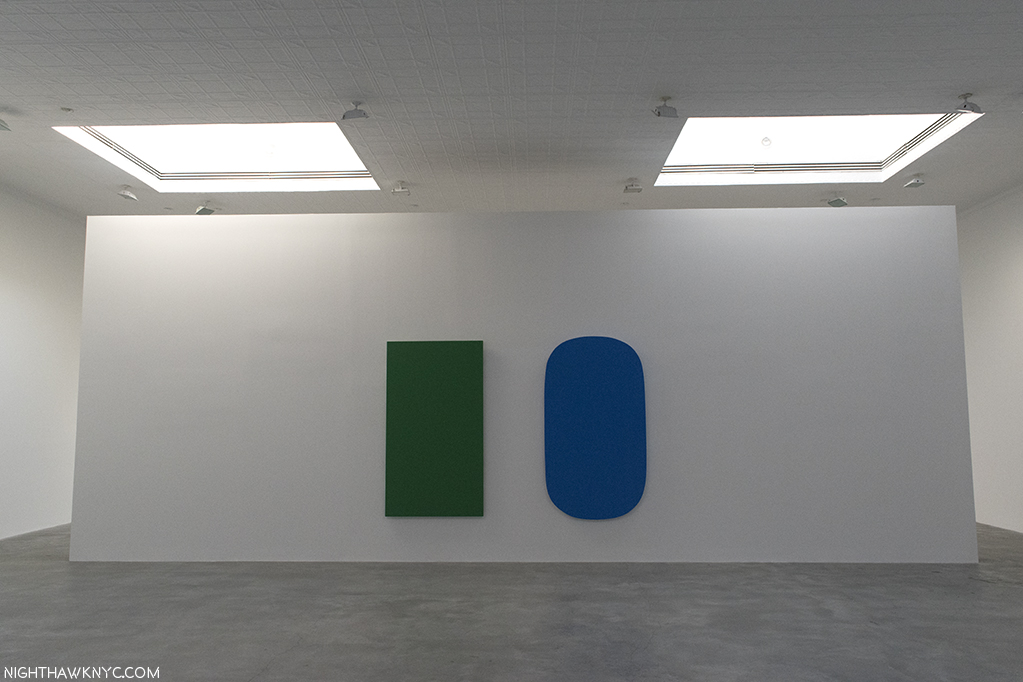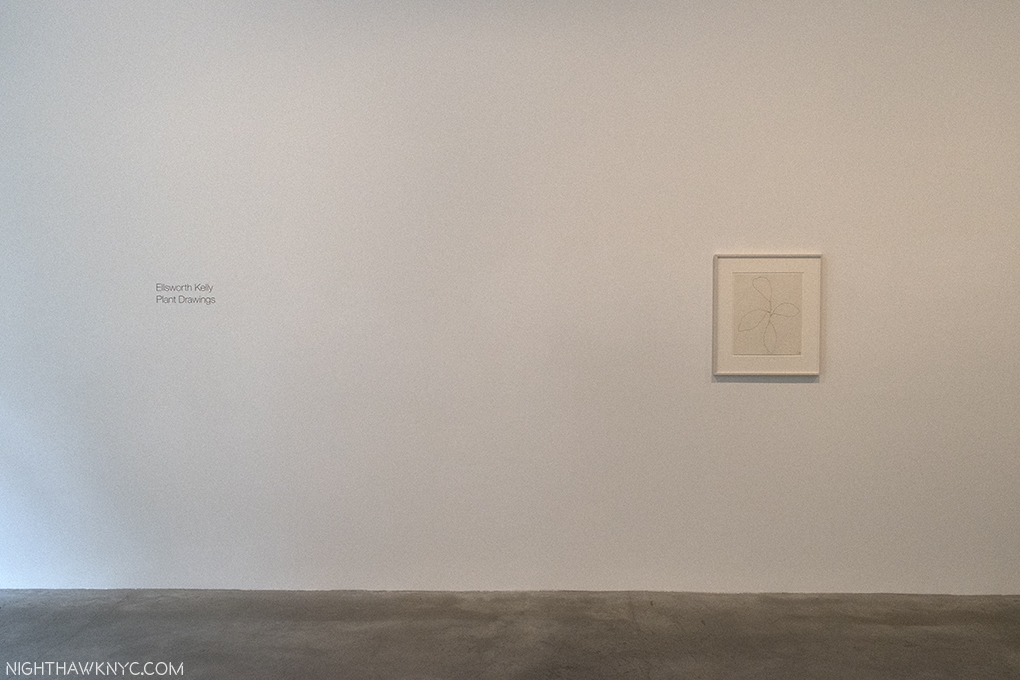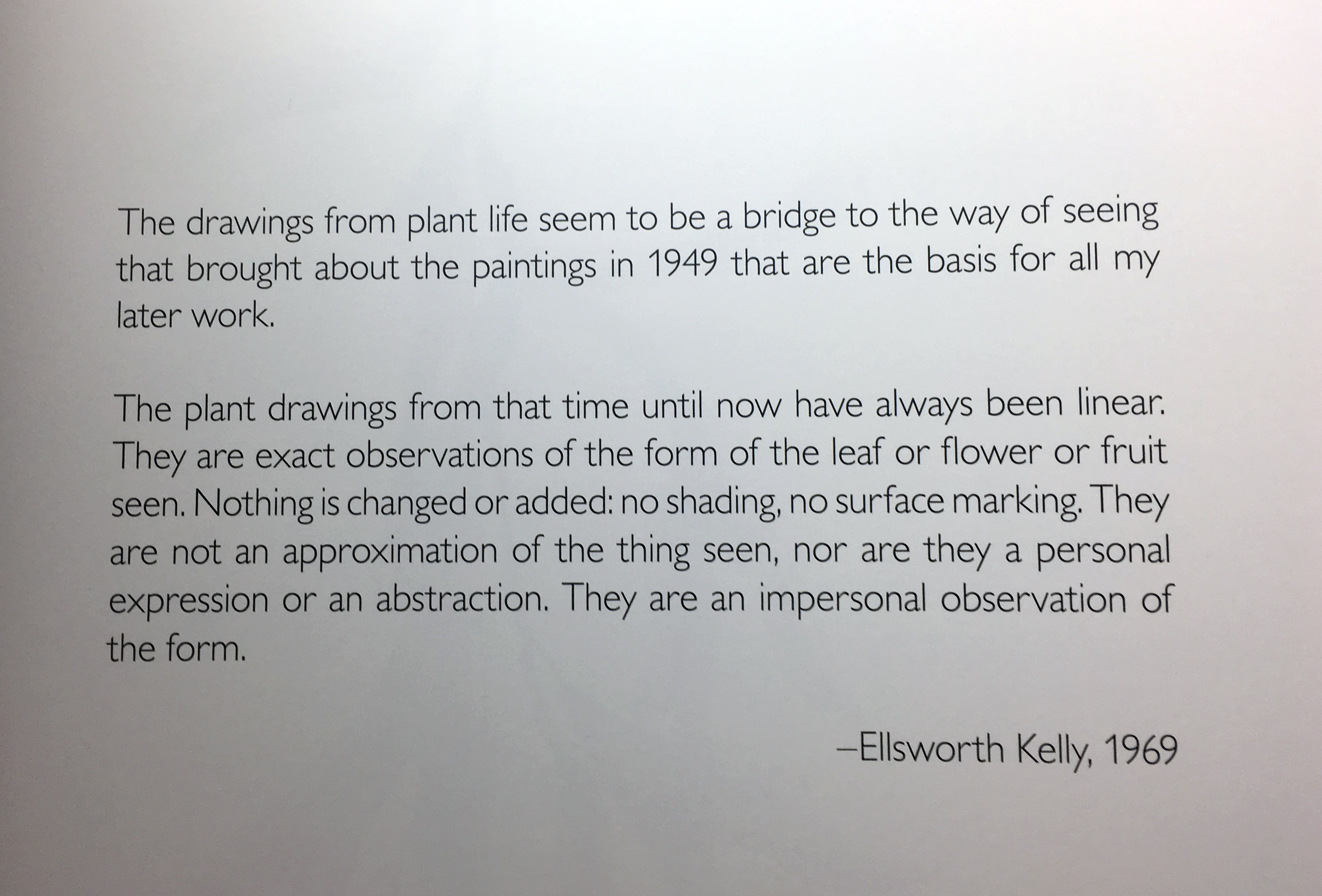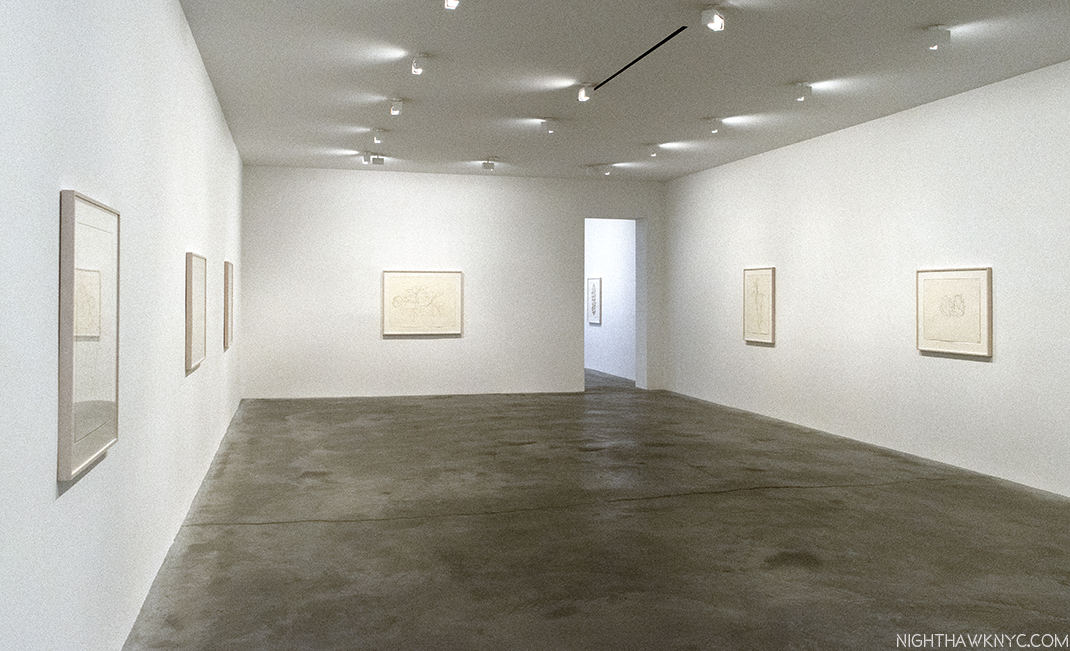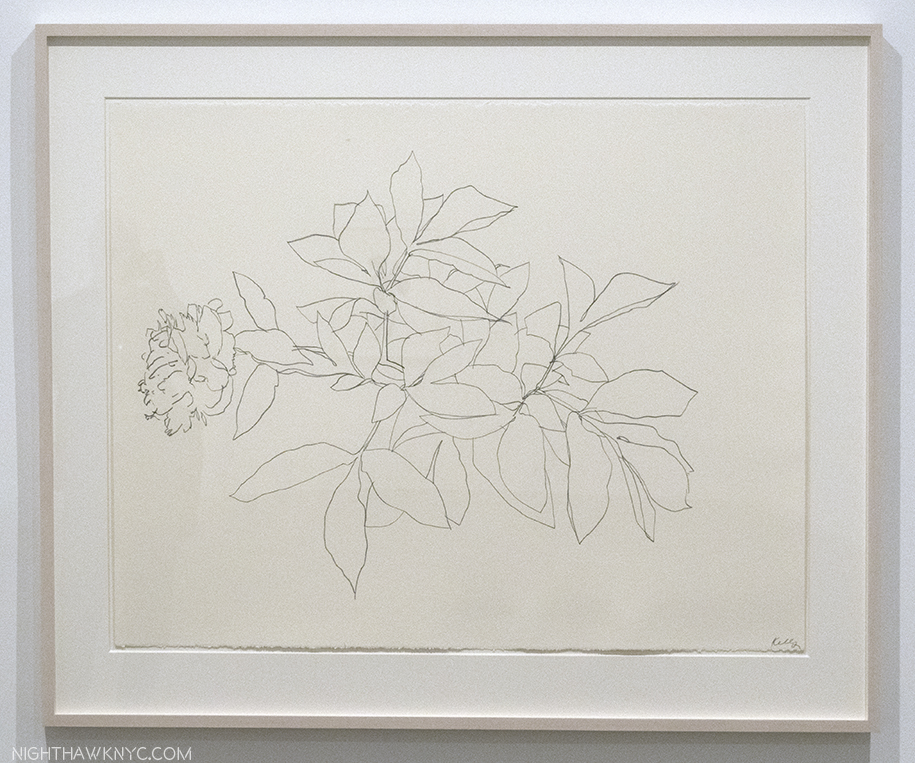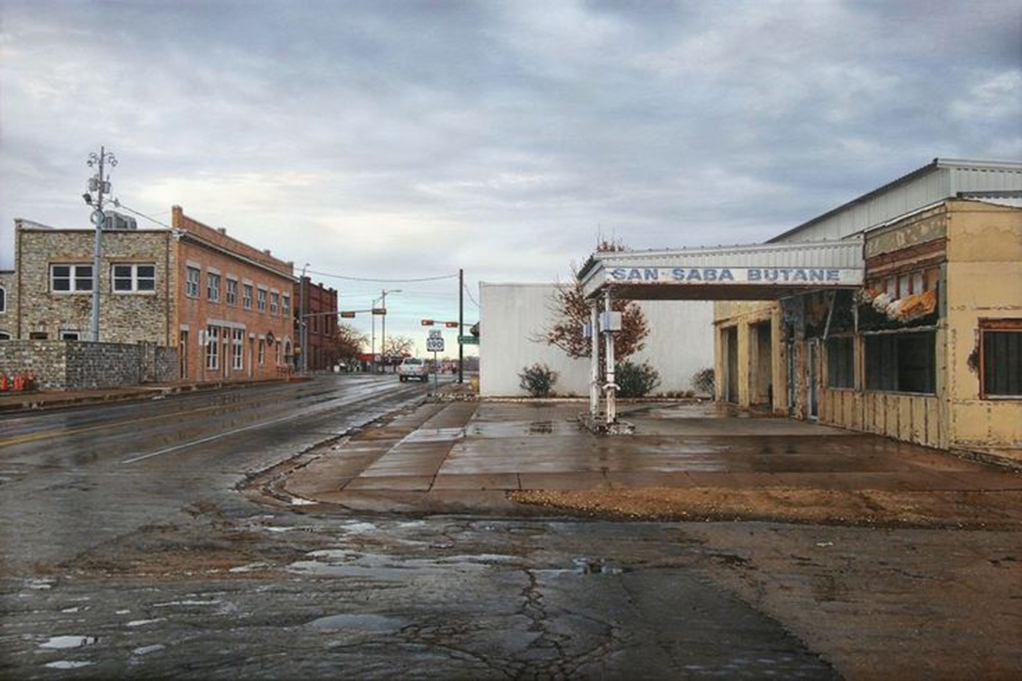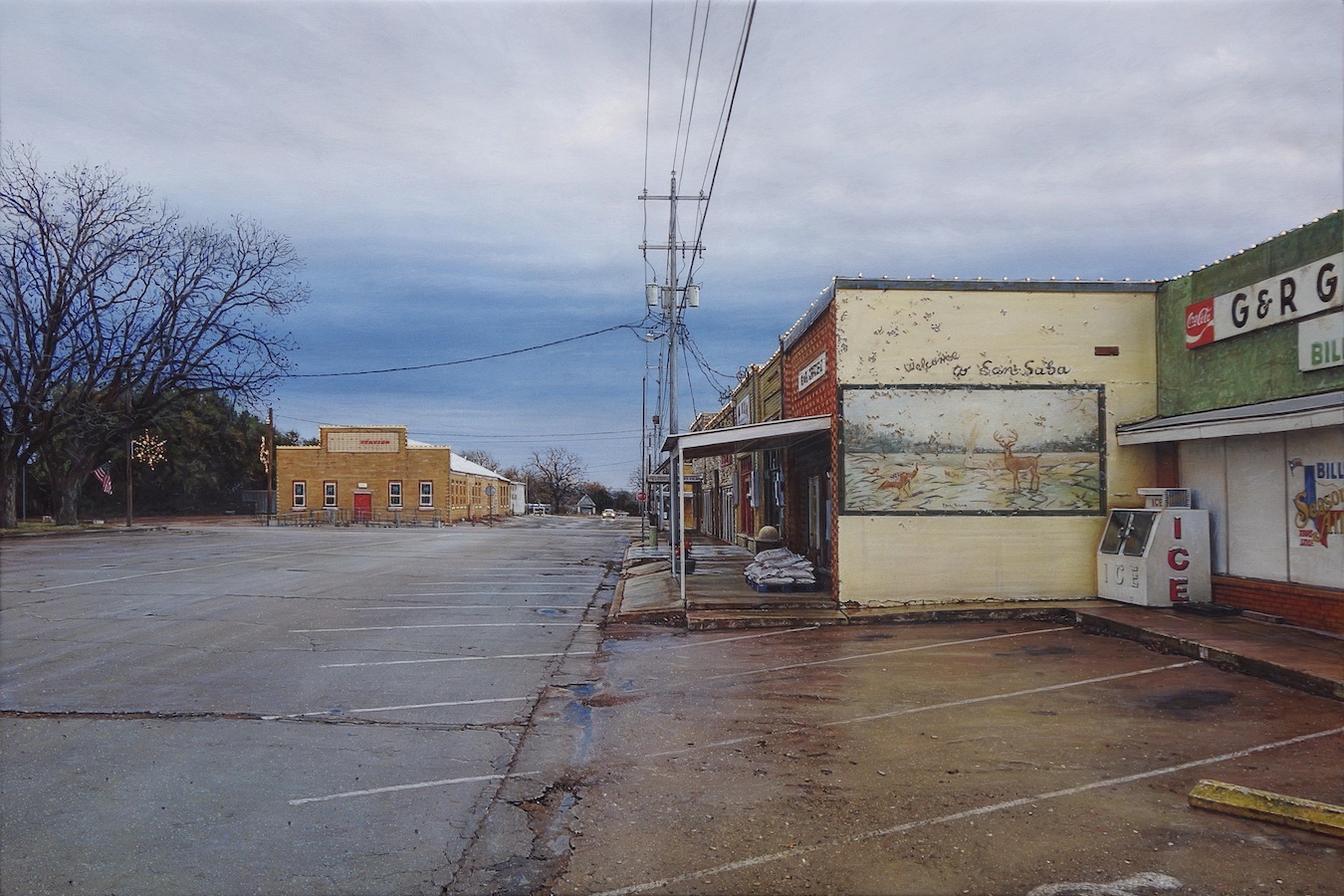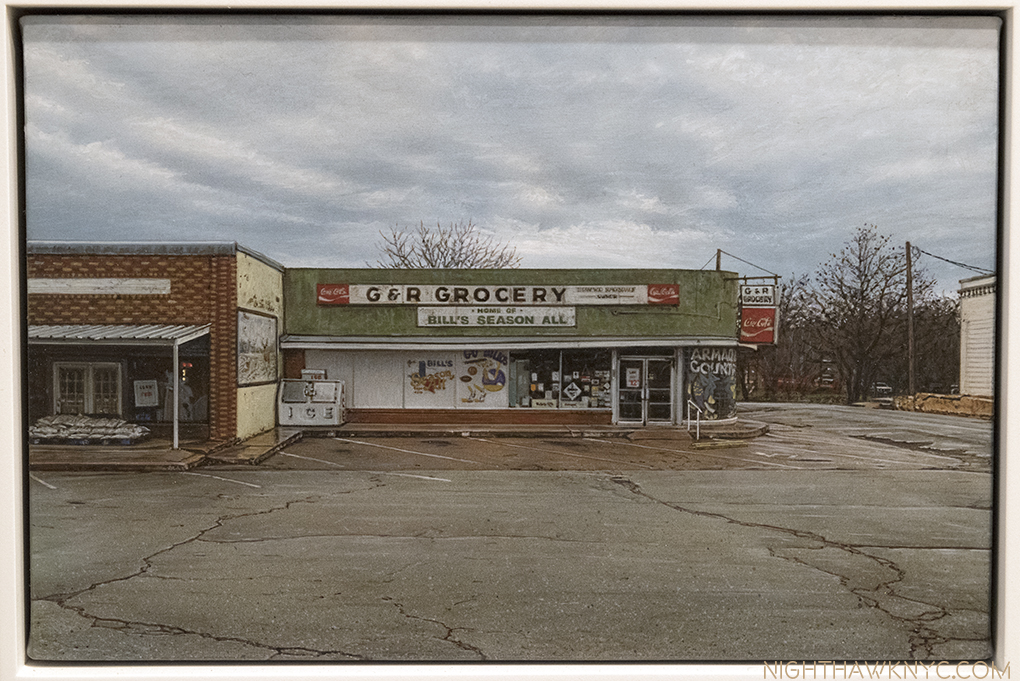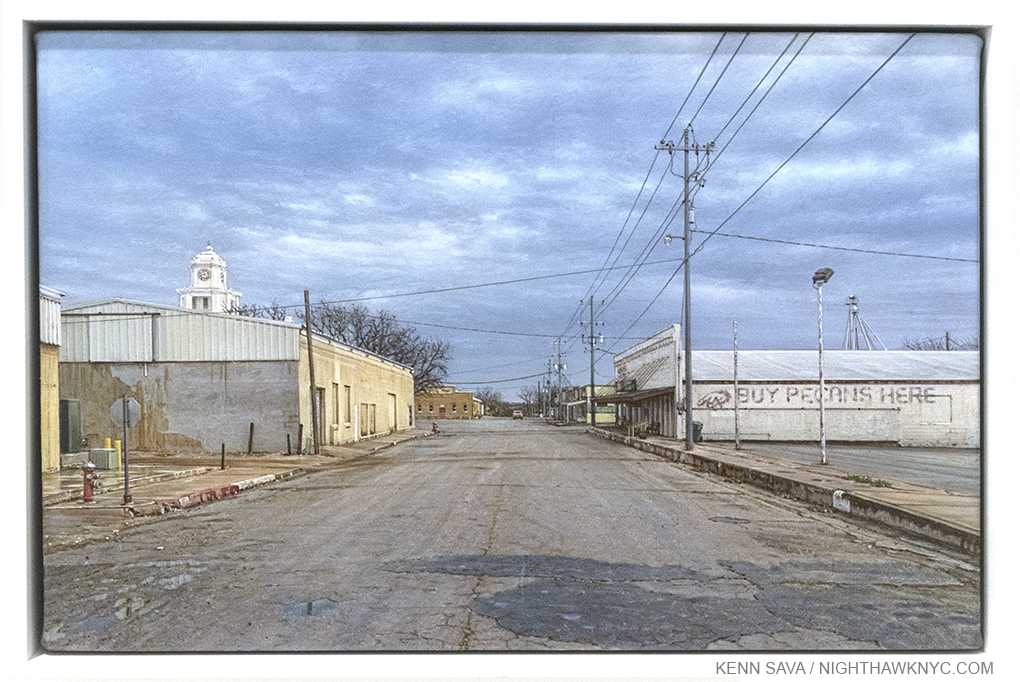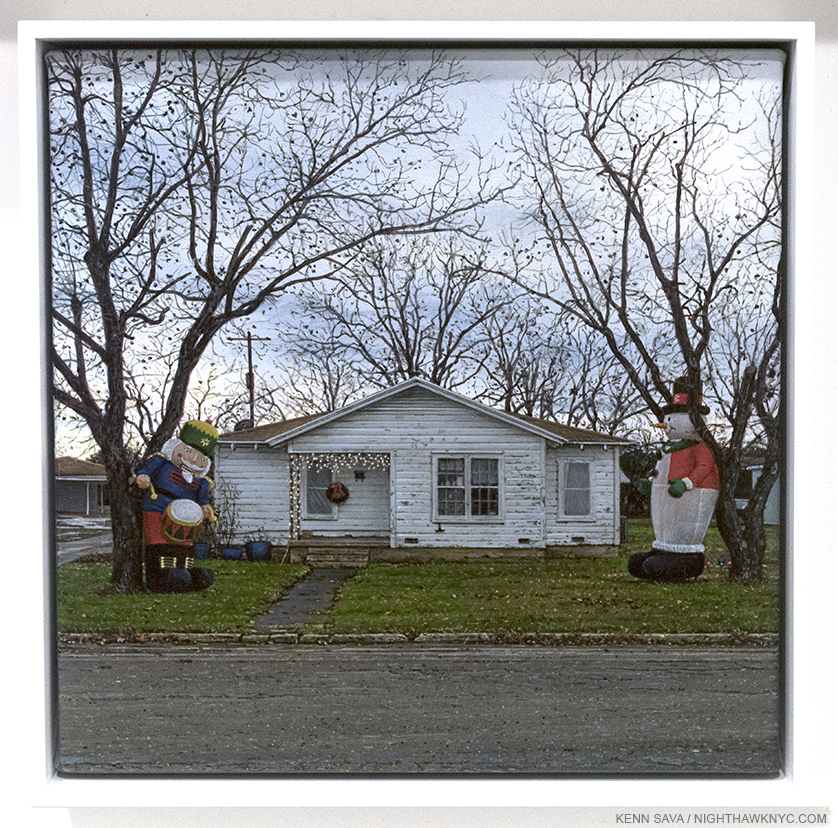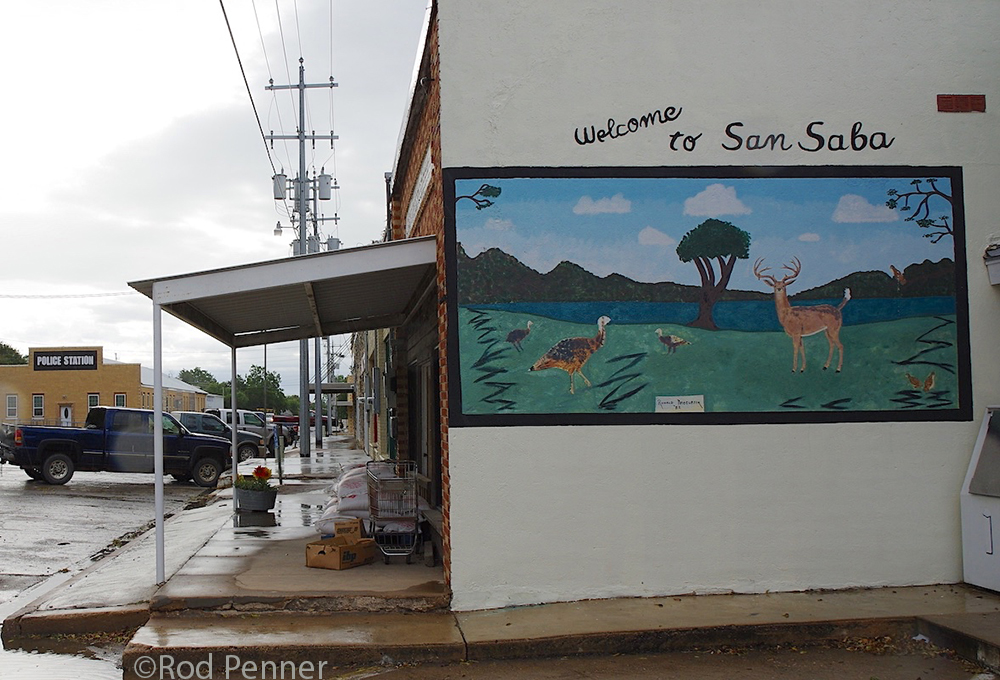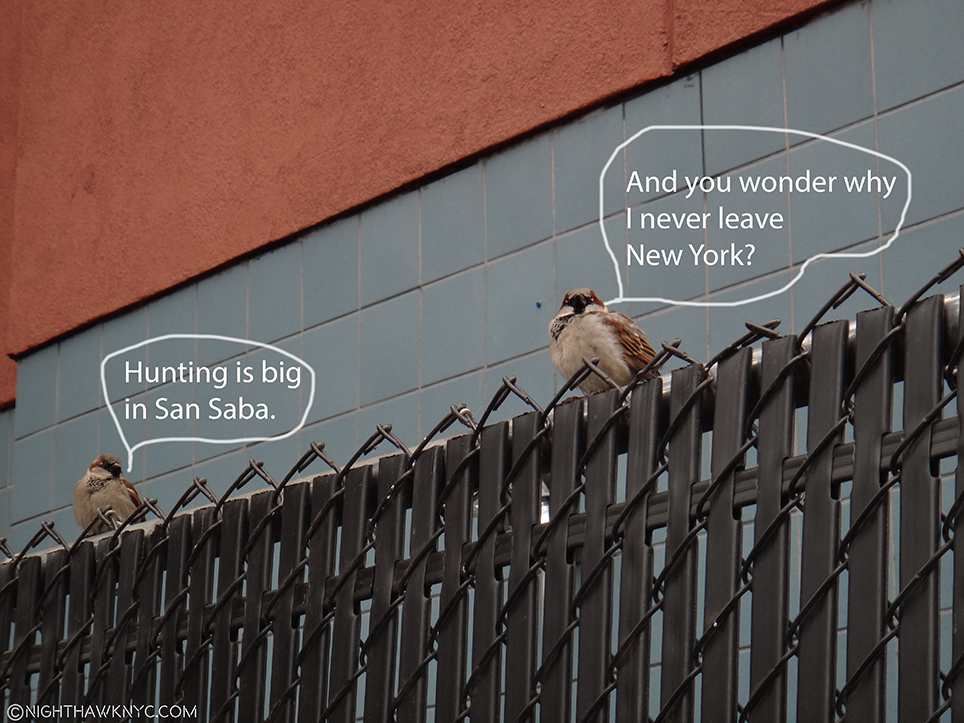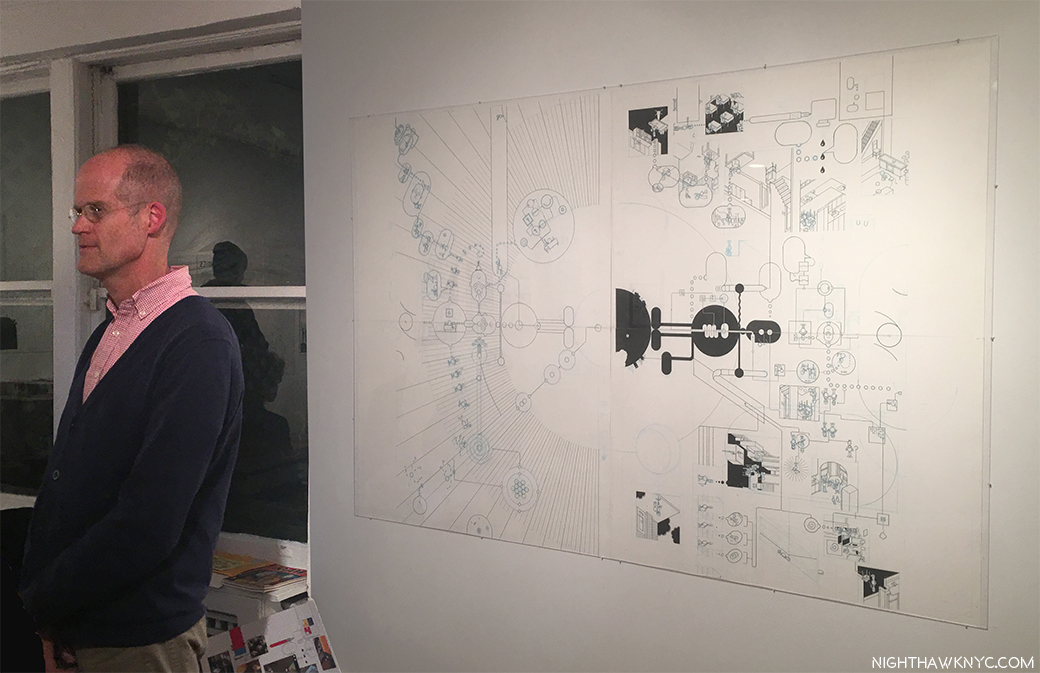
Chris Ware stands in front of the original Art for the covers of his new book, Monograph, at the opening for the show of the same title at Adam Baumgold Gallery on November 10, 2017. Click any Photo for full size.
Chris Ware has been universally respected among his fellow Cartoonists & Graphic Novelists for quite some time. At this point, it’s becoming relevant to consider his place among ALL his peers, including the all-time legends. Now, he has made that a much easier thing to assess with the release of his new book, Monograph, a gorgeous, and, (typically) meticulously well-done, Rizzoli mid-career autobiography and retrospective in one. But before anyone else can begin to assess his accomplishment through it, no less than Art Speigelman, one of those enduring masters of Cartons & Graphic Novels in that pantheon of legends, calls him “the World’s Smartest Cartoonist,” in his Introduction to it. After he, his wife, Francoise Mouly, the Art Editor of the New Yorker & an Independent Publisher, and Ira Glass have their say up top, the rest of it is so well done, I don’t think there’s a better case to be made for his accomplishment. Take that, future biographers/monographers! For the rest of us, no matter how closely you’ve followed Chris Ware, you’ll find known favorites alongside much that is previously unknown, including a surprising amount of detail about Mr. Ware’s life along the way.
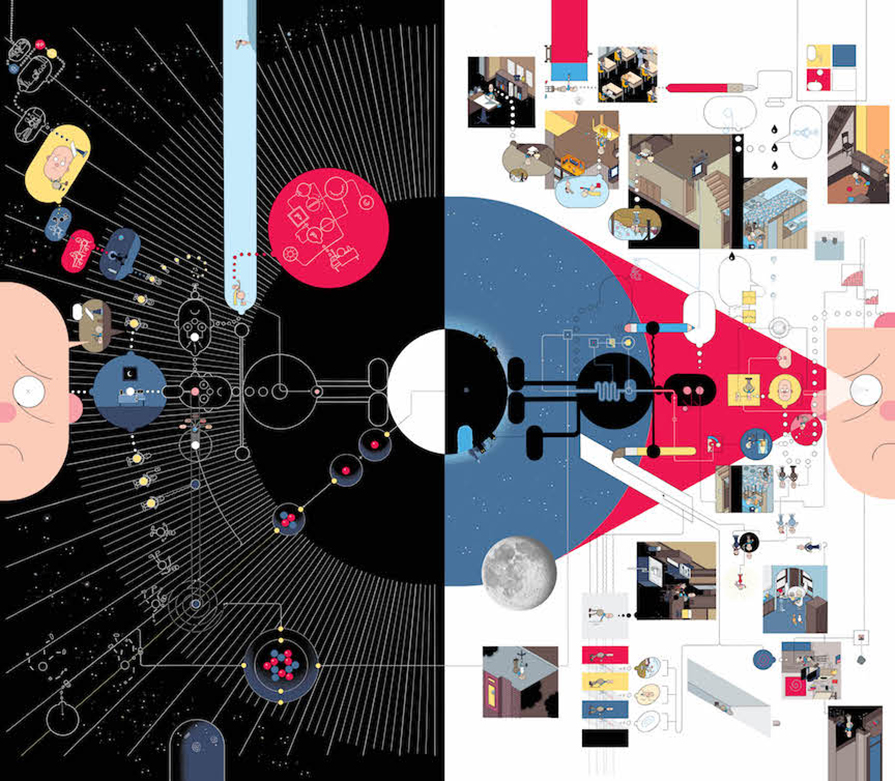
“Good cartoon drawing is good design.” Charles M. Schulz, the creator of “Peanuts,” said in 1997. The published covers from the Drawings, above, for Monograph, 2017. Front cover, right side, and back cover, left. Their “meaning?” Perhaps, that there’s a lot going on in that head…Inside (between the covers).
Speaking of what might be going on in that head, along the way, Monograph’s 280 pages also provides the best evidence that Chris Ware is a bit of a throw-back in his tastes in Art, Cartooning, Music & Architecture, a side that co-exists with, and informs, the visionary that is given to flights of fantasy, usually involving the past or the future, often without notice. They all coalesce in Art that, at times, could be mistaken at a distance for an Architect’s plans, as seen above.
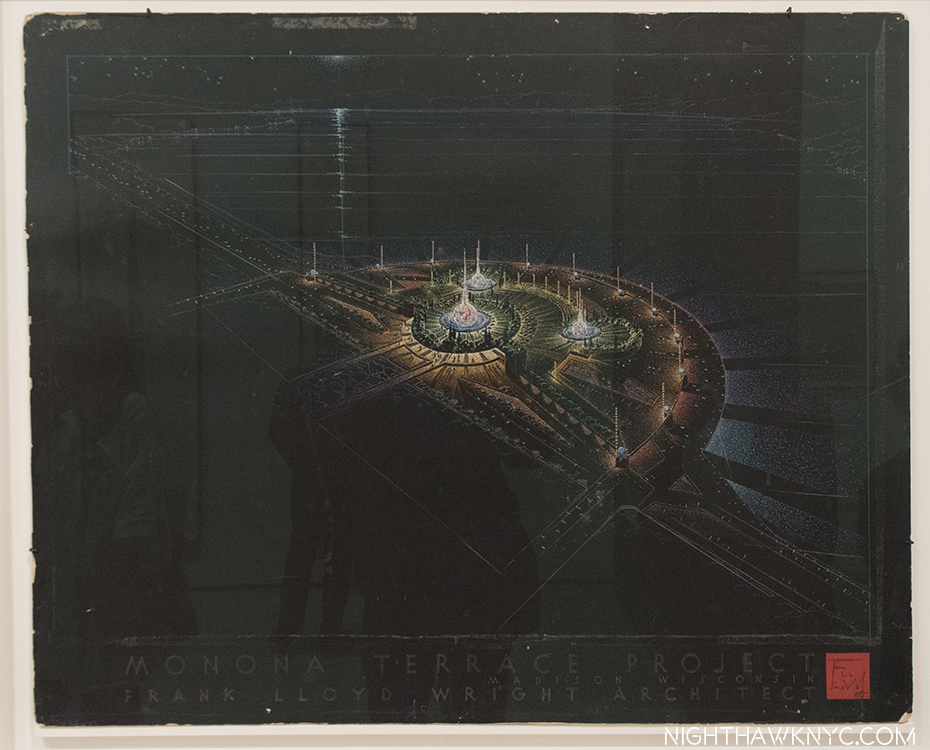
An echo? Speaking of Architects, Frank Lloyd Wright, “Madison Civic Center (Monona Terrace)” Night View, 1955, Ink on paper presentation drawing. When I first saw Monograph, this drawing by Wright, recently on view at MoMA, came to mind. Chris Ware lives near the early Frank Lloyd Wright houses in the Chicago suburbs.
By now, none of this is news to anyone who has seen his work over what is already 30…Can it be? Yes, it is…30 years! What’s lesser known is that, personally, he’s also an enigma. I’m only 15 years in myself, yet, what I still have trouble getting used to is that along with all the things Chris Ware is, he is, on top of it all, endlessly self-effacing.
I don’t think it’s an act.
Take a look at his expressions and body language during his first national television appearance, November 13th, on one of the last episodes of Charlie Rose, which is, also, a good introduction to him. Note the 5:07 mark, for instance-
For the past 15 years he’s been telling me off and on that his original Art, which now sells for upwards of many thousands of dollars per in galleries, “is easily disposable.” First, he said it in 2002, after Jimmy Corrigan: The Smartest Kid on Earth came out. Just this past week, he said it again. Standing in the middle of the opening of his newest show at Adam Baumgold’s East 66th Street gallery. I had commented on the fact that he is his best and most astute collector, and asked if he was planning to open a museum. He replied by talking about disposing of it.
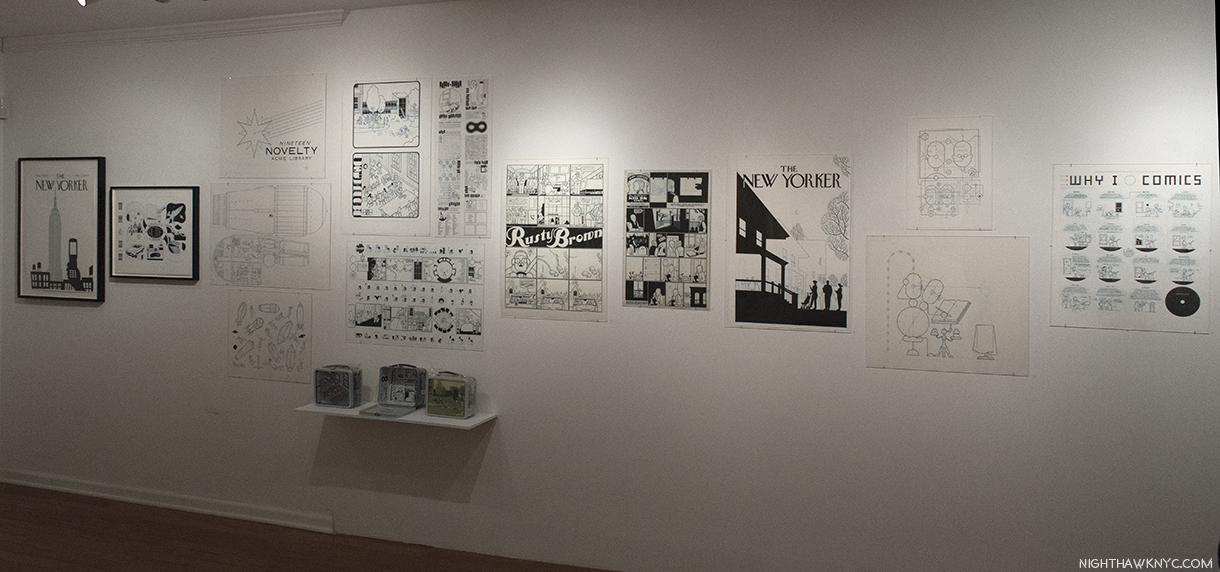
From left to right- Art for “Hold Still,” an iconic 2005 New Yorker cover, Art for the Acme Novelty Lunchbox, a page of Rusty Brown, subject of his next book, a very early “Jimmy Corrigan” page from Acme #1, two Self-Portraits, and a page that appeared in the New York Times Book Review in October, 2015, far right. Mr. Ware’s Original is titled “Why I O Comics.” I heard he wasn’t pleased that the Times published this with the heading “Why I Love Comics.” All of this Art is, or was, part of the collection of Chris Ware.
All I could do was shake my head and nervously smile when he said it, again, because he can’t be serious. CAN HE? Taking no chances, I did the only responsible thing I could. I told him to call me first. Then, I looked for “answers” in the show, and in Monograph, itself.
The museums will, also, come calling one of these days. I have no doubt of that. In my opinion, they should have, already. I’m referring to his work being in the permanent collection of MoMA, The Met and The Whitney, and the other big museums around the world. To be fair, the Whitney Museum did include Chris Ware in their 2002 Biennial, when he was the first cartoonist ever invited, and was given an entire gallery where about 48 works, by my count, were on view. They even commissioned him to create the poster for the show. He has, also, been included in important shows at other museums, at NYC’s Jewish Museum, and the Museum of Contemporary Art, Chicago, both in 2006, and elsewhere.
During this latest encounter, we stood in the midst of the opening for his newest show with Mr. Baumgold, for Monograph. The rooms were filled with original Drawings by Mr. Ware going back to the late 1980’s, when he was 20 or 21 years old, works that even his most avid readers have not seen, or probably even knew about.
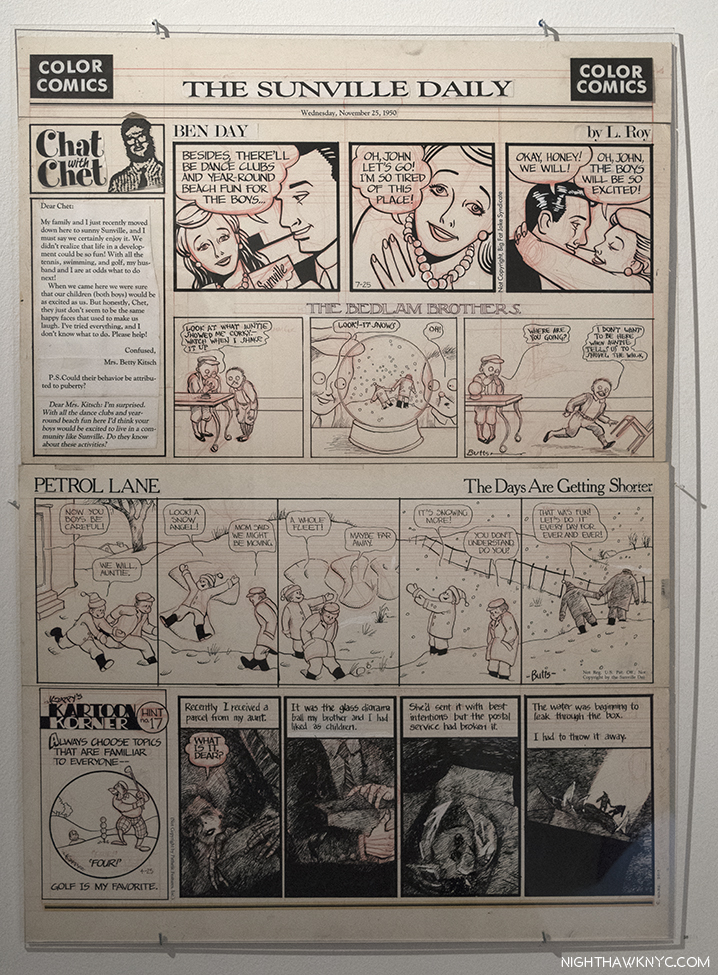
“The Sunville Daily,” 1987, Ink and red pencil on paper. By Chris Ware at about age 20. Looking very closely, you’ll find elements of his later work, but, overall, this is shockingly different from everything that came after.
The fact that he’s kept a good number of his earliest work that those long time readers have never seen, proves that he attaches at least some value to them, himself, and I have a hard time believing it’s only sentimental. Chris Ware has a professor’s level knowledge of the history of cartooning (as seen here), as well as an acute awareness of its current state, witness the expert (yes, expert) contributions he’s made to books on George Herriman and Daniel Clowes, as well as the astute quotes bearing his name that appear on many new and notable graphic novels, including being front and center on the front cover of, perhaps, the most auspicious debut of 2017, Emil Ferris’ “My Favorite Thing Is Monsters,” which I wrote about here. Of course that eye is applied first, foremost, and probably, most critically, to his own work.
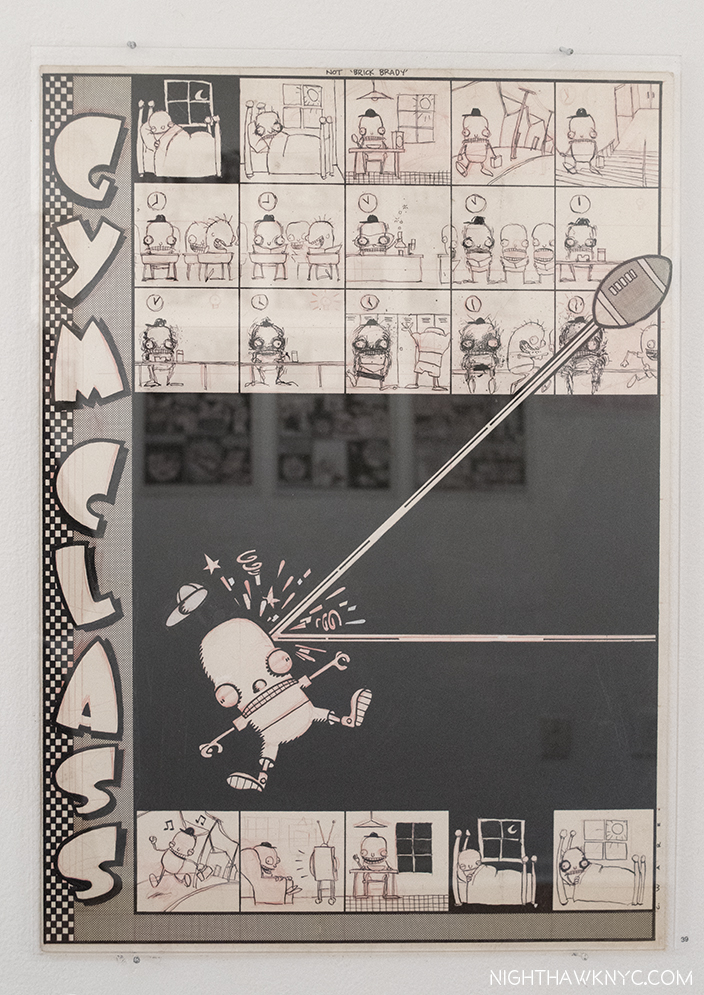
Athletically challenged. “Gym Class,” 1987, Ink and red pencil on paper, depicts some of the dread, and possibly, the bullying, he dealt with in school. One of the earliest works in “Monograph,” elements of his now “classic” graphic style appear, and are already confidently rendered. A key point in Chris Ware finding his direction. (That’s a reflection from across the gallery above the center character’s head. Sorry.)
Mr. Ware came to fame with the release of his first full length book, the graphic novel, Jimmy Corrigan: The Smartest Kid Alive, in 2000. It won the Guardian First Book Award in 2001, an award that considers not only graphic novels, but ALL books released during the year. The glowing reviews served to highlight the fact that there had, literally, been nothing like it to that point. The graphic novel had seen its first big breakthrough in underground and non-superhero comics, perhaps, since Art Spiegleman’s Maus, the Pulizer Prize winner in 1992. Seven years in the making, it’s possible to watch his style solidify over its 380 unnumbered pages. Almost as soon as it was released, Chris Ware’s name had been made. When I first saw it, I knew from the one of a kind dust jacket that opened out into an amazingly intricate double sided poster that here was a truly unique book. 16 years later? A well worn copy is still near to hand. It’s a book that doesn’t reveal all its secrets in one reading. Every time I pick it up I still find new things, new threads, I’d previously missed. I’m not alone. “Jimmy Corrigan” has given rise to a continuing stream of critical examination, theorizing, analysis and speculation.
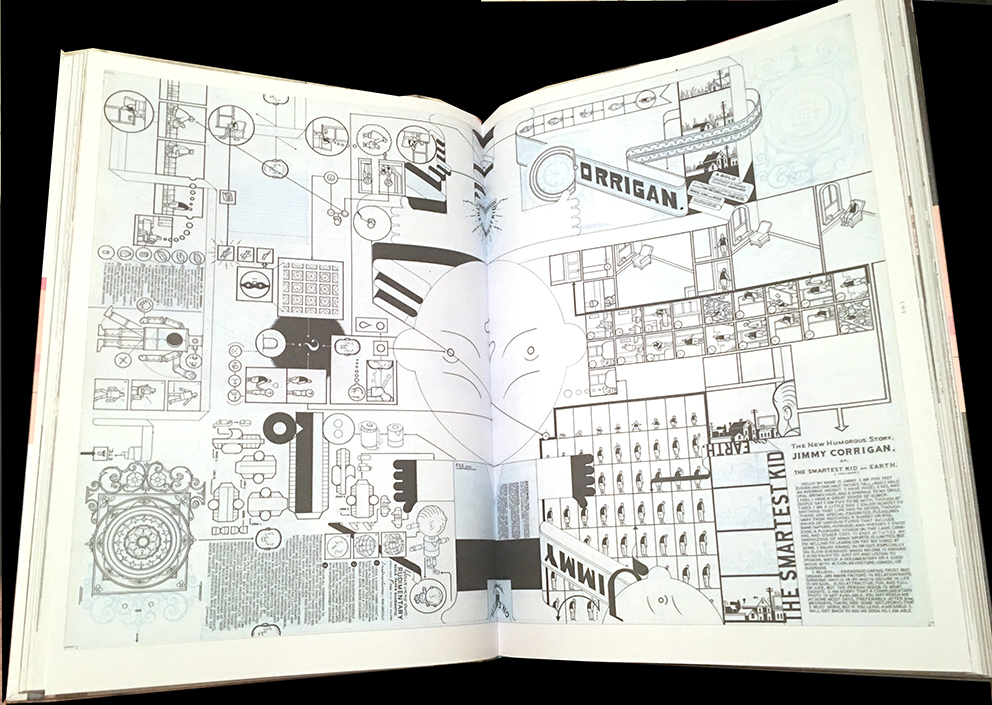
The original cover Drawing for the front of the remarkable folded book jacket/double sided poster for Jimmy Corrigan as seen in Monograph.
“Reading him, I always have the feeling that the pages aren’t big enough for everything he’s trying to squeeze into those orderly rectangular panels.” Ira Glass, Monograph Preface.
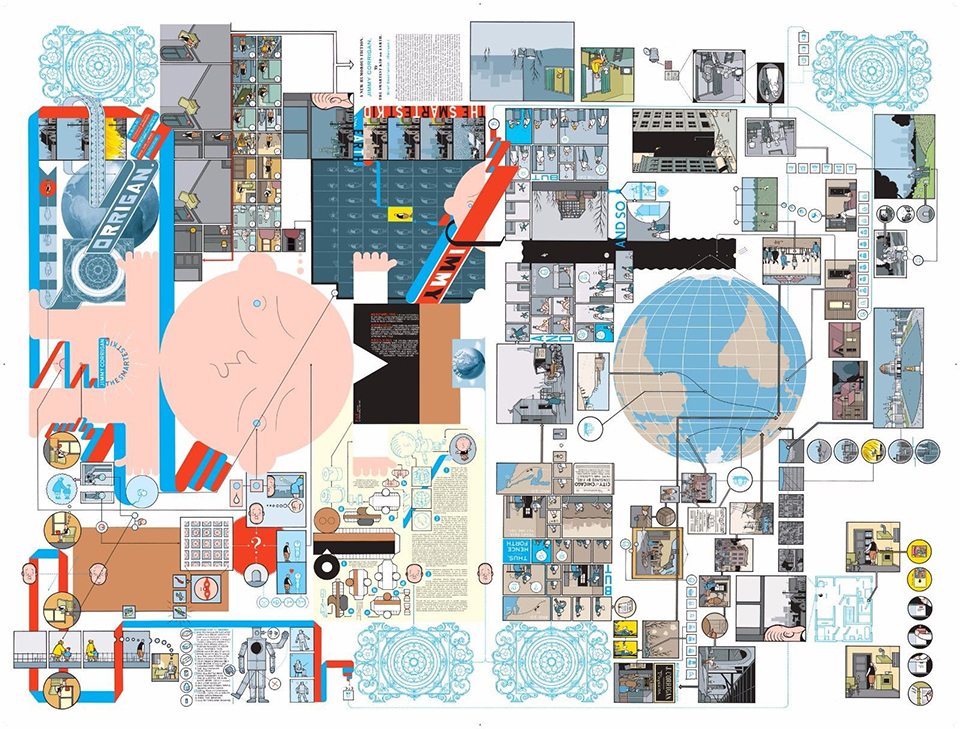
A flat of the whole, double sided cover, in color. The Drawing reproduced above is the left half of this image. Little discussed (perhaps because it’s the back of the cover/poster), the right half contains the story of Jimmy’s ancestors, including his African-American ancestors (one seen being sold as a slave), which were unknown to him. Some see commentary on the “imperialistic” nature of American colonization and the idealism of the “American dream” in the story of Jimmy’s ancestors as well.
Jimmy Corrigan turned out to be semi-autobiographical. In it, Jimmy gets a letter and phone call out of the blue from the father he’s never met suggesting they meet over Thanksgiving. Before going, he tries to imagine him and what impact knowing him would have on his life. When he finally meets him, he discovers he’s nothing like he imagined him to be. He also meets his dad’s adopted African-American daugther, Amy, who Jimmy had no knowledge of.
Some time after it was published we learned that Chris Ware, himself, never knew his father growing up, until finally meeting him, once, mid-way through writing Jimmy Corrigan. Sadly, the elder Mr. Ware passed away shortly before the book was finished, without ever having seen his son’s close-to- home masterpiece. Later, Chris Ware said that “I didn’t spend that much time with him. I added it all up once…I knew my father for just about five hours1.” That’s about as long as it takes to read it, something that is on my mind when I re-read it now, which I prefer to do in a single sitting to really feel that length of time pass. Through the mastery of his creativity, and the unique ways the characters are depicted, the work becomes more than a story, “more,” even, than Art. It’s also a record of the moment to moment thoughts, hopes and dreams of 4 generations of the Corrigans, and their reactions to events as their lives unfold before our eyes, across time. Reactions that most often include little, even no, inter-action. Almost every character in it is, mostly, cut off from every one else. In that sense, it’s also a classic of isolation, a meditation on its eternal nature (across generations)- Every character in Jimmy Corrigan suffers from extreme isolation and loneliness. Unlike the hard-core lonely, who have given up on the human race, every character longs for it to end. At least in Chris Ware’s work, life always happens in spectacular rendering, in color that speaks its own language, and with gorgeous, ever-surprising design.
Back at the show, increasingly sought after, only one Jimmy Corrigan original page, (from the Acme Novelty Library #1, which predates the book), was on display, but it was a good one, that succinctly sums up what I said about the book, itself.
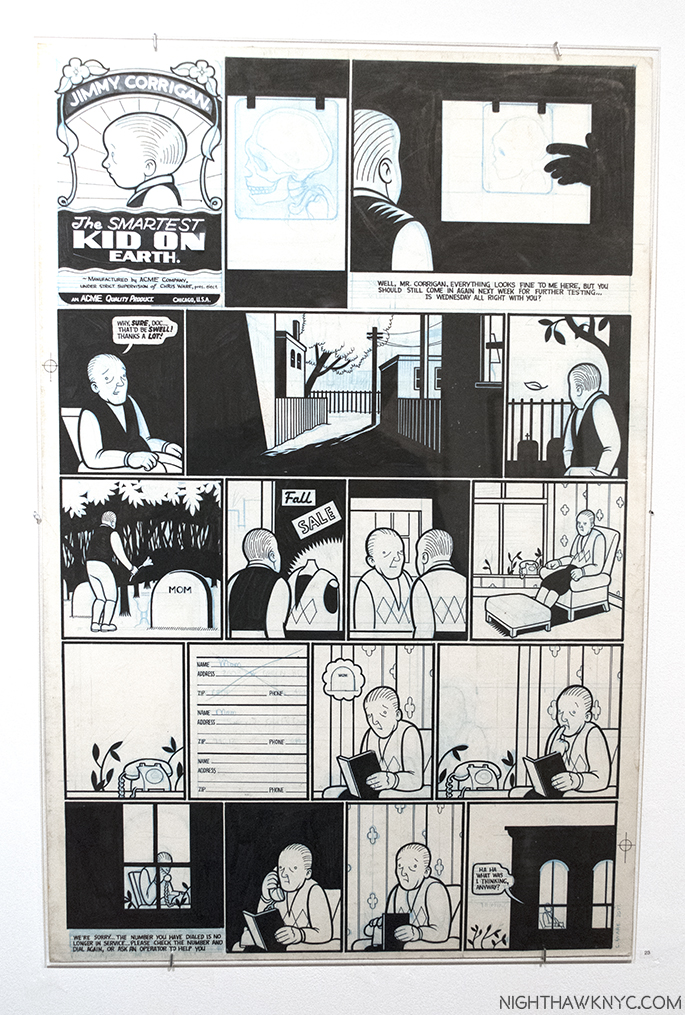
“Jimmy Corrigan, Calling Mom,” Acme #1, 1993, Ink and blue pencil on paper. This page, from the first year he drew Jimmy didn’t make it into the final “Jimmy Corrigan” book, though it captures much of the poignancy of it.
While Chris Ware is well-known as an admirer of the great George Herriman and his “Krazy Kat” strip, having done the cover art for the 13 volume reissue of what many, including he, consider the greatest comic strip of all time, his influence lives on in Mr. Ware’s own ground-breaking graphic design, which builds on “Krazy Kat’s” Sunday full pages, that Mr. Herriman treated freely, like a blank canvas, when it came to laying out his stories. Over the past 30 years, it’s been taken to the point that it has become one of his trademarks. Along with George Herriman, Charles Schulz and his “Peanuts” cartoon strip that ran for 50 years are another major influence on Chris Ware. “Charles Schulz is the only writer I’ve continually read through childhood and into college2.” Charlie Brown, who Mr. Ware calls “the first sympathetic cartoon character3,” is the predecessor of Jimmy Corrigan. Interestingly, the final Peanuts strip ran on February 13, 2000. After serializing the story in the early 1990’s, the first edition of the completed and collected Jimmy Corrigan: The Smartest Kid on Earth was published on September 12, 2000.
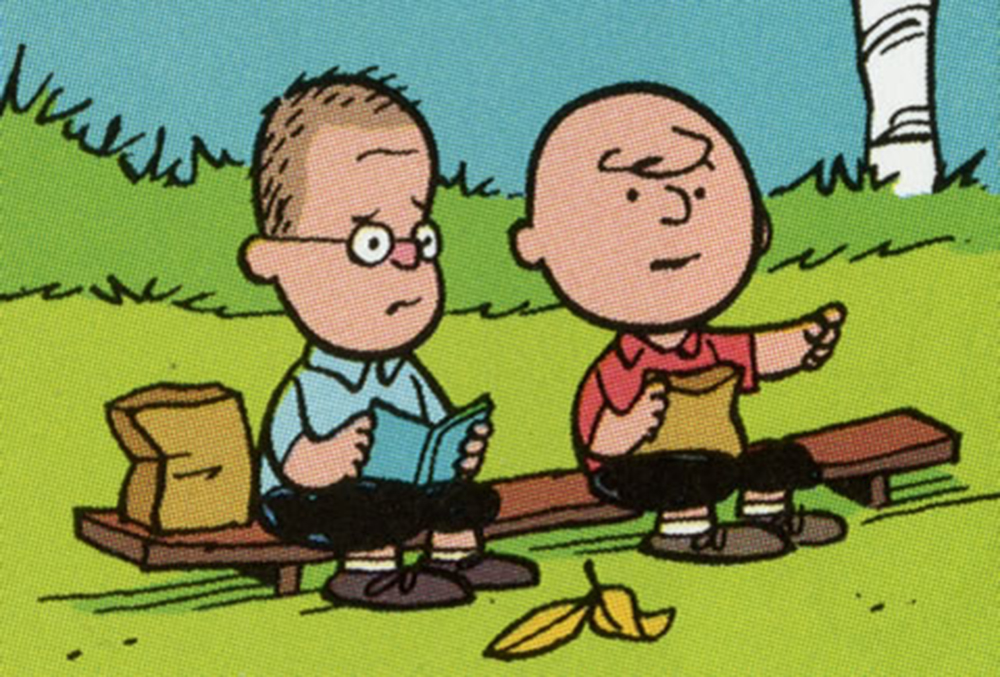
Learning at the elbow of the master. Chris Ware included this self-portrait in his “Tribute” to Peanuts after their final strip in 2000, ending by paraphrasing Mr. Schulz final panel- “How could I ever forget them?” The complete strip is reproduced in Monograph.
In the years before and after Jimmy Corrigan, Mr. Ware developed a whole slew of characters, that appear sporadically, only some of them “human.” They range from “Quimby the Mouse,” and “Branford the Bee” to “Rusty Brown,” and “Rocket Sam.” But, in the end? It seems to me whatever lifeforms they are doesn’t matter a bit. It only serves to make them seem “uncannily human” to the reader.
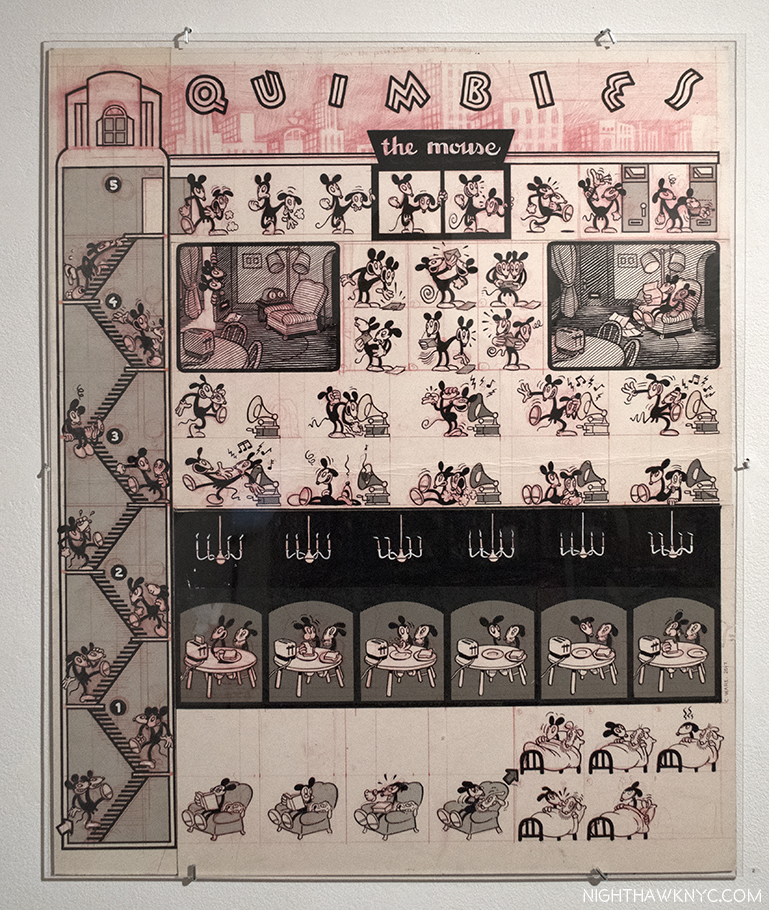
“Quimbies the Mouse,” 1990, Ink and red pencil on paper. Later, he would lose the “siamese” aspect and it would just be “Quimby the Mouse.”
These appeared in the (shorter) installments of the Acme Novelty Library, released sporadically over the years. Mr. Ware’s full length books take him so long to create we’re lucky to get one per decade. There must be something in the water in the Chicago burbs because Monograph is second for this decade. And? At the show, he was speaking about ANOTHER book, to be released in 2018, “Rusty Brown, Part 1.” And though Zadie Smith commented “There’s no writer alive I love more than Chris. Ware. The only problem is it takes him ten years to draw these things and then I read them in a day and have to wait another ten years for the next one4.” it may take even Mr. Ware’s most devoted reader more than a day to work their way through Monograph 280 pages that are jam-packed with almost as many details as this image of the Milky Way.
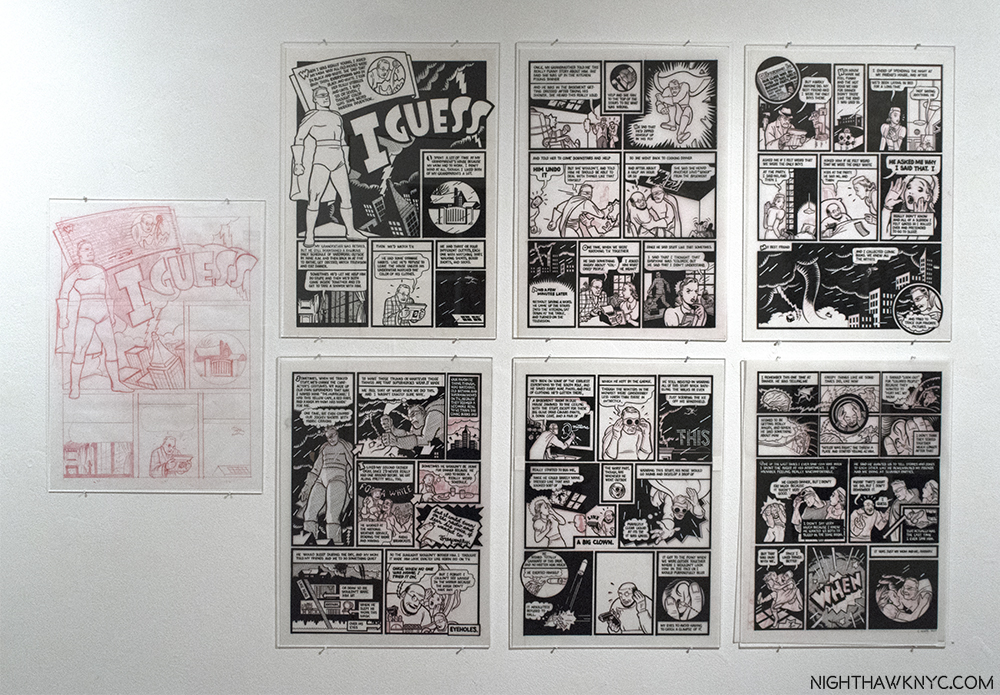
Monograph’s surprises include this six page story including the red pencil underdrawing on paper he was using at the time. “I Guess, (from RAW Volume 2, No. 3, 1991),” 1990, Ink on mylar, red pencil on paper.
Over the years, Mr Ware has created books that range in size from miniatures to the gigantic, even one with a multitude of sizes (14) in one (the award winning Building Stories, 2012). Now? He has outdone himself. Weighing in at over 9 pounds and measuring 18 by 13 inches, it’s fitting that this mid-career Autobiographical Retrospective is large enough to mirror his achievement. In this case, Monograph needs to be this big. Trying to read the detail in something like the folded book jacket for Jimmy Corrigan, above, would be neigh impossible in a smaller size.
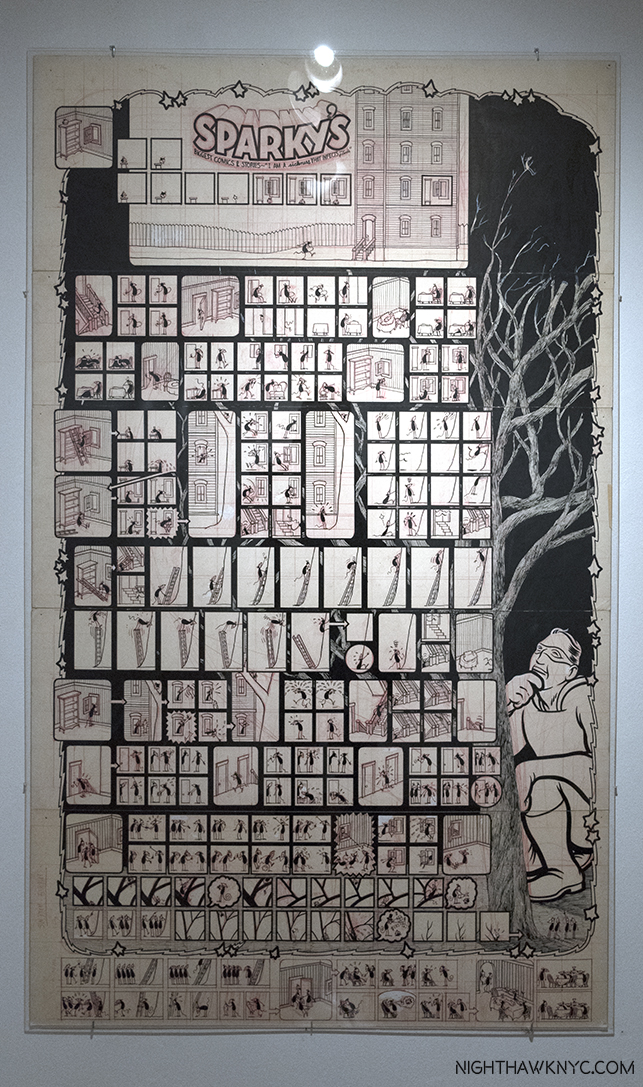
Speaking of gigantic. “Sparky’s Sparky Is Best Comics and Stories (I Am a Sickness That Infects my Friends.),” 1991, Ink, red pencil on paper, 50 inches tall(!) by 30 wide.
As for what else Monograph contains, Mr. Ware’s work has appeared on 23 New Yorker Magazine covers, almost every one of which eschews his “intricate” graphic design (the most recent one, in September, 2017, I wrote about, here), while also holding the distinction of being the very first “cartoonist” to have his work serialized in the New York Times.
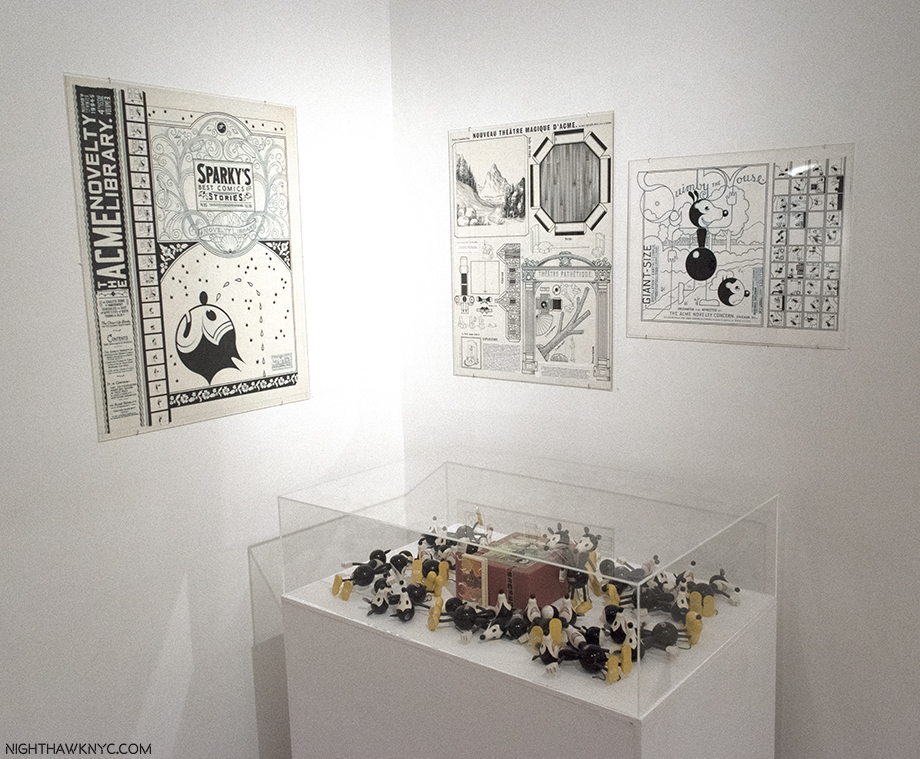
The devil is in the details. Chris Ware is, also, endlessly fascinated with stand alone characters, especially hand-made mechanical examples. “Quimby the Mouse,” was incarnated as a wooden toy a while back. Unfortunately, the manufacturer painted every one of his eyes wrong. So? Mr. Ware grabbed the 14 of them in the vitrine and correctly hand painted each eye. Shown with the original Art for their box cover.
After Jimmy he continued to release regular installments of his “Acme Novelty Library,” along with smaller books, including “Lint,” two volumes of excerpts from his sketchbooks, a “Quimby the Mouse” collection, forays into mechanical figures, products and toys, book covers for others and the Ragtime Ephemeralist, an “infrequently appearing” volume devoted to you guessed it- ephemera, and scholarly articles, related to Ragtime, edited, designed and published by Chris Ware. The latest issue, from 1995, totals 256 pages! In 2011, he even broke out of the medium of print, for the first time, digitally publishing “Touch Sensitive” an interactive story from Building Stories that is still available for free download on iOS, here. In 2015, he debuted an actual internet-only work, serializing “The Last Saturday” online, here, on The Guardian’s website. Though he wasn’t a fan of technology early on, as the digital forays “Touch Sensitive” and “The Last Saturday” show, Chris Ware is a man with one foot in the past who is, surprisingly, open to selectively dipping a toe in the future, though he is an avowed lover of the print medium.
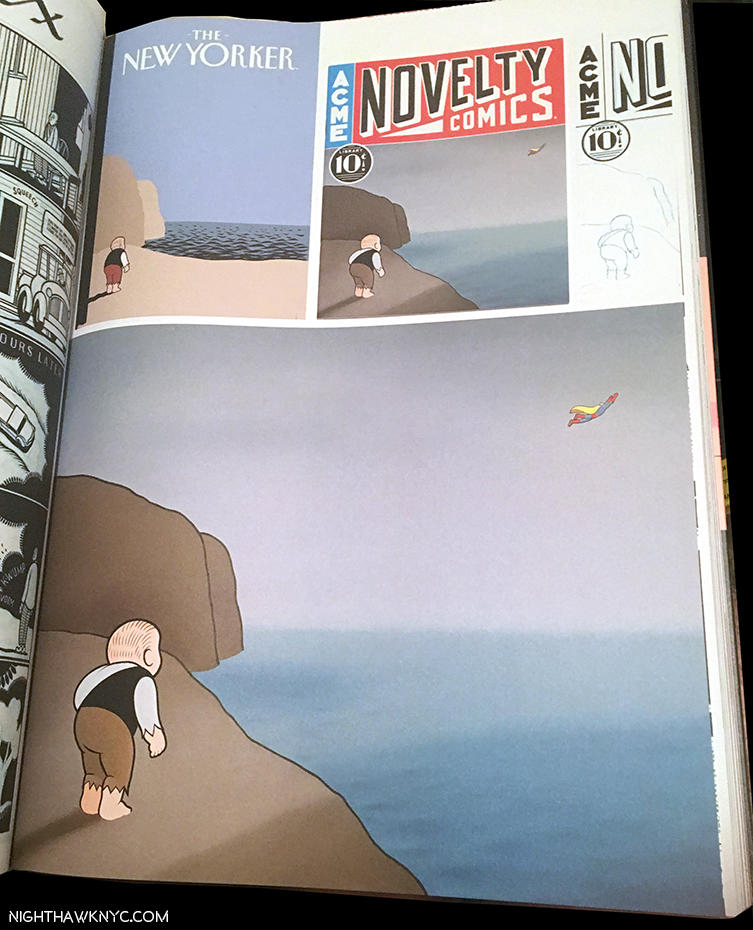
3 Views of a Secret. A rare Chris Ware Painting, bottom, the Drawing for its appearance on an Acme cover, and a version of the same piece, as a New Yorker cover mock up, all featuring Jimmy Corrigan- with, and without, Super-man.
The next milestone was Building Stories, which had been partially serialized in the New York Times, released in 2012 in a large box containing 14 publications of varying size and bindings. The order which the reader read it was up to them, thereby creating countless ways its tales could be told. Five years later, almost to the month, now comes Monograph. Its huge size is, no doubt, daunting to many. After seeing his original Art, I realized that Monograph mirrors the size of the illustration board Mr. Ware favors to draw his Art on. So, the book will provide an experience as close as is possible to seeing the actual original Art in person. As the ultimate Chris Ware (Auto)biography, it’s chocked full of historical Photos of Mr. Ware, his family, friends and associates, while its running commentary sheds new light on the path he and his Art has taken, an invaluable resource to those studying his Artistic development.
As we chatted this time, he drew two small self portraits in my copies of the Acme Novelty Datebook (his Sketchbooks), Vol 1 & 2. He seemed pleased to see them when I produced them for his signature, sketchbooks being near and dear to my heart (I made my own for many years). He mentioned that there would be a Volume 3! Later, I looked at the Drawings he did. Wow.
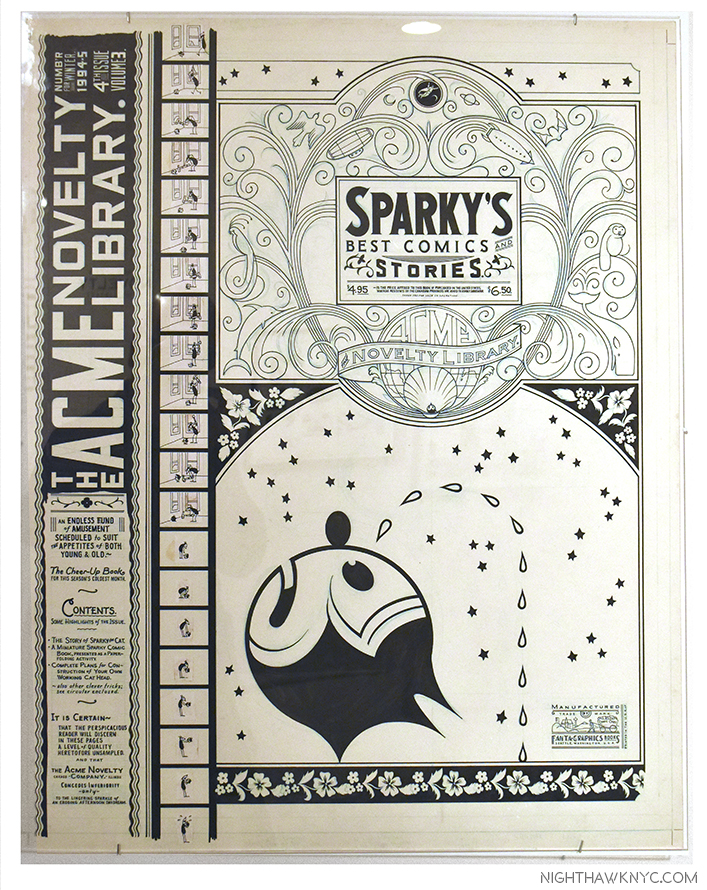
A bit reminiscent of this, which was on view in a corner across the room- Acme #4 (Sparky’s Best Comics and Stories) Cover, 1994, Ink and blue pencil on paper. What was I saying about all his characters acting “human?”
“The accolades he got he felt weren’t his, for some reason. He didn’t feel they were…deserved. And I think he didn’t feel particularly connected to the world.
He was appreciative and very, very loving about all of the good things that came his way but I think he was always mildly surprised.” Whoopi Goldberg on Charles Schulz 5
As with Charles Schulz, the creator of the most famous comic strip in history, I don’t know what lies at the heart of Mr. Ware’s self-effacement, but I hope it won’t take another 30 years for him to accept the compliments his work receives. If he continues producing the kind of work he has over the past 30 years, then, he might not have any choice but to get used to people saying nice things about his work.
Back from the show, with this question on my mind, I began to re-read Jimmy Corrigan for the umpteenth time, this time in its paperback incarnation (which has a few significant differences from the hardcover), I happened upon this beauty on the lower right back cover.
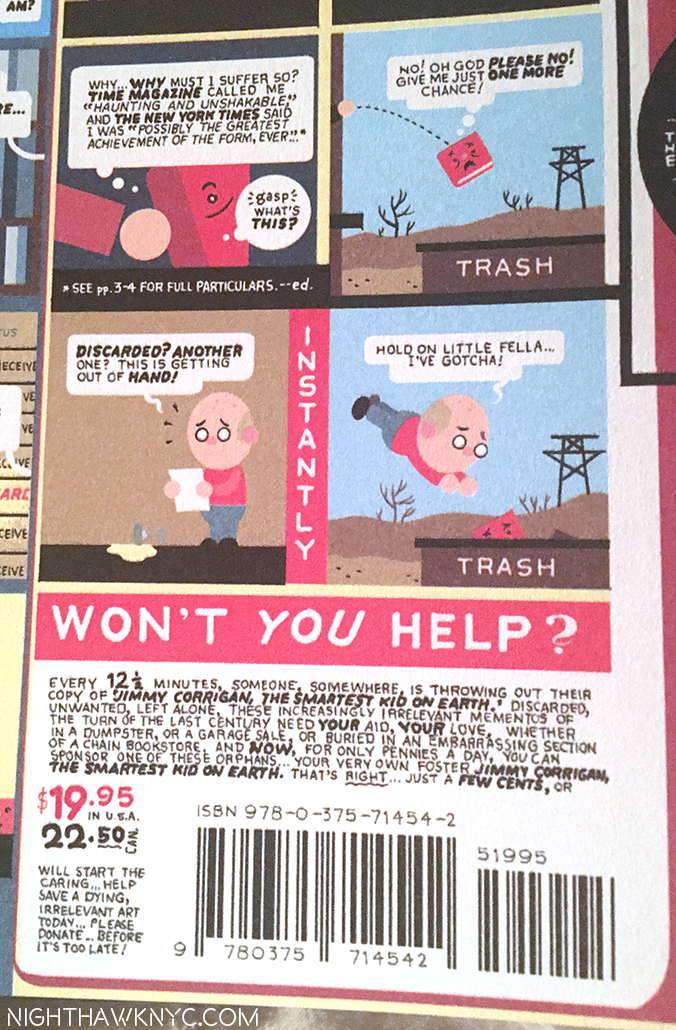
A-ha! Chris Ware dumpster diving to SAVE copies of his work that have been discarded! Jimmy Corrigan, Paperback edition, back cover detail.
I get it! I FINALLY found the answer to his self-affacement. He WANTS me to throw out his work so he can save it and re-sell it!
They’re right. He IS smart! ; )
**********************************************************************
Collector’s Note- This is something I’ve yet to see anyone point out. While I suspect that many/most of Chris Ware’s fans already have Monograph, for those that don’t, I’ve discovered something that you might want to keep in mind.
There are TWO editions of Monograph.
When I discovered it, I called the publisher, Rizzoli, and even they didn’t know what the differences were! So, I took it on myself to find out. The “regular edition,” ISBN 978-0847860883, is the one most commonly available. However, there’s also the “Bookplate Edition,” ISBN 978-0847858125, which I’ve almost always seen selling for the same list price ($60.00) as the “regular” edition. However, it contains 2 major differences. First, it comes with a small double-sided “errata” sheet that is SIGNED by Chris Ware. Second, the “errata” sheet comes tucked inside of a folded reproduction of the original Drawing for his quite rare 2002 Whitney Biennial Poster, “The Whitney Prevaricator.”
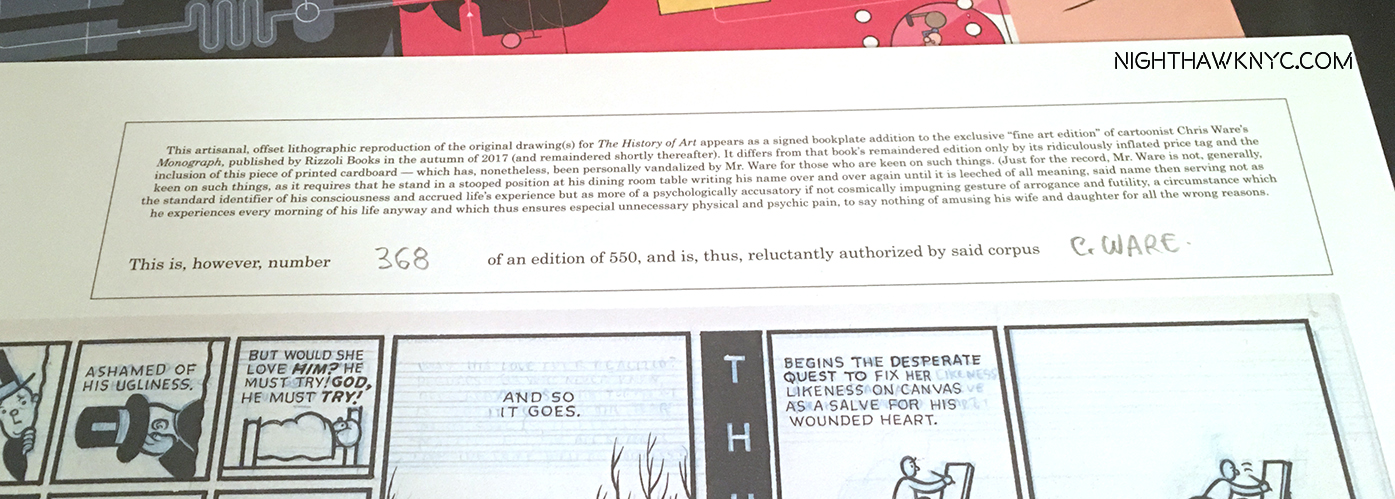
Top of the inside of the inserted Reproduction of the Drawing for the Whitney Biennial Poster. If you collect Chris Ware, I recommend you get the “Bookplate Edition,” which is signed TWICE by Mr. Ware, and includes this.
On the top of the verso of this sheet is text noting that this is the “Fine Art Edition,(referred to as the “Bookplate Edition” in the trade) of Monograph, which Chris Ware has ALSO signed, and numbered out of an edition of 550. Buyer? Be Ware. (Sorry.)
*-Soundtrack for this Post is “In The Future When All’s Well,” by Morrissey from Ringleaders of the Tormentors. Another Artist who’s work is deemed “depressing” by some.
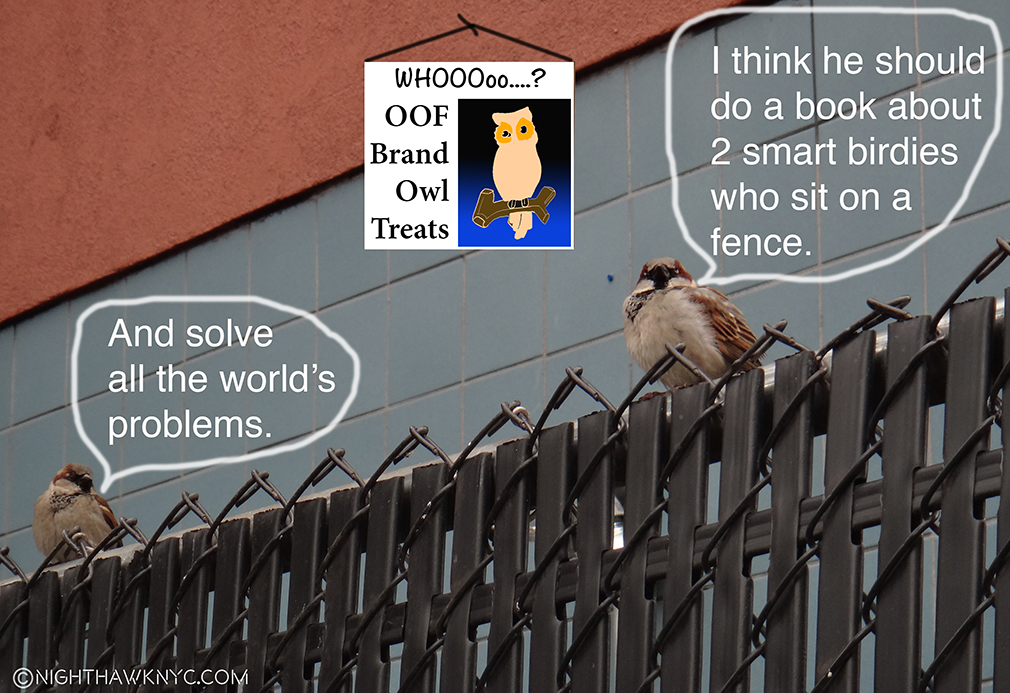
“On the Fence, #16, The Smartest Birdies…on this Fence…on April 1st…at 3pm” Edition.
You can now follow @nighthawk_nyc on Instagram for news and additional Photos!
NighthawkNYC.com has been entirely self-funded & ad-free for over 7 years, during which over 275 full length pieces have been published! If you’ve found it worthwhile, PLEASE donate to allow me to continue below. Thank you, Kenn.
You can also support it by buying Art, Art & Photography books, and Music from my collection! Books may be found here. Music here and here.
Written & photographed by Kenn Sava for nighthawknyc.com unless otherwise credited. To send comments, thoughts, feedback or propositions click here. Click the white box on the upper right for the archives or to search them. Subscribe to be notified of new Posts below. Your information will be used for no other purpose.
- http://edition.cnn.com/2000/books/news/10/03/chris.ware.qanda/index.html ↩
- https://www.theparisreview.org/interviews/6329/chris-ware-the-art-of-comics-no-2-chris-ware ↩
- http://classic.tcj.com/alternative/interview-with-chris-ware-part-1-of-2/ ↩
- Quoted on a sticker on the shrink-wrap for Monograph. ↩
- in “The Complete Peanuts, Volume 5 1959-1960, p.xi. ↩

